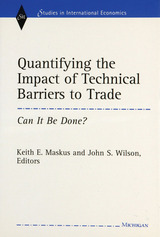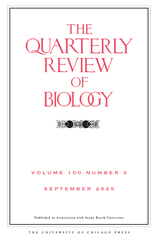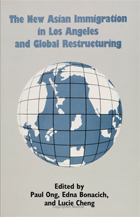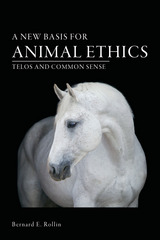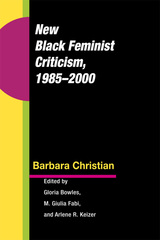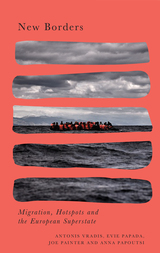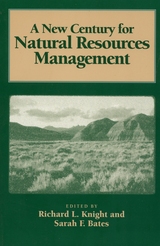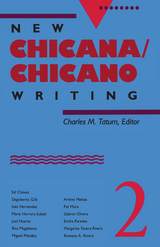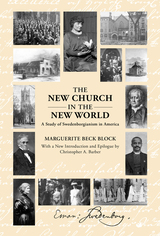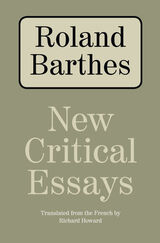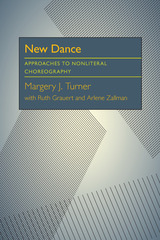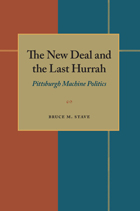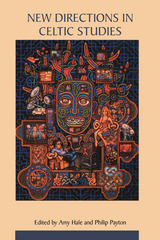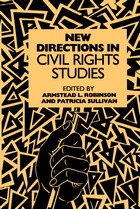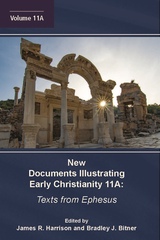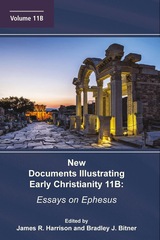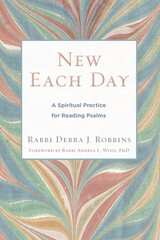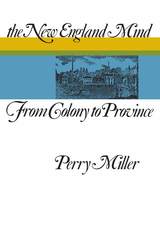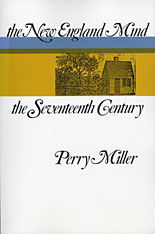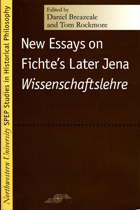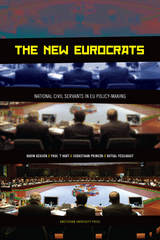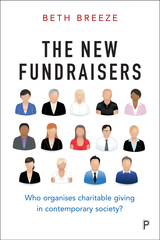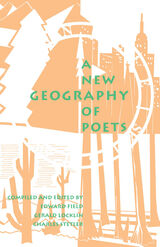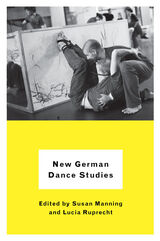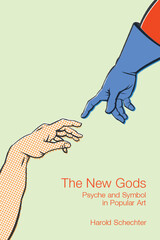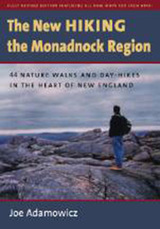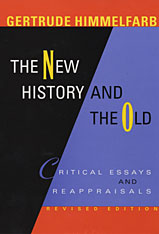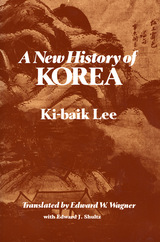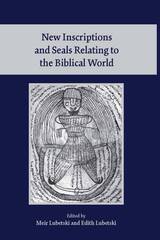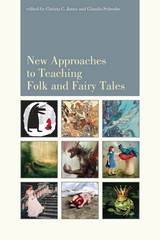 New Approaches to Teaching Folk and Fairy Tales
Christa Jones
Utah State University Press, 2016 New Approaches to Teaching Folk and Fairy Tales provides invaluable hands-on materials and pedagogical tools from an international group of scholars who share their experiences in teaching folk- and fairy-tale texts and films in a wide range of academic settings. This interdisciplinary collection introduces scholarly perspectives on how to teach fairy tales in a variety of courses and academic disciplines, including anthropology, creative writing, children’s literature, cultural studies, queer studies, film studies, linguistics, second language acquisition, translation studies, and women and gender studies, and points the way to other intermedial and intertextual approaches. Challenging the fairy-tale canon as represented by the Brothers Grimm, Charles Perrault, Hans Christian Andersen, and Walt Disney, contributors reveal an astonishingly diverse fairy-tale landscape. The book offers instructors a plethora of fresh ideas, teaching materials, and outside-the-box teaching strategies for classroom use as well as new and adaptable pedagogical models that invite students to engage with class materials in intellectually stimulating ways. A cutting-edge volume that acknowledges the continued interest in university courses on fairy tales, New Approaches to Teaching Folk and Fairy Tales enables instructors to introduce their students to a new, critical understanding of the fairy tale as well as to a host of new tales, traditions, and adaptations in a range of media. Contributors: Anne E. Duggan, Cyrille François, Lisa Gabbert, Pauline Greenhill, Donald Haase, Christa C. Jones, Christine A. Jones, Jeana Jorgensen, Armando Maggi, Doris McGonagill, Jennifer Orme, Christina Phillips Mattson, Claudia Schwabe, Anissa Talahite-Moodley, Maria Tatar, Francisco Vaz da Silva, Juliette Wood
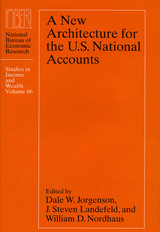 A New Architecture for the U.S. National Accounts
Edited by Dale W. Jorgenson, J. Steven Landefeld, and William D. Nordhaus
University of Chicago Press, 2006 A New Architecture for the U.S. National Accounts brings together a distinguished group of contributors to initiate the development of a comprehensive and fully integrated set of United States national accounts. The purpose of the new architecture is not only to integrate the existing systems of accounts, but also to identify gaps and inconsistencies and expand and incorporate systems of nonmarket accounts with the core system.
Since the United States economy accounts for almost thirty percent of the world economy, it is not surprising that accounting for this huge and diverse set of economic activities requires a decentralized statistical system. This volume outlines the major assignments among institutions that include the Bureau of Economic Analysis, the Bureau of Labor Statistics, the Department of Labor, the Census Bureau, and the Governors of the Federal Reserve System.
An important part of the motivation for the new architecture is to integrate the different components and make them consistent. This volume is the first step toward achieving that goal.
 The New Argonauts: Regional Advantage in a Global Economy
AnnaLee Saxenian
Harvard University Press, 2006 Like the Greeks who sailed with Jason in search of the Golden Fleece, the new Argonauts--foreign-born, technically skilled entrepreneurs who travel back and forth between Silicon Valley and their home countries--seek their fortune in distant lands by launching companies far from established centers of skill and technology. Their story illuminates profound transformations in the global economy.
Economic geographer AnnaLee Saxenian has followed this transformation, exploring one of its great paradoxes: how the "brain drain" has become "brain circulation," a powerful economic force for development of formerly peripheral regions. The new Argonauts--armed with Silicon Valley experience and relationships and the ability to operate in two countries simultaneously--quickly identify market opportunities, locate foreign partners, and manage cross-border business operations.
The New Argonauts extends Saxenian's pioneering research into the dynamics of competition in Silicon Valley. The book brings a fresh perspective to the way that technology entrepreneurs build regional advantage in order to compete in global markets. Scholars, policymakers, and business leaders will benefit from Saxenian's firsthand research into the investors and entrepreneurs who return home to start new companies while remaining tied to powerful economic and professional communities in the United States.
For Americans accustomed to unchallenged economic domination, the fast-growing capabilities of China and India may seem threatening. But as Saxenian convincingly displays in this pathbreaking book, the Argonauts have made America richer, not poorer.
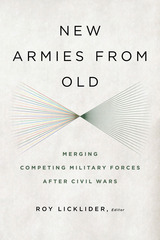 New Armies from Old: Merging Competing Military Forces after Civil Wars
Roy Licklider, Editor
Georgetown University Press, 2014 Negotiating a peaceful end to civil wars, which often includes an attempt to bring together former rival military or insurgent factions into a new national army, has been a frequent goal of conflict resolution practitioners since the Cold War. In practice, however, very little is known about what works, and what doesn’t work, in bringing together former opponents to build a lasting peace. Contributors to this volume assess why some civil wars result in successful military integration while others dissolve into further strife, factionalism, and even renewed civil war. Eleven cases are studied in detail—Sudan, Zimbabwe, Lebanon, Rwanda, the Philippines, South Africa, Mozambique, Bosnia-Herzegovina, Sierra Leone, Democratic Republic of the Congo, and Burundi—while other chapters compare military integration with corporate mergers and discuss some of the hidden costs and risks of merging military forces. New Armies from Old fills a serious gap in our understanding of civil wars, their possible resolution, and how to promote lasting peace, and will be of interest to scholars and students of conflict resolution, international affairs, and peace and security studies.
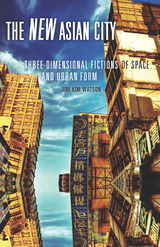 The New Asian City: Three-Dimensional Fictions of Space and Urban Form
Jini Kim Watson
University of Minnesota Press, 2011 Under Jini Kim Watson’s scrutiny, the Asian Tiger metropolises of Seoul, Taipei, and Singapore reveal a surprising residue of the colonial environment. Drawing on a wide array of literary, filmic, and political works, and juxtaposing close readings of the built environment, Watson demonstrates how processes of migration and construction in the hypergrowth urbanscapes of the Pacific Rim crystallize the psychic and political dramas of their colonized past and globalized present. Examining how newly constructed spaces—including expressways, high-rises, factory zones, department stores, and government buildings—become figured within fictional and political texts uncovers how massive transformations of citizenries and cities were rationalized, perceived, and fictionalized. Watson shows how literature, film, and poetry have described and challenged contemporary Asian metropolises, especially around the formation of gendered and laboring subjects in these new spaces. She suggests that by embracing the postwar growth-at-any-cost imperative, they have buttressed the nationalist enterprise along neocolonial lines.
The New Asian City provides an innovative approach to how we might better understand the gleaming metropolises of the Pacific Rim. In doing so, it demonstrates how reading cultural production in conjunction with built environments can enrich our knowledge of the lived consequences of rapid economic and urban development.
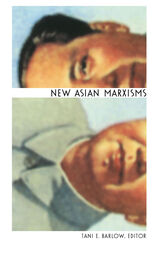 New Asian Marxisms
Tani E. Barlow, ed.
Duke University Press, 2002 Displaying the particular vitality of the global traditions of Marxism and neomarxism at the beginning of the twenty-first century, New AsianMarxisms collects essays by a diverse group of scholars—historians, political scientists, literary scholars, and sociologists—who offer a range of studies of the Marxist heritage focusing on Korea, Japan, India, and China. While some of these essays take up key thinkers in Marxist history or draw attention to outstanding problematics, others focus on national literature and discourse in North and South Korea, the "Mao Zedong Fever" of the 1990s, the implications of Li Dazhao's poetry, and the Indian Naxalite movement. Illustrating the importance of central analytical categories like exploitation, alienation, and violence to studies on the politics of knowledge, contributors confront prevailing global consumerist fantasies
with accounts of political struggle, cultural displacement, and theoretical strategies. Contributors. Tani E. Barlow, Dai Jinhua, Michael Dutton, D. R. Howland, Marshall Johnson, Liu Kang, You-me Park, William Pietz, Claudia Pozzana, Alessandro Russo, Sanjay Seth, Gi-Wook Shin, Sugiyama Mitsunobu, Jing Wang
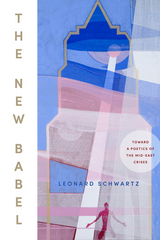 The New Babel: Toward a Poetics of the Mid-East Crises
Leonard Schwartz
University of Arkansas Press, 2016 The New Babel: Toward a Poetics of the Mid-East Crises evokes and investigates—from a Jewish American perspective and in the forms of poetry, essays, and interviews—the Israeli-Palestinian conflict, America’s involvement as both perpetrator and victim of events in the Middle East and Afghanistan, and the multiple ways that poetics can respond to political imperatives. The poems range from the immediately lyrical to the experimental forms of the “Apple Anyone Sonnets” series, which relies heavily on the Arabic but has Shakespeare as its scaffolding. In the essays, Schwartz calls on the power of poetry—and of some of the great poets in the Arabic, Jewish, and American traditions—to help rethink the battle lines of the contemporary Mid-East, with the Jewish philosopher Martin Buber looming large. The interviews provide Schwartz’s discussions with Israeli poet and activist Aharon Shabtai, political philosopher Michael Hardt, and the late, great American poet Amiri Baraka. In these creative, analytical, and conversational moments, Leonard Schwartz rethinks the battle lines of the contemporary Middle East and calls on the power of language as the essence of our humanity, endlessly fluid, but also the source of an intentional confusion there is a necessity to counter.
A New Basis for Animal Ethics: Telos and Common Sense
Bernard E. Rollin
University of Missouri Press, 2016 This book, the culmination of forty years of theorizing about the moral status of animals, explicates and justifies society’s moral obligation to animals in terms of the commonsense metaphysics and ethics ofAristotle’s concept of telos. Rollin uses this concept to assert that humans have a responsibility to treat animals ethically. Aristotle used the concept, from the Greek word for "end" or "purpose," as the core explanatory concept for the world we live in. We understand what an animal is by what it does. This is the nature of an animal, and helps us understand our obligations to animals.
 The New Basis of Civilization
Simon N. Patten
Harvard University Press “At the turn of the present century, when the idea of a transition from an age of scarcity to an era of abundance was first explored by a few American social scientists, the overwhelming weight of professional and lay opinion in Europe and the United States defended the assumption of scarcity. When Simon Patten articulated his belief that enough goods and services would be produced in the foreseeable future to provide every human being with the requisites for survival, he was a lonely forerunner of the present tenuous consensus… For a generation, the concept of abundance was synonymous with Simon Patten. He raised issues which still disturb those who speculate about ways to improve the quality of American life.”—from the Introduction
Simon Patten was professor of economics at the Wharton School of the University of Pennsylvania from 1887 until his death in 1917. Throughout his working life he sought to justify his conviction that men could create and sustain an age of abundance by developing appropriate restraints. He was an early believer in the enforcement of contract laws that were pro-labor, in the limitation of consumer credit, and in restraints on speculation. He insisted that progress was hindered mainly by ignorance and prejudice, which could be overcome by a higher standard of living, by education, and by increased opportunity for everyone. Patten’s activities coincided with the growth of philanthropy in America, and he was one of the earliest promoters of professional social work.
In The New Basis of Civilization, originally published in 1907, Patten tried to modify traditional assumptions about the permanence of poverty, the effects of a more equitable distribution of wealth, and the possibility of substantial improvements in the standard of living. The new basis of an abundant civilization required, in his view, new strategies and tactics for planning and implementing social change.
In his Introduction, Daniel M. Fox examines the reasons Patten accepted the idea of abundance half a century before it achieved popularity, and shows how the concept of abundance became part of the way a significant number of Americans look at the world.
 The New Berlin: Memory, Politics, Place
Karen E. Till
University of Minnesota Press, 2005 “The New Berlin is a notable contribution to human geography and to the interdisciplinary literature on social memory and place making. Till’s methods and scholarship have provided the conceptual groundwork for the exploration and development of place making, social memory, and spatial haunting through the particular practices and politics of the new Berlin. Her readable style is marked by a narrative economy in which every word and sentence serves the larger purposes of the book. I recommend this book to anyone—student, scholar, or practitioner—who is interested in the social dynamics of memory formation and place making.” —The Professional Geographer “This book is a well-written ‘first-hand’ account, though it also thoroughly covers academic literature, contemporary news accounts, and archival records.” —German Studies Review “Karen E. Till's The New Berlin describes the modern metropolis and the ghosts of the past that it has to deal with.” —German World “Well illustrated and copiously footnoted, this is a cutting-edge study of the power of identity-construction/analysis. Highly recommended.” —CHOICE
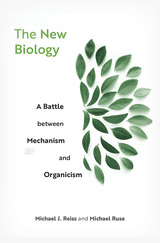 The New Biology: A Battle between Mechanism and Organicism
Michael J. Reiss
Harvard University Press, 2023 In this accessible analysis, a philosopher and a science educator look at biological theory and society through a synthesis of mechanistic and organicist points of view to best understand the complexity of life and biological systems.
The search for a unified framework for biology is as old as Plato’s musings on natural order, which suggested that the universe itself is alive. But in the twentieth century, under the influence of genetics and microbiology, such organicist positions were largely set aside in favor of mechanical reductionism, by which life is explained by the movement of its parts. But can organisms truly be understood in mechanical terms, or do we need to view life from the perspective of whole organisms to make sense of biological complexity?
The New Biology argues for the validity of holistic treatments from the perspectives of philosophy, history, and biology and outlines the largely unrecognized undercurrent of organicism that has persisted. Mechanistic biology has been invaluable in understanding a range of biological issues, but Michael Reiss and Michael Ruse contend that reductionism alone cannot answer all our questions about life. Whether we are considering human health, ecology, or the relationship between sex and gender, we need to draw from both organicist and mechanistic frameworks.
It’s not always a matter of combining organicist and mechanistic perspectives, Reiss and Ruse argue. There is scope for a range of ways of understanding the complexity of life and biological systems. Organicist and mechanistic approaches are not simply hypotheses to be confirmed or refuted, but rather operate as metaphors for describing a universe of sublime intricacy.
New Black Feminist Criticism, 1985-2000
Barbara Christian. Edited by Gloria Bowles, M. Giulia Fabi, and Arlene Keizer
University of Illinois Press, 2007 A passionate and celebrated pioneer in her own words New Black Feminist Criticism, 1985-2000 collects a selection of essays and reviews from Barbara Christian, one of the founding voices in black feminist literary criticism. Published between the release of her second landmark book Black Feminist Criticism and her death, these writings include eloquent reviews, evaluations of black feminist criticism as a discipline, reflections on black feminism in the academy, and essays on Toni Morrison, Alice Walker, Paule Marshall, and others.
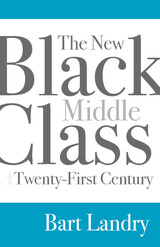 The New Black Middle Class in the Twenty-First Century
Landry, Bart
Rutgers University Press, 2018 Although past research on the African American community has focused primarily on issues of discrimination, segregation, and other forms of deprivation, there has always been some recognition of class diversity within the black population. The New Black Middle Class in the Twenty-First Century is a significant contribution to the continuing study of black middle class life. Sociologist Bart Landry examines the changes that have occurred since the publication of his now-classic The New Black Middle Class in the late 1980s, and conducts a comprehensive examination of black middle class American life in the early decades of the twenty-first century. Landry investigates the educational and occupational attainment, income and wealth, methods of child-rearing, community-building priorities, and residential settlement patterns of this growing yet still-understudied segment of the U.S. population.
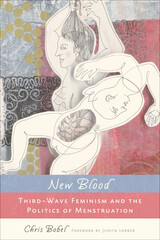 New Blood: Third-Wave Feminism and the Politics of Menstruation
Chris Bobel
Rutgers University Press, 2010 New Blood offers a fresh interdisciplinary look at feminism-in-flux. For over three decades, menstrual activists have questioned the safety and necessity of feminine care products while contesting menstruation as a deeply entrenched taboo. Chris Bobel shows how a little-known yet enduring force in the feminist health, environmental, and consumer rights movements lays bare tensions between second- and third-wave feminisms and reveals a complicated story of continuity and change within the women's movement.
Through her critical ethnographic lens, Bobel focuses on debates central to feminist thought (including the utility of the category "gender") and challenges to building an inclusive feminist movement. Filled with personal narratives, playful visuals, and original humor, New Blood reveals middle-aged progressives communing in Red Tents, urban punks and artists "culture jamming" commercial menstrual products in their zines and sketch comedy, queer anarchists practicing DIY health care, African American health educators espousing "holistic womb health," and hopeful mothers refusing to pass on the shame to their pubescent daughters. With verve and conviction, Bobel illuminates today's feminism-on-the-ground--indisputably vibrant, contentious, and ever-dynamic.
 New Bodleian: Making the Weston Library
Edited by the Bodleian Library
Bodleian Library Publishing, 2015 In 2010, with a bequest from the Garfield Weston Foundation, the Bodleian Library and the London firm Wilkinson Eyre Architects began to move forward with plans to refurbish the New Bodleian. Having served the community for seventy years, the New Bodleian housed more than three million books and manuscripts and was listed as a site of historic interest. Now, the stately building on Broad Street would preserve its façade while gaining updates to meet modern research needs.
New Bodleian: The Making of the Weston Library tells the story of how the plans for the new Weston Library—as the New Bodleian is now known—were realized, describing in detail the architectural, academic, curatorial, and heritage considerations addressed, as well as the successful collaborations between clients and consultants. Among the updates introduced were enhanced public access, including new entrance spaces; redesigned reading rooms for the study of special collections; new teaching facilities; and state-of-the-art storage space for the library’s many treasures. With over one hundred color illustrations, the book sheds light on the challenges of meeting the needs of an internationally renowned, four-hundred-year-old institution in the twenty-first century.
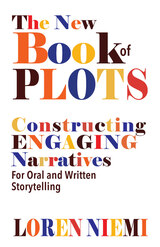 The New Book of Plots: Constructing Engaging Narratives for Oral and Written Storytelling
Loren Niemi
Parkhurst Brothers, Inc., 2012 In the space of the thirty-some years I have called myself a storyteller, the balance of what I tell has shifted from children’s stories and traditional folk and fairy tales told in schools, churches, and community centers to stories drawn directly from my own experiences. But I also understand that by adapting and re-imagining traditional folk and fairy tale material, you can provide a point of entry for contemporary listeners to experience, as psychologist Bruno Bettelheim has suggested in his book The Uses of Enchantment, the continuing power of the old stories to speak to the imagination and heart. Wanting to make a connection between the older stories and our existential circumstance, I sought to re-interpret folk and fairy tales by placing them in a more contemporary context. The confusing Black Forest of the Brothers Grimm became the crowded shopping mall. Rapunzel’s mother sought a more familiar drug than the painkilling herbs of the witch’s garden. I also created stories that were in the style of the older folk and fairy tales. One featured a lowly cucumber plant that, after consuming radioactive water and junk-food compost, became the glowing, green Godzilla of pickles. Another featured a boy named Jack, who found fame and fortune racing inner-city cockroaches. In creating and performing original stories and reimagined folk tales, as well as teaching stories to students of all ages, it has become clear to me that how we tell the story, as much as why, is at the very heart of the art. By “how,” I do not mean how we use voice and gesture, etc., but how we organize stories to get across their meanings to an audience. There are two central facts at the heart of the oral story. The first is that it begins when the teller begins and ends when the teller ends it, though I could argue that it actually ends when the audience dismisses it. This is fundamentally different from the written story, where a reader can go back and read the same words again. With the spoken word, we are in the moment. Even if we could ask the teller to go back and say something again, the very act of asking would alter the way in which the information is conveyed to us. This leads directly to the second basic fact: the act of telling is an expression of the relationship of the teller to the audience. We always tell to someone, even if it is to ourselves. It is incumbent upon us to recognize that the choice we make about how we tell a story to a given audience is as much about our understanding of who that audience is as it is about what we are saying to the audience. It is this crucial understanding of how the narrative is shaped and the choices we make as tellers to share a particular version of a story with a particular audience that I wish to explore with you. Whether we are working with a live audience in performance or with an imagined one while typing away on our laptops, the creation of compelling fiction and non-fiction begins with how to frame the story. This book is for storytellers and would-be storytellers, whether you call yourself a writer, minister, politician, journalist, lawyer, teacher, therapist, or street-corner b.s.’er. Whatever the name, the benefit you derive from the application of this material to your creative process will come from understanding how narrative is shaped and making conscious decisions about shaping that narrative content. This book was developed in workshops and classes I’ve conducted with storytellers and writers since 1986. In the course of those years, this teaching practice has refined my thinking and improved my ability to help participants discover new approaches to creating powerful, authentic, and entertaining stories. Much of what I say will be framed around the creation of stories as oral performance, but the concepts and exercises I suggest apply to written material as well. Whether the stories are oral or written, this book is about three things: the choice of an appropriate narrative form to provide the story’s structure, the choice of an appropriate point of view and timeframe to support the story’s emotional arc, and how those choices help or hinder the transmission of the meaning of the story to an audience.
New Borders: Migration, Hotspots and the European Superstate
Antonis Vradis, Evie Papada, Joe Painter, and Anna Papoutsi
Pluto Press, 2018 New Borders is the culmination of two years of research on the Mediterranean migration crisis of 2015-16. The book focuses on Lesbos, a Greek island that came under intense media and political scrutiny as more than one million people crossed its borders, changing and remaking life there. When these migrants—more than ten times the island’s earlier population—landed on Lesbos’s shores, local authorities were dismantled and replaced by supranational law and authority. In the ensuing months, reception turned to detention, rescue to registration, and refuge to duress.
As borders across Europe have come to symbolize the European Union, this book provides answers to questions of European policy, the securitization of national boundaries, and how legislation determines who is free to belong to a place.
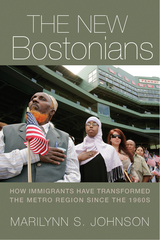 The New Bostonians: How Immigrants Have Transformed the Metro Area since the 1960s
Marilynn S. Johnson
University of Massachusetts Press, 2015 How immigrants helped rebuild a city—and redefined what it means to be American
Among the most consequential pieces of Great Society legislation, the Immigration Act of 1965 opened the nation's doors to large-scale immigration from Africa, Asia, and Latin America. A half century later, the impact of the "new immigration" is evident in the transformation of the country's demographics, economy, politics, and culture, particularly in urban America.
In The New Bostonians, Marilynn S. Johnson examines the historical confluence of recent immigration and urban transformation in greater Boston, a region that underwent dramatic decline after World War II. Since the 1980s, the Boston area has experienced an astounding renaissance—a development, she argues, to which immigrants have contributed in numerous ways. From 1970 to 2010, the percentage of foreign-born residents of the city more than doubled, representing far more diversity than earlier waves of immigration. Like the older Irish, Italian, and other European immigrant groups whose labor once powered the region's industrial economy, these newer migrants have been crucial in re-building the population, labor force, and metropolitan landscape of the New Boston, although the fruits of the new prosperity have not been equally shared.
 A New Brand of Business: Charles Coolidge Parlin, Curtis Publishing Company, and the Origins of Market Research
Douglas B. Ward
Temple University Press, 2009 Charles Coolidge Parlin was considered by many to be the founder of market research. Working for the dominant Curtis Publishing Company, he revolutionized the industry by providing added value to advertisers through information about the racial, ethnic, and regional biases of readers and consumers. By maintaining contact with both businesses and customers, Parlin and Curtis publications were able to turn consumer wants into corporate profits. In A New Brand of Business, Douglas Ward provides an intriguing business history that explains how and why Curtis developed its market research division. He reveals the evolution and impact of Parlin’s work, which understood how readers and advertisers in the emerging consumer economy looked at magazines and advertisements. Ward also examines the cultural and social reasons for the development and use of market research—particularly in regard to Curtis' readership of upper-income elites. The result weaves the stories of Parlin and Curtis into the changes taking place in American business and advertising in the early twentieth century.
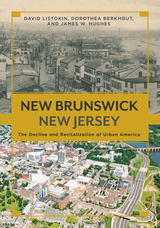 New Brunswick, New Jersey: The Decline and Revitalization of Urban America
Listokin, David
Rutgers University Press, 2016 While many older American cities struggle to remain vibrant, New Brunswick has transformed itself, adapting to new forms of commerce and a changing population, and enjoying a renaissance that has led many experts to cite this New Jersey city as a model for urban redevelopment. Featuring more than 100 remarkable photographs and many maps, New Brunswick, New Jersey explores the history of the city since the seventeenth century, with an emphasis on the dramatic changes of the past few decades. Using oral histories, archival materials, census data, and surveys, authors David Listokin, Dorothea Berkhout, and James W. Hughes illuminate the decision-making and planning process that led to New Brunswick’s dramatic revitalization, describing the major redevelopment projects that demonstrate the city’s success in capitalizing on funding opportunities. These projects include the momentous decision of Johnson & Johnson to build its world headquarters in the city, the growth of a theater district, the expansion of Rutgers University into the downtown area, and the destruction and rebuilding of public housing. But while the authors highlight the positive effects of the transformation, they also explore the often heated controversies about demolishing older neighborhoods and ask whether new building benefits residents. Shining a light on both the successes and failures in downtown revitalization, they underscore the lessons to be learned for national urban policy, highlighting the value of partnerships, unwavering commitment, and local leadership. Today, New Brunswick’s skyline has been dramatically altered by new office buildings, residential towers, medical complexes, and popular cultural centers. This engaging volume explores the challenges facing urban America, while also providing a specific case study of a city’s quest to raise its economic fortunes and retool its economy to changing needs.
 The New Buffalo: The Struggle for Aboriginal Post-Secondary Education in Canada
Blair Stonechild
University of Manitoba Press, 2006 Post-secondary education, often referred to as “the new buffalo,” is a contentious but critically important issue for First Nations and the future of Canadian society. While First Nations maintain that access to and funding for higher education is an Aboriginal and Treaty right, the Canadian government insists that post-secondary education is a social program for which they have limited responsibility. In The New Buffalo, Blair Stonechild traces the history of Aboriginal post-secondary education policy from its earliest beginnings as a government tool for assimilation and cultural suppression to its development as means of Aboriginal self-determination and self-government. With first-hand knowledge and personal experience of the Aboriginal education system, Stonechild goes beyond merely analyzing statistics and policy doctrine to reveal the shocking disparity between Aboriginal and Canadian access to education, the continued dominance of non-Aboriginals over program development, and the ongoing struggle for recognition of First Nations run institutions.
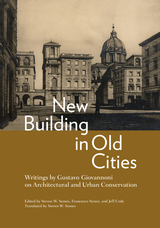 New Building in Old Cities: Writings by Gustavo Giovannoni on Architectural and Urban Conservation
Gustavo Giovannoni
J. Paul Getty Trust, The, 2024 The highly influential writings by an important early advocate for the conservation of historic cities are made available for the first time in English.
The Italian architect, historian, and restorer Gustavo Giovannoni (1873–1947) was a key figure in the fields of architecture, urbanism, and conservation during the first half of the twentieth century. A traditionalist largely neglected by the proponents of modernist architecture following World War II, he remains little known internationally. His writings, however, until now unavailable in English, represent a significant step toward the full appreciation of the historic city and are directly relevant today to the protection of urban historic resources worldwide.
This abundantly illustrated critical anthology is a representative sample of Giovannoni’s seminal texts related to the appreciation, understanding, and planning of historic cities. The thirty readings, which appear with their original illustrations, are grouped into six parts organized around key concepts in Giovannoni’s conservation theory—urban building, respect for the setting or context, a thinning out of the urban fabric, conservation and restoration treatments, the grafting of the new upon the old, and reconstruction. Each part is preceded by an introduction, and each reading is prefaced by succinct remarks explaining the rationale for its selection and the principal matters covered. Six plate sections further illustrate the readings’ main concepts and themes.
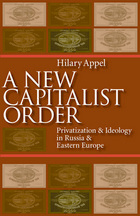 A New Capitalist Order: Privatization And Ideology In Russia And Eastern Europe
Hilary Appel
University of Pittsburgh Press, 2004
After the collapse of communism in the Soviet Union and eastern Europe, more than a dozen countries undertook aggressive privatization programs. Proponents of economic reform championed such large-scale efforts as the fastest, most reliable way to make the transition from a state-run to a capitalist economy.
The idea was widely embraced, and in the span of a few years, policymakers across the region repeatedly chose an approach that distributed vast amounts of state property to the private sector essentially for free-despite the absence of any historical precedent for such a radical concept. But privatization was not a panacea. It has, instead, become increasingly synonymous with collusion, corruption, and material deprivation.
Why was privatization so popular in the first place, and what went wrong? In answering this question, Hillary Appel breaks with mainstream empirical studies of postcommunist privatization.
By analyzing the design and development of programs in Russia, the Czech Republic, and across eastern Europe, Appel demonstrates how the transformation of property rights in these countries was first and foremost an ideologically driven process. Looking beyond simple economic calculations or pressure from the international community, she argues that privatization was part and parcel of the foundation of the postcommunist state.
A New Capitalist Order reveals that privatization was designed and implemented by pro-market reformers not only to distribute gains and losses to powerful supporters, but also to advance a decidedly Western, liberal vision of the new postcommunist state. Moreover, specific ideologies-such as anticommunism, liberalism, or nationalism, to name but a few-profoundly influenced the legitimacy, the power, and even the material preferences of key economic actors and groups within the privatization process.
 New Cathay: Contemporary Chinese Poetry
Edited by Ming Di
Tupelo Press, 2013 The most up-to-date anthology of contemporary Chinese poetry, translated by American poets and edited by the executive editor of the bilingual literary journal Poetry East West. Showcasing the achievement of Chinese poetry in the last twenty years, a time of tremendous literary ferment, this collection focuses on a diversity of exciting poets from the mainland, highlighting Duo Duo (laureate of the 2010 Neustadt International Prize for Literature) and Liao Yiwu (recipient of 2012 Peace Prize of the German Book Trade organization) along with not yet well-known but brilliant poets such as Zang Di and Xiao Kaiyu and younger poets Jiang Tao and Lü Yue. The anthology includes interviews with the poets and a fascinating survey of their opinions on “Ten Favorite Chinese poets” and “Ten Best-Known Western poets in China.” Featured poets: Duo Duo, Wang Xiaoni, Bai Hua, Zhang Shuguang, Sun Wenbo, Wang Jiaxin, Liao Yiwu, Song Lin, Xiao Kaiyu, Lü De’an, Feng Yan, Yang Xiaobin, Zang Di, Ya Shi, Mai Mang, Lan Lan, Jiang Tao, Jiang Hao, Lü Yue, Hu Xudong, Yi Lai, Jiang Li, Zheng Xiaoqiong, Qiu Qixuan, and Li Shumin. With translations by Neil Aitken, Katie Farris, Ming Di, Christopher Lupke, Tony Barnstone, Afaa Weaver, Jonathan Stalling, Nick Admussen, Eleanor Goodman, Ao Wang, Dian Li, Kerry Shawn Keys, Jennifer Kronovet, Elizabeth Reitzell, and Cody Reese.
 The New Censors: Movies and the Culture Wars
Charles Lyons
Temple University Press, 1997 After the Supreme Court's rejection of legal movie censorship in the 1950s and the demise of the Hays Production Code in the 1960s, various public groups have emerged as media watch dogs, replacing nearly all other sources of control. Responding to explicit violence against women, negative stereotypes of gay and lesbian images, "racist" representations, and "blasphemous" interpretations of the Bible, groups from bot Left and Right have staged protests in front of theaters and boycotted movie studios. The New Censors shows how groups on the Left empowered by social movements in the 1960s, and groups on the Right propelled by the successes of the New Christian Right and "The Moral Majority," have used similar strategies in attempting to control movie content.
The New Censors, the first study of the complex ways movies have been shaped in the years since the demise of the Code, covers a wide range of movies, protests, and government actions. From feminists against "Dressed to Kill," to religious campaigns against "The Last Temptation of Christ," to homosexuals ire over "Basic Instinct," Lyons links a study of public outrage against movies to the broader culture wars over "family values," pornography, and various lifestyle issues.
This book provides a contemporary history of controversial movies and a timely discussion of how cultural politics continues to affect the movie industry.
 The New Century: Bergsonism, Phenomenology, and Responses to Modern Science
Edited by Keith Ansell-Pearson and Alan D. Schrift
University of Chicago Press, 2010 From Kant to Kierkegaard, from Hegel to Heidegger, continental philosophers have indelibly shaped the trajectory of Western thought since the eighteenth century. Although much has been written about these monumental thinkers, students and scholars lack a definitive guide to the entire scope of the continental tradition. The most comprehensive reference work to date, this eight-volume History of Continental Philosophy will both encapsulate the subject and reorient our understanding of it. Beginning with an overview of Kant’s philosophy and its initial reception, the History traces the evolution of continental philosophy through major figures as well as movements such as existentialism, phenomenology, hermeneutics, and poststructuralism. The final volume outlines the current state of the field, bringing the work of both historical and modern thinkers to bear on such contemporary topics as feminism, globalization, and the environment. Throughout, the volumes examine important philosophical figures and developments in their historical, political, and cultural contexts.
The first reference of its kind, A History of Continental Philosophy has been written and edited by internationally recognized experts with a commitment to explaining complex thinkers, texts, and movements in rigorous yet jargon-free essays suitable for both undergraduates and seasoned specialists. These volumes also elucidate ongoing debates about the nature of continental and analytic philosophy, surveying the distinctive, sometimes overlapping characteristics and approaches of each tradition. Featuring helpful overviews of major topics and plotting road maps to their underlying contexts, A History of Continental Philosophy is destined to be the resource of first and last resort for students and scholars alike.
A New Century for Natural Resources Management
Edited by Richard L. Knight and Sarah F. Bates
Island Press, 1995 This book explores the changes that are leading to a new century of natural resources management. It places the current situation in historical perspective, analyzes the forces that are propelling change, and describes and examines the specific changes in goals, policy, and practice that are transforming all aspects of natural resources management.The book is an important overview for wildlife biologists, foresters, and others working for public land agencies; professors and students of natural resources; and all those whose livelihood depends on the use of public natural resources.
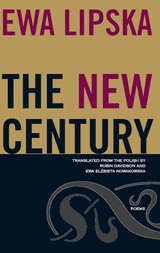 The New Century: Poems
Ewa Lipska, translated from the Polisyh by Robin Davidson and Ewa Nowakowska
Northwestern University Press, 2009 Since the publication of her first book in 1967, Ewa Lipska has been among the most acclaimed of contemporary Polish poets. Yet, to date she has not enjoyed the same popularity in the United States as her fellow Poles Wislawa Szymborska, Czeslaw Milosz, and her contemporary Adam Zagajewski. The New Century: Poems, a selection of her recent work, introduces to an American audience the work of an underappreciated master. Although Lipska’s work displays an acute awareness of history and politics, she’s nonetheless most concerned with individual experience and the most difficult philosophical questions of evil. Lipska is capable of being awed by beauty despite the deep pessimism that flows through her poems, including the failure of language itself to have any ameliorative effect on human experience. Surreal, skeptical, and laced with wit, Lipska’s poetry, like that of Milosz and Szymborska, seems to effortlessly achieve a kind of hard-won and gracefully wielded authority that tells us something essential about the legacies of the twentieth century’s horrors.
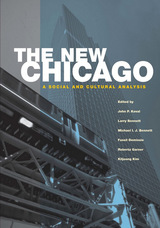 The New Chicago: A Social and Cultural Analysis
edited by John P. Koval, Larry Bennett, Michael I. J. Bennett, Fassil Demissie, Roberta Garner and Kiljoong Kim
Temple University Press, 2006 For generations, visitors, journalists, and social scientists alike have asserted that Chicago is the quintessentially American city. Indeed, the introduction to The New Chicago reminds us that "to know America, you must know Chicago." The contributors boldly announce the demise of the city of broad shoulders and the transformation of its physical, social, cultural, and economic institutions into a new Chicago. In this wide-ranging book, twenty scholars, journalists, and activists, relying on data from the 2000 census and many years of direct experience with the city, identify five converging forces in American urbanization which are reshaping this storied metropolis. The twenty-six essays included here analyze Chicago by way of globalization and its impact on the contemporary city; economic restructuring; the evolution of machine-style politics into managerial politics; physical transformations of the central city and its suburbs; and race relations in a multicultural era. In elaborating on the effects of these broad forces, contributors detail the role of eight significant racial, ethnic, and immigrant communities in shaping the character of the new Chicago and present ten case studies of innovative governmental, grassroots, and civic action. Multifaceted and authoritative, The New Chicago offers an important and unique portrait of an emergent and new "Windy City."
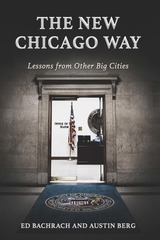 The New Chicago Way: Lessons from Other Big Cities
Ed Bachrach and Austin Berg
Southern Illinois University Press, 2019 For all the wrong reasons, a national spotlight is shining on Chicago. The city has become known for its violence, police abuse, parent and teacher unrest, population decline, and mounting municipal and pension debt. The underlying problem, contend Ed Bachrach and Austin Berg, is that deliberative democracy is dead in the city. Chicago is home to the last strongman political system in urban America. The mayor holds all the power, and any perceived checks on mayoral control are often proven illusory. Rash decisions have resulted in poor outcomes. The outrageous consequences of unchecked power are evident in government failures in elections, schools, fiscal discipline, corruption, public support for private enterprise, policing, and more.
Rather than simply lament the situation, criticize specific leaders, or justify an ideology, Bachrach and Berg compare the decisions about Chicago’s governance and finances with choices made in fourteen other large U.S. cities. The problems that seem unique to Chicago have been encountered elsewhere, and Chicagoans, the authors posit, can learn from the successful solutions other cities have embraced.
Chicago government and its citizens must let go of the past to prepare for the future, argue Bachrach and Berg. A future filled with demographic, technological, and economic change requires a government capable of responding and adapting. Reforms can transform the city. The prescriptions for change provided in this book point toward a hopeful future: the New Chicago Way.
New Chicana/Chicano Writing, Volume 2
Charles M. Tatum
University of Arizona Press, 1992 "This impressive collection augurs a bright future for Chicana/Chicano literature, and will be of interest to those who keep track of the wide diversity of American and world literature." —Publishers Weekly
"A sampling of typically captivating contemporary Chicano literature by established and emerging writers." —El Puente. The Quarterly Newsletter of the Hispanic Culture Foundation
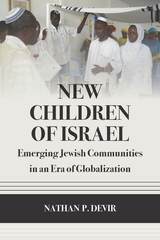 New Children of Israel: Emerging Jewish Communities in an Era of Globalization
Nathan P. Devir
University of Utah Press, 2017 In the last century, the tragic events of the Holocaust and the subsequent founding of the state of Israel brought about tremendous changes for Jewish communities all over the world. This book explores what may be the next watershed moment for the Jews: the inclusion of millions of people from developing nations who self-define as Jewish but who have no historical ties with established centers of Jewish life. These emerging groups are expanding notions of what it means to be Jewish.
This comparative ethnographic study, the first of its kind, presents in-depth analyses of the backgrounds, motivations, and sociohistorical contexts of emerging Jewish communities in Cameroon, Ghana, India, and other postcolonial locales. It investigates the ramifications of these new movements for the larger Judeo-Christian world, particularly with regard to issues of multiculturalism, immigration, race relations, and messianic expectations concerning the prophecy of Isaiah 11:12, according to which God will “assemble the dispersed of Israel, and gather together the scattered of Judah from the four corners of the earth.”
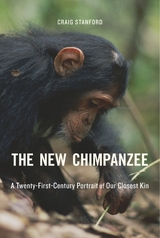 The New Chimpanzee: A Twenty-First-Century Portrait of Our Closest Kin
Craig Stanford
Harvard University Press, 2018 Recent discoveries about wild chimpanzees have dramatically reshaped our understanding of these great apes and their kinship with humans. We now know that chimpanzees not only have genomes similar to our own but also plot political coups, wage wars over territory, pass on cultural traditions to younger generations, and ruthlessly strategize for resources, including sexual partners. In The New Chimpanzee, Craig Stanford challenges us to let apes guide our inquiry into what it means to be human.
With wit and lucidity, Stanford explains what the past two decades of chimpanzee field research has taught us about the origins of human social behavior, the nature of aggression and communication, and the divergence of humans and apes from a common ancestor. Drawing on his extensive observations of chimpanzee behavior and social dynamics, Stanford adds to our knowledge of chimpanzees’ political intelligence, sexual power plays, violent ambition, cultural diversity, and adaptability.
The New Chimpanzee portrays a complex and even more humanlike ape than the one Jane Goodall popularized more than a half century ago. It also sounds an urgent call for the protection of our nearest relatives at a moment when their survival is at risk.
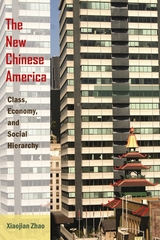 The New Chinese America: Class, Economy, and Social Hierarchy
Zhao, Xiaojian
Rutgers University Press, 2010 The 1965 Immigration Act altered the lives and outlook of Chinese Americans in fundamental ways. The New Chinese America explores the historical, economic, and social foundations of the Chinese American community, in order to reveal the emergence of a new social hierarchy after 1965. In this detailed and comprehensive study of contemporary Chinese America, Xiaojian Zhao uses class analysis to illuminate the difficulties of everyday survival for poor and undocumented immigrants and analyzes the process through which social mobility occurs. Through ethnic ties, Chinese Americans have built an economy of their own in which entrepreneurs can maintain a competitive edge given their access to low-cost labor; workers who are shut out of the mainstream job market can find work and make a living; and consumers can enjoy high quality services at a great bargain. While the growth of the ethnic economy enhances ethnic bonds by increasing mutual dependencies among different groups of Chinese Americans, it also determines the limits of possibility for various individuals depending on their socioeconomic and immigration status.
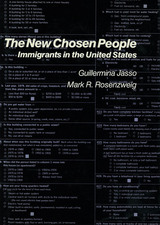 The New Chosen People: Immigrants in the United States
Guillermina Jasso
Russell Sage Foundation, 1990 Stories of immigrant success have traditionally illustrated the basic principles of political and economic freedom in the United States. In reality, the presence and achievements of the foreign-born are the complex result of attitudes, choices, and decisions, not only of the immigrants themselves but also of the U.S. government and its native-born citizens. Based on census data and government administrative records, The New Chosen People presents a comprehensive picture of this interaction as the authors examine immigrant behavior in the United States. Jasso and Rosenzweig trace the factors that influence the immigrants' adjustment and achievements in a broad area of concerns—learning English, finding work and earning a living, and raising a family. The authors devote special attention to family relationships—kinship migration, family reunification, and the marriage market—and to the factors determining where immigrants choose to settle. Jasso and Rosenzweig also consider the situation of the largest recent groups of refugees—Cubans and Indochinese—who have entered the U.S. under very different rules than those governing the selection of immigrants from other countries. They also look at how the foreign-born population has changed over time, drawing comparisons between post-1960 immigrants and those of 1900 through 1910. For all foreign-born, the authors discuss the factors that influence decisions to naturalize and the economic and social consequences of achieving legal status. Jasso and Rosenzweig also detail the policy choices that affect the composition of the foreign-born population. What criteria determine who is eligible to enter the country? How do these regulations differ for each country of origin, and how have they changed over the years? The New Chosen People emphasizes the determining influence of choice and selection on the foreign-born population of the United States. For policymakers and social scientists, the book provides a valuable assessment of the economic and social well-being of the nation and its newcomers. A Volume in the Russell Sage Foundation Census Series
The New Church in the New World: A Study of Swedenborgianism in America
Marguerite Block
Swedenborg Foundation Publishers, 2024 A history of the development of the Church of the New Jerusalem in the United States.
The Church of the New Jerusalem, or New Church, is a Christian denomination that developed in the late eighteenth century, based on the writings of Swedish visionary Emanuel Swedenborg (1688–1772). In this book, Marguerite Block explores the church’s beginnings and traces how it spread through the United States, from its introduction in Philadelphia after the American Revolution to its development through the nineteenth century. Originally published in 1932, this volume remains the most comprehensive book on New Church history in print. This 4th edition contains a new introduction and epilogue by Christopher A. Barber.
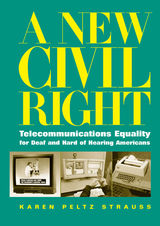 A New Civil Right: Telecommunications Equality for Deaf and Hard of Hearing Americans
Karen Peltz Strauss
Gallaudet University Press, 2006 When three deaf men in the 1960s invented and sold TTYs, the first teletypewriting devices that allowed deaf people to communicate by telephone, they started a telecommunications revolution for deaf people throughout America. A New Civil Right: Telecommunications Equality for Deaf and Hard of Hearing Americans chronicles the history of this movement, which lagged behind new technical developments decades after the advent of TTYs.
In this highly original work, Author Karen Peltz Strauss reveals how the paternalism of the hearing-oriented telecommunications industries slowed support for technology for deaf users. Throughout this comprehensive account, she emphasizes the grassroots efforts behind all of the eventual successes. A New Civil Right recounts each advance in turn, such as the pursuit of special customer premises equipment (SCPE) from telephone companies; the Telecommunications Act of 1982 and the Telecommunications Accessibility Enhancement Act of 1988 and the 1990 Americans with Disabilities Act, which required nationwide relay telephone services for deaf and hard of hearing users.
Strauss painstakingly details how all of these advances occurred incrementally, first on local and state levels, and later through federal law. It took exhaustive campaigning to establish 711 for nationwide relay dialing, while universal access to television captioning required diligent legal and legislative work to pass the Decoder Circuitry Act in 1990. The same persistence resulted in the enactment of the Telecommunications Act of 1996, which required all off-the-shelf communications equipment, including new wireless technology, to be readily accessible to deaf users.
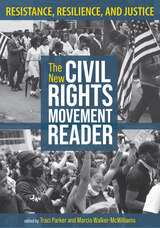 The New Civil Rights Movement Reader: Resistance, Resilience, and Justice
Edited by Traci Parker and Marcia Walker-McWilliams
University of Massachusetts Press, 2023 In the United States, the fight to secure full civil rights for African American people has endured for centuries. The movement has included many voices, among them, working people, charismatic activists, musicians and artists, the LGBTQIA community, veterans, suburbanites, and elected officials. Moving from the labor struggles of the 1930s to the sit-ins and boycotts of midcentury, and the Black Lives Matter protests of today, this expansive volume brings together first-person accounts, political documents and speeches, and historical photographs from each region of the country. Designed for use in courses and engaging for general readers, this new compilation is the most diverse, most inclusive, and most comprehensive resource available for teaching and learning about the civil rights movement. With chronological and geographical depth, The New Civil Rights Movement Reader addresses a range of key topics, including youth activism, regional and local freedom struggles, voting rights, economic inequality, gender, sexuality, and culture, and the movement’s global reach.
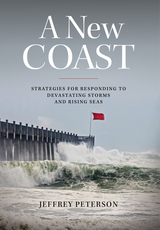 A New Coast: Strategies for Responding to Devastating Storms and Rising Seas
Jeffrey Peterson
Island Press, 2019 “This is a timely book… [It] should be mandatory reading..." — Minnesota Star Tribune
More severe storms and rising seas will inexorably push the American coastline inland with profound impact on communities, infrastructure, and natural systems. In A New Coast, Jeffrey Peterson draws a comprehensive picture of how storms and rising seas will change the coast. Peterson offers a clear-eyed assessment of how governments can work with the private sector and citizens to be better prepared for the coming coastal inundation.
Drawing on four decades of experience at the Environmental Protection Agency and the United States Senate, Peterson presents the science behind predictions for coastal impacts. He explains how current policies fall short of what is needed to effectively prepare for these changes and how the Trump Administration has significantly weakened these efforts. While describing how and why the current policies exist, he builds a strong case for a bold, new approach, tackling difficult topics including: how to revise flood insurance and disaster assistance programs; when to step back from the coast rather than build protection structures; how to steer new development away from at-risk areas; and how to finance the transition to a new coast. Key challenges, including how to protect critical infrastructure, ecosystems, and disadvantaged populations, are examined. Ultimately, Peterson offers hope in the form of a framework of new national policies and programs to support local and state governments. He calls for engagement from the private sector and local and national leaders in a “campaign for a new coast.”
A New Coast is a compelling assessment of the dramatic changes that are coming to America’s coast. Peterson offers insights and strategies for policymakers, planners, and business leaders preparing for the intensifying impacts of climate change along the coast.
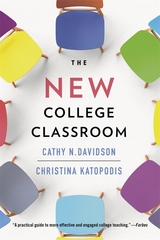 The New College Classroom
Cathy N. Davidson and Christina Katopodis
Harvard University Press, 2022 Frederic W. Ness Book Award, American Association of Colleges and Universities
A Forbes Best Higher Education Book
“A practical guide to more effective and engaged college teaching.”—Forbes
“Everyone who teaches (or hopes to teach) college will find this book a provocative and stimulating source of ideas about how to make our classrooms more equitable, participatory and interactive.”—Steven Mintz, Inside Higher Ed
“A pedagogical treasure trove...Required reading for educators who aspire to follow in the footsteps of our predecessors by teaching students not only to navigate the world, but to change it.”—Danica Savonick, Public Books
“A guidebook and a DIY manifesto for change in college teaching...This book can help any instructor striving for just and excellent teaching.”—Margaret Fuller Society
The New College Classroom helps instructors in all disciplines create an environment that is truly conducive to learning. Cathy Davidson and Christina Katopodis, two of the world’s foremost innovators in higher education, translate cutting-edge research in learning science and pedagogy into ready-to-use strategies to incorporate into any course. These empirically driven, classroom-tested techniques of active learning—from the participatory syllabus and ungrading to grab-and-go activities for every day of the term—have achieved impressive results at community colleges and research universities, on campus, online, and in hybrid settings.
Extensive evidence shows that active learning tools are more effective than conventional methods of instruction. Davidson and Katopodis provide detailed case studies of educators successfully applying active learning techniques in their courses every day, ensuring that their students are better prepared for the world after college.
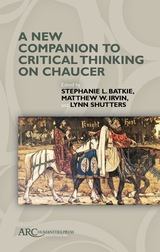 A New Companion to Critical Thinking on Chaucer
Stephanie L. Batkie
Arc Humanities Press, 2021 This New Companion to Critical Thinking on Chaucer brings together preeminent scholars from around the world and adopts a novel approaching, beginning with the basics: Chaucer's words. Each chapter explores a single word from the Chaucerian corpus to develop readings that extend across the author's works. Without being limited to a particular text or theoretical approach, contributors model scholarly thinking in action, posing questions and offering analyses from textual, theoretical, historical, and material approaches. The result is a comprehensive collection of essays that illuminates Chaucer's aesthetics, philosophical complexity, and continued relevance. Part innovative scholarship, part how-to manual, the volume includes apparatus to help less experienced readers of Chaucer negotiate its contents. In addition to fourteen main essays, the volume also includes three response essays, each modelling how a seasoned scholar uses the chapters to develop his or her own thinking about Chaucer. Thus, the companion offers something to audiences of all levels who wish to read, research, and enjoy Chaucer, his language, and his works.
 The New Competition: Institutions of Industrial Restructuring
Michael Best
Harvard University Press, 1990 Why is America losing its competitive edge in basic industries ranging from automobile manufacture to consumer electronics? The reason, Michael Best shows, is the rigid command and control structures that are typical of big business in America. America firms lack the organizational flexibility of the "new competition" practiced by companies in Italy, West Germany, and Japan. The secret to the success of these foreign firms is that they are organized from top to bottom to pursue continuous improvements in methods, products, and processes. They seek competitive advantage not through lowest-cost production but through superior product design. This requires an unusual degree of organizational flexibility, which in turn demands organizational commitments to problem solving, constant attention to detail, and an integration of thought and action in the work place.
The New Competition posits a strategic tension between market competition and cooperation in successful industrial societies. Instead of bargaining with suppliers and customers at arm's length, firms can forge consultative relations with them, facilitating the flow of valuable advice, suggestions, and information and crucially modifying a key processor design. Instead of engaging in price rivalry, companies can pursue product-related rivalries that increase their international competitiveness. Best envisions a new role for national industrial policy—one not of bailing out sick firms in dying industries but of shaping industrial sectors and markets. It would encourage firms to cooperate in terms of the form that competition takes, one that involves products instead of prices.
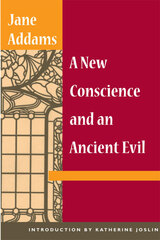 A New Conscience and an Ancient Evil
Jane Addams
University of Illinois Press, 2002 Published in 1912 on the heels of Twenty Years at Hull-House and at the height of Jane Addams's popularity, A New Conscience and an Ancient Evil assesses the vulnerability of the rural and immigrant working-class girls who moved to Chicago and fell prey to the sexual bartering of what was known as the white slave trade.
Addams offers lurid accounts–-drawn from the records of Chicago's Juvenile Protection Association–-of young women coerced into lives of prostitution by men who lurked outside hotels and sweatshops. Because they lacked funds for proper recreation, Addams argues, poor and socially marginalized women were susceptible to sexual slavery, and without radical social change they would perhaps be "almost as free" as young men. In addition to promoting higher wages and better living conditions, Addams suggests that a longer period of public education for young women would deter them from the dangers of city life.
Despite its appeal to middle–class readers eager for tales of sexual excess and the rape of innocence, the press and prominent intellectuals criticized A New Conscience and an Ancient Evil for being disproportionately hysterical to its philosophical weight. Katherine Joslin's introduction considers the controversial reactions to the book and the circumstances of its publication. Behind the sensationalism of the narratives, Joslin locates themes including the commodification of sex and the importance of marriage for young women.
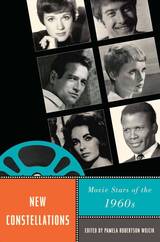 New Constellations: Movie Stars of the 1960s
Wojcik, Pamela Robertson
Rutgers University Press, 2012 American culture changed radically over the course of the 1960s, and the culture of Hollywood was no exception. The film industry began the decade confidently churning out epic spectacles and lavish musicals, but became flummoxed as new aesthetics and modes of production emerged, and low-budget youth pictures like Easy Rider became commercial hits.
New Constellations: Movie Stars of the 1960s tells the story of the final glory days of the studio system and changing conceptions of stardom, considering such Hollywood icons as Elizabeth Taylor and Paul Newman alongside such hallmarks of youth culture as Mia Farrow and Dustin Hoffman. Others, like Sidney Poitier and Peter Sellers, took advantage of the developing independent and international film markets to craft truly groundbreaking screen personae. And some were simply “famous for being famous,” with celebrities like Zsa Zsa Gabor and Edie Sedgwick paving the way for today’s reality stars.
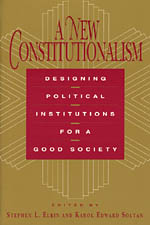 A New Constitutionalism: Designing Political Institutions for a Good Society
Edited by Stephen L. Elkin and Karol Edward Soltan
University of Chicago Press, 1993 In The New Constitutionalism, seven distinguished scholars develop an innovative perspective on the power of institutions to shape politics and political life.
Believing that constitutionalism needs to go beyond the classical goal of limiting the arbitrary exercise of political power, the contributors argue that it should—and can—be designed to achieve economic efficiency, informed democratic control, and other valued political ends. More broadly, they believe that political and social theory needs to turn away from the negativism of critical theory to consider how a good society should be "constituted" and to direct the work of designing institutions that can constitute a "good polity," in both the economic and civic senses.
Stephen L. Elkin and Karol Edward Soltan begin with an overview of constitutionalist theory and a discussion of the new constitutionalism within the broader intellectual and historical context of political and social thought. Charles Anderson, James Ceaser, and the editors then offer different interpretations of the central issues regarding institutional design in a constitutionalist social science, consider various ways of performing the task, and discuss the inadequacy of recent political science to the job it ought to be doing. The book concludes with essays by Ted Lowi, Cass Sunstein and Edwin Haefele which apply these themes to the American regime.
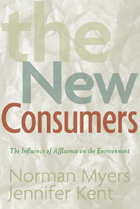 The New Consumers: The Influence Of Affluence On The Environment
Norman Myers and Jennifer Kent
Island Press, 2004 While overconsumption by the developed world's roughly one billion inhabitants is an abiding problem, another one billion increasingly affluent "new consumers" in developing countries will place additional strains on the earth's resources, argue authors Norman Myers and Jennifer Kent in this important new book. The New Consumers examines the environmental impacts of this increased consumption, with particular focus on two commodities -- cars and meat -- that stand to have the most far-reaching effects. It analyzes consumption patterns in a number of different countries, with special emphasis on China and India (whose surging economies, as well as their large populations, are likely to account for exceptional growth in humanity's ecological footprint), and surveys big-picture issues such as the globalization of economies, consumer goods, and lifestyles. Ultimately, according to the orman Myers and Jennifer Kent, the challenge will be for all of humanity to transition to sustainable levels of consumption, for it is unrealistic to expect "new" consumers not to aspire to be like the "old" ones. Cogent in its analysis, The New Consumers issues a timely warning of a major and developing environmental trend, and suggests valuable strategies for ameliorating its effects.
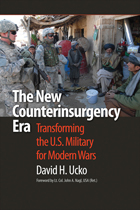 The New Counterinsurgency Era: Transforming the U.S. Military for Modern Wars
David H. Ucko. Foreword by John A. Nagl
Georgetown University Press, 2009 Confronting insurgent violence in Iraq and Afghanistan, the U.S. military has recognized the need to “re-learn” counterinsurgency. But how has the Department of Defense with its mixed efforts responded to this new strategic environment? Has it learned anything from past failures? In The New Counterinsurgency Era, David Ucko examines DoD’s institutional obstacles and initially slow response to a changing strategic reality. Ucko also suggests how the military can better prepare for the unique challenges of modern warfare, where it is charged with everything from providing security to supporting reconstruction to establishing basic governance—all while stabilizing conquered territory and engaging with local populations. After briefly surveying the history of American counterinsurgency operations, Ucko focuses on measures the military has taken since 2001 to relearn old lessons about counterinsurgency, to improve its ability to conduct stability operations, to change the institutional bias against counterinsurgency, and to account for successes gained from the learning process. Given the effectiveness of insurgent tactics, the frequency of operations aimed at building local capacity, and the danger of ungoverned spaces acting as havens for hostile groups, the military must acquire new skills to confront irregular threats in future wars. Ucko clearly shows that the opportunity to come to grips with counterinsurgency is matched in magnitude only by the cost of failing to do so.
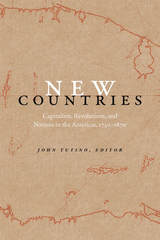 New Countries: Capitalism, Revolutions, and Nations in the Americas, 1750–1870
John Tutino, editor
Duke University Press, 2016 After 1750 the Americas lived political and popular revolutions, the fall of European empires, and the rise of nations as the world faced a new industrial capitalism. Political revolution made the United States the first new nation; revolutionary slaves made Haiti the second, freeing themselves and destroying the leading Atlantic export economy. A decade later, Bajío insurgents took down the silver economy that fueled global trade and sustained Spain’s empire while Britain triumphed at war and pioneered industrial ways that led the U.S. South, still-Spanish Cuba, and a Brazilian empire to expand slavery to supply rising industrial centers. Meanwhile, the fall of silver left people from Mexico through the Andes searching for new states and economies. After 1870 the United States became an agro-industrial hegemon, and most American nations turned to commodity exports, while Haitians and diverse indigenous peoples struggled to retain independent ways. Contributors. Alfredo Ávila, Roberto Breña, Sarah C. Chambers, Jordana Dym, Carolyn Fick, Erick Langer, Adam Rothman, David Sartorius, Kirsten Schultz, John Tutino
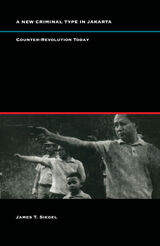 A New Criminal Type in Jakarta: Counter-Revolution Today
James T. Siegel
Duke University Press, 1998 In A New Criminal Type in Jakarta, James T. Siegel studies the dependence of Indonesia’s post-1965 government on the ubiquitous presence of what he calls criminality, an ensemble of imagined forces within its society that is poised to tear it apart. Siegel, a foremost authority on Indonesia, interprets Suharto’s New Order—in powerful contrast to Sukarno’s Old Order—and shows a cultural and political life in Jakarta controlled by a repressive regime that has created new ideas among its population about crime, ghosts, fear, and national identity. Examining the links between the concept of criminality and scandal, rumor, fear, and the state, Siegel analyzes daily life in Jakarta through the seemingly disparate but strongly connected elements of family life, gossip, and sensationalist journalism. He offers close analysis of the preoccupation with crime in Pos Kota (a newspaper directed toward the lower classes) and the middle-class magazine Tempo. Because criminal activity has been a sensationalized preoccupation in Jakarta’s news venues and among its people, criminality, according to Siegel, has pervaded the identities of its ordinary citizens. Siegel examines how and why the government, fearing revolution and in an attempt to assert power, has made criminality itself a disturbing rationalization for the spectacular massacre of the people it calls criminals—many of whom were never accused of particular crimes. A New Criminal Type in Jakarta reveals that Indonesians—once united by Sukarno’s revolutionary proclamations in the name of “the people”—are now, lacking any other unifying element, united through their identification with the criminal and through a “nationalization of death” that has emerged with Suharto’s strong counter-revolutionary measures. A provocative introduction to contemporary Indonesia, this book will engage those interested in Southeast Asian studies, anthropology, history, political science, postcolonial studies, public culture, and cultural studies generally.
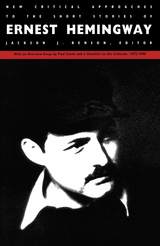 New Critical Approaches to the Short Stories of Ernest Hemingway
Jackson J. Benson, ed.
Duke University Press, 1990 With an Overview by Paul Smith and a Checklist to Hemingway Criticism, 1975–1990 New Critical Approaches to the Short Stories of Ernest Hemingway is an all-new sequel to Benson’s highly acclaimed 1975 book, which provided the first comprehensive anthology of criticism of Ernest Hemingway’s masterful short stories. Since that time the availability of Hemingway’s papers, coupled with new critical and theoretical approaches, has enlivened and enlarged the field of American literary studies. This companion volume reflects current scholarship and draws together essays that were either published during the past decade or written for this collection.
The contributors interpret a variety of individual stories from a number of different critical points of view—from a Lacanian reading of Hemingway’s “After the Storm” to a semiotic analysis of “A Very Short Story” to an historical-biographical analysis of “Old Man at the Bridge.” In identifying the short story as one of Hemingway’s principal thematic and technical tools, this volume reaffirms a focus on the short story as Hemingway’s best work. An overview essay covers Hemingway criticism published since the last volume, and the bibliographical checklist to Hemingway short fiction criticism, which covers 1975 to mid-1989, has doubled in size. Contributors. Debra A. Moddelmog, Ben Stotzfus, Robert Scholes, Hubert Zapf, Susan F. Beegel, Nina Baym, William Braasch Watson, Kenneth Lynn, Gerry Brenner, Steven K. Hoffman, E. R. Hagemann, Robert W. Lewis, Wayne Kvam, George Monteiro, Scott Donaldson, Bernard Oldsey, Warren Bennett, Kenneth G. Johnston, Richard McCann, Robert P. Weeks, Amberys R. Whittle, Pamela Smiley, Jeffrey Meyers, Robert E. Fleming, David R. Johnson, Howard L. Hannum, Larry Edgerton, William Adair, Alice Hall Petry, Lawrence H. Martin Jr., Paul Smith
New Critical Essays
Roland Barthes
Northwestern University Press, 2009 New Critical gathers Roland Barthes's essays on classic texts of French literature, works by La Rochefoucauld, Chateaubriand, Proust, Flaubert, Fromentin, and Lori. Like an artist sketching, Barthes in these essays is working out the more fascinating details of his larger theories. In the innocuously names "Proust and Names" and "Flaubert and Sentences," Barthes explores the relation of the author to writing that begins his transition to his later thought. In his studies of La Rochefoucauld's maxims and the illustrative plates of the Encyclopedia, Barthes reveals new vistas on common cultural artifacts, while "Where to Begin?" offers a glimpse into his own analytical processes. The concluding essays on Fromentin and Loti show the breadth of Barthes's inquiry. As a whole, the essays demonstrate both the acuity and freshness of Barthes's critical mind and the gracefulness of his own use of language.
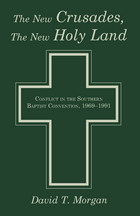 The New Crusades, the New Holy Land: Conflict in the Southern Baptist Convention, 1969-1991
David T. Morgan
University of Alabama Press, 1996 Examines the conflict between modern-day Southern Baptists and “liberal” Southern Baptists over control of the Southern Baptist Convention
David Morgan captures the essence of the conflict between some modern-day Southern Baptists, who saw themselves as crusaders for truth, as they sought to redeem a new holy land--the Southern Baptist Convention-- from the control of other Southern Baptists they viewed as "liberals." To the so-called liberals, the crusaders were "fundamentalists" on a mission, not to reclaim the SBC in the name of theological truth but to gain control and redirect its activities according to their narrow political, social, and theological perspectives. The New Crusades provides a comprehensive history of the conflict, taking the reader through the bitter and divisive struggles of the late 1980s, that culminated in the 1991 emergence of a moderate faction within the SBC. The fundamentalists had won.
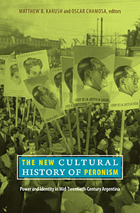 The New Cultural History of Peronism: Power and Identity in Mid-Twentieth-Century Argentina
Matthew B. Karush and Oscar Chamosa, eds.
Duke University Press, 2010 In nearly every account of modern Argentine history, the first Peronist regime (1946–55) emerges as the critical juncture. Appealing to growing masses of industrial workers, Juan Perón built a powerful populist movement that transformed economic and political structures, promulgated new conceptions and representations of the nation, and deeply polarized the Argentine populace. Yet until now, most scholarship on Peronism has been constrained by a narrow, top-down perspective. Inspired by the pioneering work of the historian Daniel James and new approaches to Latin American cultural history, scholars have recently begun to rewrite the history of mid-twentieth-century Argentina. The New Cultural History of Peronism brings together the best of this important new scholarship. Situating Peronism within the broad arc of twentieth-century Argentine cultural change, the contributors focus on the interplay of cultural traditions, official policies, commercial imperatives, and popular perceptions. They describe how the Perón regime’s rhetoric and representations helped to produce new ideas of national and collective identity. At the same time, they show how Argentines pursued their interests through their engagement with the Peronist project, and, in so doing, pushed the regime in new directions. While the volume’s emphasis is on the first Perón presidency, one contributor explores the origins of the regime and two others consider Peronism’s transformations in subsequent years. The essays address topics including mass culture and melodrama, folk music, pageants, social respectability, architecture, and the intense emotional investment inspired by Peronism. They examine the experiences of women, indigenous groups, middle-class anti-Peronists, internal migrants, academics, and workers. By illuminating the connections between the state and popular consciousness, The New Cultural History of Peronism exposes the contradictions and ambivalences that have characterized Argentine populism. Contributors: Anahi Ballent, Oscar Chamosa, María Damilakou, Eduardo Elena, Matthew B. Karush, Diana Lenton, Mirta Zaida Lobato, Natalia Milanesio, Mariano Ben Plotkin, César Seveso, Lizel Tornay
New Dance: Approaches to Nonliteral Choreography
Margery Turner
University of Pittsburgh Press, 1976
Dealing exclusively with developments in modern dance since 1951, this book is for anyone who wishes to understand and experience nonliteral dance: students and teachers, dancers and critics.
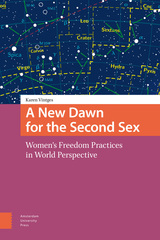 A New Dawn for the Second Sex: Women's Freedom Practices in World Perspective
Karen Vintges
Amsterdam University Press, 2017 To what extent is Simone de Beauvoir's study The Second Sex still relevant? From her work it emerges that patriarchy is a many-headed monster. Over the past decades, various heads of this monster have been slayed: important breakthroughs have been achieved by and for women in law, politics, and economics. Today, however, we witness movements in the opposite direction, such as a masculinist political revival in different parts of the world, the spread of the neoliberal myth of the Super Woman, the rise of transnational networks of trafficking in women and children, and a new international 'Jihadism'. This suggests that patriarchy is indeed a Hydra: a multi-headed monster that grows several new heads every time one head is cut off. Since different - often hybrid - heads of patriarchy dominate in different settings, feminism requires a variety of strategies. Women's movements all over the world today are critically creating new models of self and society in their own contexts. Drawing on notions of Beauvoir, as well as Michel Foucault, this book outlines a 'feminism in a new key' which consists of women's various freedom practices, each hunting the Hydra in their own key - but with mutual support.
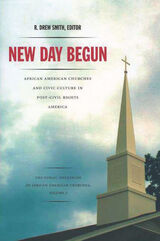 New Day Begun: African American Churches and Civic Culture in Post-Civil Rights America
R. Drew Smith, ed.
Duke University Press, 2003 New Day Begun presents the findings of the first major research project on black churches’ civic involvement since C. Eric Lincoln and Lawrence H. Mamiya’s landmark study The Black Church in the African American Experience. Since the passage of the 1964 Civil Rights Act and the 1965 Voting Rights Act, the scale and scope of African American churches’ civic involvement have changed significantly: the number of African American clergy serving in elective and appointive offices has noticeably increased, as have joint efforts by black churches and government agencies to implement policies and programs. Filling a vacuum in knowledge about these important developments, New Day Begun assesses the social, political, and ecclesiastical factors that have shaped black church responses to American civic and political life since the Civil Rights movement. This collection of essays analyzes the results of an unprecedented survey of nearly 2,000 African American churches across the country conducted by The Public Influences of African-American Churches Project, which is based at Morehouse College in Atlanta. These essays—by political scientists, theologians, ethicists, and others—draw on the survey findings to analyze the social, historical, and institutional contexts of black church activism and to consider the theological and moral imperatives that have shaped black church approaches to civic life—including black civil religion and womanist and afrocentric critiques. They also look at a host of faith-based initiatives addressing economic development and the provision of social services. New Day Begun presents necessary new interpretations of how black churches have changed—and been changed by—contemporary American political culture.
Contributors. Lewis Baldwin, Allison Calhoun-Brown, David D. Daniels III, Walter Earl Fluker, C.R.D. Halisi, David Howard-Pitney, Michael Leo Owens, Samuel Roberts, David Ryden, Corwin Smidt, R. Drew Smith
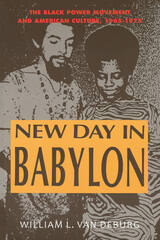 New Day in Babylon: The Black Power Movement and American Culture, 1965-1975
William L. Van Deburg
University of Chicago Press, 1992 The most comprehensive account available of the rise and fall of the Black Power Movement and of its dramatic transformation of both African-American and larger American culture. With a gift for storytelling and an ear for street talk, William Van Deburg chronicles a decade of deep change, from the armed struggles of the Black Panther party to the cultural nationalism of artists and writers creating a new aesthetic. Van Deburg contends that although its tactical gains were sometimes short-lived, the Black Power movement did succeed in making a revolution—one in culture and consciousness—that has changed the context of race in America.
"New Day in Babylon is an extremely intelligent synthesis, a densely textured evocation of one of American history's most revolutionary transformations in ethnic group consciousness."—Bob Blauner, New York Times
Winner of the Gustavus Myers Center Outstanding Book Award, 1993
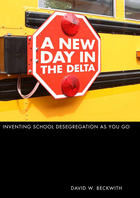 A New Day in the Delta: Inventing School Desegregation As You Go
David W. Beckwith
University of Alabama Press, 2009 Explores Mississippi’s school desegregation from the viewpoint of a white teacher
A New Day in the Delta is a fresh and appealing memoir of the experience of a young white college graduate in need of a job as the Vietnam War reached its zenith. David Beckwith applied and was accepted for a teaching position in the Mississippi Delta in the summer of 1969. Although it seemed to him a bit strange that he was accepted so quickly for this job while his other applications went nowhere, he was grateful for the opportunity. Beckwith reported for work to learn that he was to be assigned to an all-black school as the first step in Mississippi’s long-deferred school desegregation.
The nation and Mississippi alike were being transformed by war and evolving racial relations, and Beckwith found himself on the cutting edge of the transformation of American education and society in one of the most resistant (and poor) corners of the country. Beckwith’s revealing and often amusing story of the year of mutual incomprehension between an inexperienced white teacher and a classroom full of black children who had had minimal contact with any whites. This is history as it was experienced by those who were thrust into another sort of “front line.”
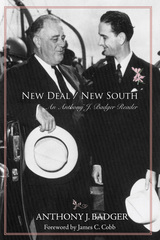 New Deal / New South: An Anthony J. Badger Reader
Anthony J. Badger
University of Arkansas Press, 2007 The twelve essays in this book, several published here for the first time, represent some of Tony Badger’s best work in his ongoing examination of how white liberal southern politicians who came to prominence in the New Deal and World War II handled the race issue when it became central to politics in the 1950s and 1960s. Franklin Roosevelt in the 1930s thought a new generation of southerners would wrestle Congress back from the conservatives. The Supreme Court thought that responsible southern leaders would lead their communities to general school desegregation after the Brown decision. John F. Kennedy believed that moderate southern leaders would, with government support, facilitate peaceful racial change. Badger’s writings demonstrate how all of these hopes were misplaced. Badger shows time and time again that moderates did not control southern politics. Southern liberal politicians for the most part were paralyzed by their fear that ordinary southerners were all-too-aroused by the threat of integration and were reluctant to offer a coherent alternative to the conservative strategy of resistance.
The New Deal and the Last Hurrah: Pittsburgh Machine Politics
Bruce M. Stave
University of Pittsburgh Press, 1970 In studying the effect of New Deal on urban political machines, Bruce M. Stave challenges the traditional view of declining bossism in America from the 1930s through the 1950s. Using Pittsburgh as his case study, he demonstrates how political power was transferred from a once-invincible Republican machine to the Democratic Party led by David L. Lawrence. Stave traces the consolidation of patronage control and grassroots voting support with a special emphasis on the interplay between politics and federal work relief during the depression decade.
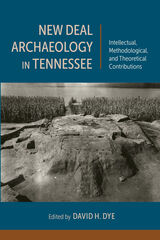 New Deal Archaeology in Tennessee: Intellectual, Methodological, and Theoretical Contributions
Edited by David H. Dye
University of Alabama Press, 2016 New Deal Archaeology in Tennessee is a collection of essays that explore how contemporary archaeology was catalyzed and shaped by the archaeological revolution during the New Deal era.
New Deal Archaeology in Tennessee tells the engrossing story of Southeastern archaeology in the 1930s. The Tennessee Valley Authority Act of May 1933 initiated an ambitious program of flood control and power generation by way of a chain of hydroelectric dams on the Tennessee River. The construction of these dams flooded hundreds of thousands of square miles of river bottoms, campsites, villages, and towns that had been homes to Native Americans for centuries. This triggered an urgent need to undertake extensive archaeological fieldwork throughout the region. Those studies continue to influence contemporary archaeology.
The state of Tennessee and the Tennessee Valley were especially well suited research targets thanks to their mild climate and long field seasons. A third benefit in the 1930s was the abundance of labor supplied by Tennesseans unemployed during the Great Depression. Within months of the passage of the Tennessee Valley Authority Act, teams of archaeologists fanned out across the state and region under the farsighted direction of Smithsonian Institution curators Neil M. Judd, Frank H. H. Roberts, and Frank M. Setzler. The early months of 1934 would become the busiest period of archaeological fieldwork in US history.
The twelve insightful essays in New Deal Archaeology in Tennessee document and explore this unique peak in archaeological study. Chapters highlight then-new techniques such as mound “peeling” and stratigraphic excavation adapted from the University of Chicago; the four specific New Deal sites of Watts Bar Reservoir, Mound Bottom, Pack, and Chickamauga Basin; bioarchaeology in the New Deal; and the enduring impact of the New Deal on contemporary fieldwork.
The challenges of the 1930s in recruiting skilled labor, training unskilled ancillary labor, developing and improvising new field methods, and many aspects of archaeological policies, procedures, and best-practices laid much of the foundation of contemporary archaeological practice. New Deal Archaeology in Tennessee offers an invaluable record of that pivotal time for professional, student, and amateur archaeologists.
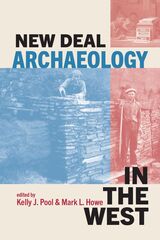 New Deal Archaeology in the West
Edited by Kelly J. Pool and Mark L. Howe
University of Utah Press, 2023 From 1933 to 1944, a wide range of archaeological and cultural heritage projects were funded across this country as part of Franklin D. Roosevelt’s New Deal. The results of work east of the Mississippi River are amply documented in other publications. However, little has been reported or synthesized regarding western archaeological work, its role in economic recovery, or its impact on the direction and knowledge of the discipline. This volume shares previously untold stories of New Deal archaeology from across the American West and explores insights into the past revealed by these projects.
Descriptions of New Deal projects and their contributions to our understanding of the past, as well as the stories of those involved—archaeologists, avocationalists, and others—are woven together across the chapters. Also documented are lost or scattered artifacts, records, and ancestors’ remains; incomplete analyses; unpublished reports; inconsistent application of scientific methodology; and the loss of Native sacred sites and traditional lands and lifeways. Authors highlight characteristics that distinguished the American West from the East during the Depression and affected the nature of New Deal projects, including the extent of federal land available in the West, the reliance of sparsely populated areas upon tourism, the presence of large resident Native populations with deep histories, and the wide-ranging degree of existing archaeology infrastructure in each state. This volume demonstrates that despite regional differences, New Deal-funded archaeological and cultural heritage projects created a legacy of knowledge and practice across the nation.
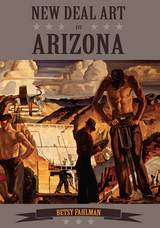 New Deal Art in Arizona
Betsy Fahlman
University of Arizona Press, 2009 Arizona’s art history is emblematic of the story of the modern West, and few periods in that history were more significant than the era of the New Deal. From Dorothea Lange and Ansel Adams to painters and muralists including Native American Gerald Nailor, the artists working in Arizona under New Deal programs were a notable group whose art served a distinctly public purpose. Their photography, paintings, and sculptures remain significant exemplars of federal art patronage and offer telling lessons positioned at the intersection of community history and culture.
Art is a powerful instrument of historical record and cultural construction, and many of the issues captured by the Farm Security Administration photographers remain significant issues today: migratory labor, the economic volatility of the mining industry, tourism, and water usage. Art tells important stories, too, including the work of Japanese American photographer Toyo Miyatake in Arizona’s internment camps, murals by Native American artist Gerald Nailor for the Navajo Nation Council Chamber in Window Rock, and African American themes at Fort Huachuca. Illustrated with 100 black-andwhite photographs and covering a wide range of both media and themes, this fascinating and accessible volume reclaims a richly textured story of Arizona history with potent lessons for today.
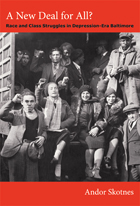 A New Deal for All?: Race and Class Struggles in Depression-Era Baltimore
Andor Skotnes
Duke University Press, 2012 In A New Deal for All? Andor Skotnes examines the interrelationships between the Black freedom movement and the workers' movement in Baltimore and Maryland during the Great Depression and the early years of the Second World War. Adding to the growing body of scholarship on the long civil rights struggle, he argues that such "border state" movements helped resuscitate and transform the national freedom and labor struggles. In the wake of the Great Crash of 1929, the freedom and workers' movements had to rebuild themselves, often in new forms. In the early 1930s, deepening commitments to antiracism led Communists and Socialists in Baltimore to launch racially integrated initiatives for workers' rights, the unemployed, and social justice. An organization of radicalized African American youth, the City-Wide Young People's Forum, emerged in the Black community and became involved in mass educational, anti-lynching, and Buy Where You Can Work campaigns, often in multiracial alliances with other progressives. During the later 1930s, the movements of Baltimore merged into new and renewed national organizations, especially the CIO and the NAACP, and built mass regional struggles. While this collaboration declined after the war, Skotnes shows that the earlier cooperative efforts greatly shaped national freedom campaigns to come—including the civil rights movement.
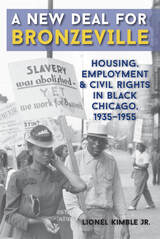 A New Deal for Bronzeville: Housing, Employment, and Civil Rights in Black Chicago, 1935-1955
Lionel Kimble Jr.
Southern Illinois University Press, 2015 Illinois State Historical Society Certificate of Excellence 2016
During the Great Migration of the 1920s and 1930s, southern African Americans flocked to the South Side Chicago community of Bronzeville, the cultural, political, social, and economic hub of African American life in the city, if not the Midwest. The area soon became the epicenter of community activism as working-class African Americans struggled for equality in housing and employment. In this study, Lionel Kimble Jr. demonstrates how these struggles led to much of the civil rights activism that occurred from 1935 to 1955 in Chicago and shows how this working-class activism and culture helped to ground the early civil rights movement. Despite the obstacles posed by the Depression, blue-collar African Americans worked with leftist organizations to counter job discrimination and made strong appeals to New Deal allies for access to public housing. Kimble details how growing federal intervention in local issues during World War II helped African Americans make significant inroads into Chicago’s war economy and how returning African American World War II veterans helped to continue the fight against discrimination in housing and employment after the war. The activism that appeared in Bronzeville was not simply motivated by the “class consciousness” rhetoric of the organized labor movement but instead grew out of everyday struggles for racial justice, citizenship rights, and improved economic and material conditions. With its focus on the role of working-class African Americans—as opposed to the middle-class leaders who have received the most attention from civil rights historians in the past—A New Deal for Bronzeville makes a significant contribution to the study of civil rights work in the Windy City and enriches our understanding of African American life in mid-twentieth-century Chicago.
This publication is partially funded by a grant from Furthermore: a program of the J.M. Kaplan fund.
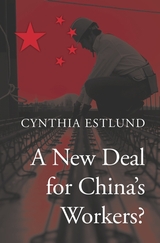 A New Deal for China’s Workers?
Cynthia Estlund
Harvard University Press, 2017 China’s labor landscape is changing, and it is transforming the global economy in ways that we cannot afford to ignore. Once-silent workers have found their voice, organizing momentous protests, such as the 2010 Honda strikes, and demanding a better deal. China’s leaders have responded not only with repression but with reforms. Are China’s workers on the verge of a breakthrough in industrial relations and labor law reminiscent of the American New Deal?
In A New Deal for China’s Workers? Cynthia Estlund views this changing landscape through the comparative lens of America’s twentieth-century experience with industrial unrest. China’s leaders hope to replicate the widely shared prosperity, political legitimacy, and stability that flowed from America’s New Deal, but they are irrevocably opposed to the independent trade unions and mass mobilization that were central to bringing it about. Estlund argues that the specter of an independent labor movement, seen as an existential threat to China’s one-party regime, is both driving and constraining every facet of its response to restless workers.
China’s leaders draw on an increasingly sophisticated toolkit in their effort to contain worker activism. The result is a surprising mix of repression and concession, confrontation and cooptation, flaws and functionality, rigidity and pragmatism. If China’s laborers achieve a New Deal, it will be a New Deal with Chinese characteristics, very unlike what workers in the West achieved in the last century. Estlund’s sharp observations and crisp comparative analysis make China’s labor unrest and reform legible to Western readers.
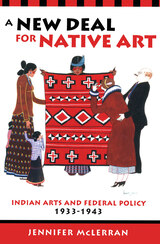 A New Deal for Native Art: Indian Arts and Federal Policy, 1933-1943
Jennifer McLerran
University of Arizona Press, 2009 As the Great Depression touched every corner of America, the New Deal promoted indigenous arts and crafts as a means of bootstrapping Native American peoples. But New Deal administrators' romanticization of indigenous artists predisposed them to favor pre-industrial forms rather than art that responded to contemporary markets.
In A New Deal for Native Art, Jennifer McLerran reveals how positioning the native artist as a pre-modern Other served the goals of New Deal programs—and how this sometimes worked at cross-purposes with promoting native self-sufficiency. She describes federal policies of the 1930s and early 1940s that sought to generate an upscale market for Native American arts and crafts. And by unraveling the complex ways in which commodification was negotiated and the roles that producers, consumers, and New Deal administrators played in that process, she sheds new light on native art’s commodity status and the artist’s position as colonial subject.
In this first book to address the ways in which New Deal Indian policy specifically advanced commodification and colonization, McLerran reviews its multi-pronged effort to improve the market for Indian art through the Indian Arts and Crafts Board, arts and crafts cooperatives, murals, museum exhibits, and Civilian Conservation Corps projects. Presenting nationwide case studies that demonstrate transcultural dynamics of production and reception, she argues for viewing Indian art as a commodity, as part of the national economy, and as part of national political trends and reform efforts.
McLerran marks the contributions of key individuals, from John Collier and Rene d’Harnoncourt to Navajo artist Gerald Nailor, whose mural in the Navajo Nation Council House conveyed distinctly different messages to outsiders and tribal members. Featuring dozens of illustrations, A New Deal for Native Art offers a new look at the complexities of folk art “revivals” as it opens a new window on the Indian New Deal.
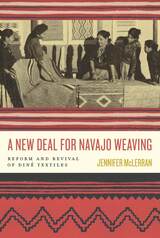 A New Deal for Navajo Weaving: Reform and Revival of Diné Textiles
Jennifer McLerran
University of Arizona Press, 2022 A New Deal for Navajo Weaving provides a detailed history of early to mid-twentieth-century Diné weaving projects by non-Natives who sought to improve the quality and marketability of Navajo weaving but in so doing failed to understand the cultural significance of weaving and its role in the lives of Diné women.
By the 1920s the durability and market value of Diné weavings had declined dramatically. Indian welfare advocates established projects aimed at improving the materials and techniques. Private efforts served as models for federal programs instituted by New Deal administrators. Historian Jennifer McLerran details how federal officials developed programs such as the Southwest Range and Sheep Breeding Laboratory at Fort Wingate in New Mexico and the Navajo Arts and Crafts Guild. Other federal efforts included the publication of Native natural dye recipes; the publication of portfolios of weaving designs to guide artisans; and the education of consumers through the exhibition of weavings, aiding them in their purchases and cultivating an upscale market. McLerran details how government officials sought to use these programs to bring the Diné into the national economy; instead, these federal tactics were ineffective because they marginalized Navajo women and ignored the important role weaving plays in the resilience and endurance of wider Diné culture.
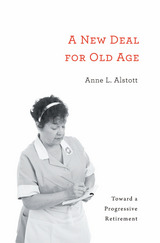 A New Deal for Old Age: Toward a Progressive Retirement
Anne L. Alstott
Harvard University Press, 2016 As America’s haves and have-nots drift further apart, rising inequality has undermined one of the nation’s proudest social achievements: the Social Security retirement system. Unprecedented changes in longevity, marriage, and the workplace have made the experience of old age increasingly unequal. For educated Americans, the traditional retirement age of 65 now represents late middle age. These lucky ones typically do not face serious impediments to employment or health until their mid-70s or even later. By contrast, many poorly educated earners confront obstacles of early disability, limited job opportunities, and unemployment before they reach age 65.
America’s system for managing retirement is badly out of step with these realities. Enacted in the 1930s, Social Security reflects a time when most workers were men who held steady jobs until retirement at 65 and remained married for life. The program promised a dignified old age for rich and poor alike, but today that egalitarian promise is failing. Anne L. Alstott makes the case for a progressive program that would permit all Americans to retire between 62 and 76 but would provide more generous early retirement benefits for workers with low wages or physically demanding jobs. She also proposes a more equitable version of the outdated spousal benefit and a new phased retirement option to permit workers to transition out of the workforce gradually.
A New Deal for Old Age offers a pragmatic and principled agenda for renewing America’s most successful and popular social welfare program.
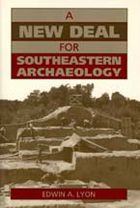 A New Deal for Southeastern Archaeology
Edwin A. Lyon
University of Alabama Press, 1996 Recipient of the 1994 Anne B. and James B. McMillan Prize
This comprehensive study provides a history of New Deal archaeology in the Southeast in the 1930s and early 1940s and focuses on the projects of the Federal Emergency Relief Administration, the Civil Works Administration, the Works Progress Administration, the Tennessee Valley Authority, the National Park Service, and the Smithsonian Institution.
Utilizing primary sources including correspondence and unpublished reports, Lyon demonstrates the great importance of the New Deal projects in the history of southeastern and North American archaeology. New Deal archaeology transformed the practice of archaeology in the Southeast and created the basis for the discipline that exists today. With the current emphasis on curation and repatriation, archaeologists and historians will find this volume invaluable in reconstructing the history of the projects that generated the many collections that now fill our museums.
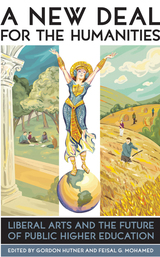 A New Deal for the Humanities: Liberal Arts and the Future of Public Higher Education
Hutner, Gordon
Rutgers University Press, 2015 Many in higher education fear that the humanities are facing a crisis. But even if the rhetoric about “crisis” is overblown, humanities departments do face increasing pressure from administrators, politicians, parents, and students. In A New Deal for the Humanities, Gordon Hutner and Feisal G. Mohamed bring together twelve prominent scholars who address the history, the present state, and the future direction of the humanities. These scholars keep the focus on public higher education, for it is in our state schools that the liberal arts are taught to the greatest numbers and where their neglect would be most damaging for the nation.
The contributors offer spirited and thought-provoking debates on a diverse range of topics. For instance, they deplore the push by administrations to narrow learning into quantifiable outcomes as well as the demands of state governments for more practical, usable training. Indeed, for those who suggest that a college education should be “practical”—that it should lean toward the sciences and engineering, where the high-paying jobs are—this book points out that while a few nations produce as many technicians as the United States does, America is still renowned worldwide for its innovation and creativity, skills taught most effectively in the humanities. Most importantly, the essays in this collection examine ways to make the humanities even more effective, such as offering a broader array of options than the traditional major/minor scheme, options that combine a student’s professional and intellectual interests, like the new medical humanities programs.
A democracy can only be as energetic as the minds of its citizens, and the questions fundamental to the humanities are also fundamental to a thoughtful life. A New Deal for the Humanities takes an intrepid step in making the humanities—and our citizens—even stronger in the future.
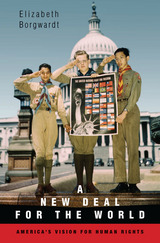 A New Deal for the World: America’s Vision for Human Rights
Elizabeth Borgwardt
Harvard University Press, 2005 In a work of sweeping scope and luminous detail, Elizabeth Borgwardt describes how a cadre of World War II American planners inaugurated the ideas and institutions that underlie our modern international human rights regime.
Borgwardt finds the key in the 1941 Atlantic Charter and its Anglo-American vision of “war and peace aims.” In attempting to globalize what U.S. planners heralded as domestic New Deal ideas about security, the ideology of the Atlantic Charter—buttressed by FDR’s “Four Freedoms” and the legacies of World War I—redefined human rights and America’s vision for the world.
Three sets of international negotiations brought the Atlantic Charter blueprint to life—Bretton Woods, the United Nations, and the Nuremberg trials. These new institutions set up mechanisms to stabilize the international economy, promote collective security, and implement new thinking about international justice. The design of these institutions served as a concrete articulation of U.S. national interests, even as they emphasized the importance of working with allies to achieve common goals. The American architects of these charters were attempting to redefine the idea of security in the international sphere. To varying degrees, these institutions and the debates surrounding them set the foundations for the world we know today.
By analyzing the interaction of ideas, individuals, and institutions that transformed American foreign policy—and Americans’ view of themselves—Borgwardt illuminates the broader history of modern human rights, trade and the global economy, collective security, and international law. This book captures a lost vision of the American role in the world.
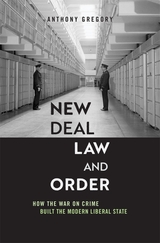 New Deal Law and Order: How the War on Crime Built the Modern Liberal State
Anthony Gregory
Harvard University Press, 2024 A historian traces the origins of the modern law-and-order state to a surprising source: the liberal policies of the New Deal.
Most Americans remember the New Deal as the crucible of modern liberalism. But while it is most closely associated with Roosevelt’s efforts to end the Depression and provide social security for the elderly, we have failed to acknowledge one of its most enduring legacies: its war on crime. Crime policy, Anthony Gregory argues, was a defining feature of the New Deal. Tough-on-crime policies provided both the philosophical underpinnings and the institutional legitimacy necessary to remake the American state.
New Deal Law and Order follows President Franklin Roosevelt, Attorney General Homer Cummings, and their war on crime coalition, which overcame the institutional and political challenges to the legitimacy of national law enforcement. Promises of law and order helped to manage tensions among key Democratic Party factions—organized labor, Black Americans, and white Southerners. Their anticrime program, featuring a strengthened criminal code, an empowered FBI, and the first federal war on marijuana, was essential to the expansion of national authority previously stymied on constitutional grounds. This nascent carceral liberalism both accommodated a redoubled emphasis on rehabilitation and underwrote a massive wave of prison construction across the country. Alcatraz, an unforgiving punitive model, was designed to be a “symbol of the triumph of law and order.” This emergent security state eventually transformed both liberalism and federalism, and in the process reoriented the terms of US political debate for decades to come.
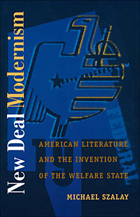 New Deal Modernism: American Literature and the Invention of the Welfare State
Michael Szalay
Duke University Press, 2000 In New Deal Modernism Michael Szalay examines the effect that the rise of the welfare state had on American modernism during the 1930s and 1940s, and, conversely, what difference this revised modernism made to the New Deal’s famed invention of “Big Government.”
Szalay situates his study within a liberal culture bent on security, a culture galvanized by its imagined need for private and public insurance.
Taking up prominent exponents of social and economic security—such as Franklin Delano Roosevelt, John Maynard Keynes, and John Dewey—Szalay demonstrates how the New Deal’s revision of free-market culture required rethinking the political function of aesthetics. Focusing in particular on the modernist fascination with the relation between form and audience, Szalay offers innovative accounts of Busby Berkeley, Jack London, James M. Cain, Robert Frost, Ayn Rand, Betty Smith, and Gertrude Stein, as well as extended analyses of the works of Ernest Hemingway, John Steinbeck, and Richard Wright.
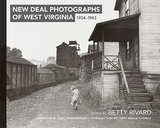 New Deal Photographs of West Virginia, 1934-1943
Betty Rivard
West Virginia University Press, 2012 Upon entering the White House in 1933, President Franklin D. Roosevelt faced an ailing economy in the throes of the Great Depression and rushed to transform the country through recovery programs and legislative reform. By 1934, he began to send professional photographers to the state of West Virginia to document living conditions and the effects of his New Deal programs. The photographs from the Farm Security Administration Project not only introduced “America to Americans,” exposing a continued need for government intervention, but also captured powerful images of life in rural and small town America. New Deal Photographs of West Virginia, 1934-1943 presents images of the state’s northern and southern coalfields, the subsistence homestead projects of Arthurdale, Eleanor, and Tygart Valley, and various communities from Charleston to Clarksburg and Parkersburg to Elkins. With over one hundred and fifty images by ten FSA photographers, including Walker Evans, Marion Post Wolcott, Arthur Rothstein, and Ben Shahn, this collection is a remarkable proclamation of hardship, hope, endurance, and, above all, community. These photographs provide a glimpse into the everyday lives of West Virginians during the Great Depression and beyond.
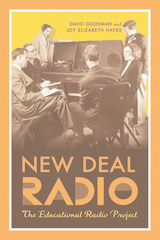 New Deal Radio: The Educational Radio Project
David Goodman
Rutgers University Press, 2022 New Deal Radio examines the federal government's involvement in broadcasting during the New Deal period, looking at the U.S. Office of Education's Educational Radio Project. The fact that the United States never developed a national public broadcaster, has remained a central problem of US broadcasting history. Rather than ponder what might have been, authors Joy Hayes and David Goodman look at what did happen. There was in fact a great deal of government involvement in broadcasting in the US before 1945 at local, state, and federal levels. Among the federal agencies on the air were the Department of Agriculture, the National Park Service, the Works Progress Administration (WPA) and the Federal Theatre Project.
Contextualizing the different series aired by the Educational Radio Project as part of a unified project about radio and citizenship is crucial to understanding them. New Deal Radio argues that this distinctive government commercial partnership amounted to a critical intervention in US broadcasting and an important chapter in the evolution of public radio in America.
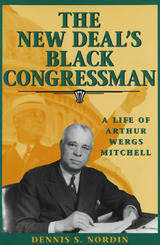 The New Deal's Black Congressman: A Life of Arthur Wergs Mitchell
Dennis S. Nordin
University of Missouri Press, 1997
In this fascinating biography, Dennis S. Nordin chronicles the life of Arthur Wergs Mitchell, the first black Democrat to be elected to Congress. Although he is now one of history's forgotten figures, Mitchell was once almost as well known among black college students as Jesse Owens and Joe Louis. Nordin, however, shows that Mitchell's achievements and thus his fame were the direct result of his dishonorable deeds.
Mitchell's life began humbly in rural Alabama in 1883. After a memorable boyhood, he studied briefly at Tuskegee Institute, which had a major effect on Mitchell's outlook. He went on to study law in Washington, D.C., and thereafter became involved in politics when the Republicans sent him to Chicago in 1928 to campaign for Herbert Hoover. Impressed by Chicago's ward system and patronage politics, he returned to the city and made a bid for a congressional seat, changing political parties in an effort to oust black Republican Congressman Oscar DePriest. To accomplish this, Mitchell resorted to "Uncle Tomming," ingratiating himself with the white bosses of the Chicago Machine.
Within five years a Machine nomination was in hand, and Mitchell found himself owing his political success and thus his loyalty to the Chicago Machine. Because he was under strict orders from Chicago Mayor Ed Kelly not to cause problems or be confrontational, Mitchell rarely, if ever, supported the interests of his constituents.
It was only in the later years of his political career that Mitchell began to show opposition to his Machine backing. He had been an opponent of the NAACP in his first years in Congress, but later became a strong supporter of an NAACP antilynching bill. In 1937, Mitchell sued three railroad companies for not offering equal treatment and accommodations for all passengers. The case went to the Supreme Court, which gave Mitchell a favorable ruling. As a result of these "confrontational" acts, the Chicago Machine quickly decided not to endorse Mitchell in the elections of 1942.
In his research, Nordin relies on such primary sources as manuscripts, newspapers, and court records, as well as information from interviews with Mitchell's friends, neighbors, colleagues, political rivals, and widow. Woven tightly together, these sources form a narrative that reveals a most complex and intriguing individual, a man whose political and moral views and acts were strongly linked to the goals of the great Chicago political Machine.
 New Deep Territories: A Story of France’s Exploration of the Seafloor
Beatriz Martinez-Rius
University of Chicago Press How France integrated the seafloor into its national territory through an interplay of science, technology, and geopolitical ambition during the Cold War.
Beneath the surface of the seas and oceans lies a territory as important for human societies as the exposed land and the airspace above them: the seafloor. Our daily life is inextricably linked to the seafloor and its resources, from global telecommunications infrastructure to offshore oil and gas extraction to strategic mineral mining.
By focusing on France, a country with an underwater territory seventeen times larger than its emerged lands, New Deep Territories explains how the seafloor emerged as a territory during the second half of the twentieth century. Beatriz Martinez-Rius traces the evolution of the country’s seafloor exploration and the motivations that fueled it, from the aftermath of World War I to the late 1970s. In the early 1960s, the seafloor, instead of colonial territories, came to be seen as a source of natural resources. The French government, corporations such as oil companies, as well as scientists, all imagined future uses of the seafloor, and these ever-evolving aspirations drove the development of technologies, techniques, and scientific fields that built up the submerged territory. Government officers and industrial stakeholders massively invested in technoscientific development to prepare for a future reliant on seafloor resources, including oil, gas, and minerals, well before it was technologically possible, economically feasible, and legally acceptable to extract them. The future they envisioned did not arrive, but their investment resulted in an unprecedented understanding of the ocean’s crust. Today, once again, national governments, international organizations, and private stakeholders are turning their attention to the seafloor.
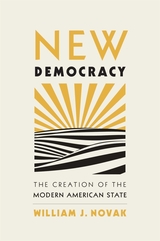 New Democracy: The Creation of the Modern American State
William J. Novak
Harvard University Press, 2022 The activist state of the New Deal started forming decades before the FDR administration, demonstrating the deep roots of energetic government in America.
In the period between the Civil War and the New Deal, American governance was transformed, with momentous implications for social and economic life. A series of legal reforms gradually brought an end to nineteenth-century traditions of local self-government and associative citizenship, replacing them with positive statecraft: governmental activism intended to change how Americans lived and worked through legislation, regulation, and public administration. The last time American public life had been so thoroughly altered was in the late eighteenth century, at the founding and in the years immediately following.
William J. Novak shows how Americans translated new conceptions of citizenship, social welfare, and economic democracy into demands for law and policy that delivered public services and vindicated people’s rights. Over the course of decades, Americans progressively discarded earlier understandings of the reach and responsibilities of government and embraced the idea that legislators and administrators in Washington could tackle economic regulation and social-welfare problems. As citizens witnessed the successes of an energetic, interventionist state, they demanded more of the same, calling on politicians and civil servants to address unfair competition and labor exploitation, form public utilities, and reform police power.
Arguing against the myth that America was a weak state until the New Deal, New Democracy traces a steadily aggrandizing authority well before the Roosevelt years. The United States was flexing power domestically and intervening on behalf of redistributive goals for far longer than is commonly recognized, putting the lie to libertarian claims that the New Deal was an aberration in American history.
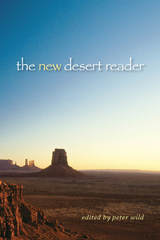 The New Desert Reader
Wild, Peter
University of Utah Press, 2006 The New Desert Reader brings together a historical cross section of writing about the American Southwest in selections that demonstrate how thinking about American deserts has changed from the earliest times to the present day. Beginning with the centuries-old legends of the Tohono O’Odham Indians, it moves through the foresighted observations of John Wesley Powell, one-armed explorer of the Grand Canyon; continues with the delicate appreciations of Mary Austin and Joseph Wood Krutch; includes examples of the keen activist writings of Wallace Stegner and Edward Abbey; and finishes with such contemporary desert writers as Tony Hillerman and others.
A slow change in outlook dominates the book, as attitudes shift from viewing the desert as a place to be despised or exploited to an appreciation of it as a special place, an arena of highly complex natural communities, and a wild refuge for the human body and soul. Comprehensive and brightly informative, The New Desert Reader will be invaluable to anyone interested in the history, literature, and beauty of North America’s treasured desert places.
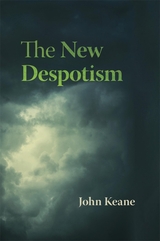 The New Despotism
John Keane
Harvard University Press, 2020 An Australian Book Review Best Book of the Year
A disturbing in-depth exposé of the antidemocratic practices of despotic governments now sweeping the world.
One day they’ll be like us. That was once the West’s complacent and self-regarding assumption about countries emerging from poverty, imperial rule, or communism. But many have hardened into something very different from liberal democracy: what the eminent political thinker John Keane describes as a new form of despotism. And one day, he warns, we may be more like them.
Drawing on extensive travels, interviews, and a lifetime of thinking about democracy and its enemies, Keane shows how governments from Russia and China through Central Asia to the Middle East and Europe have mastered a formidable combination of political tools that threaten the established ideals and practices of power-sharing democracy. They mobilize the rhetoric of democracy and win public support for workable forms of government based on patronage, dark money, steady economic growth, sophisticated media controls, strangled judiciaries, dragnet surveillance, and selective violence against their opponents.
Casting doubt on such fashionable terms as dictatorship, autocracy, fascism, and authoritarianism, Keane makes a case for retrieving and refurbishing the old term “despotism” to make sense of how these regimes function and endure. He shows how they cooperate regionally and globally and draw strength from each other’s resources while breeding global anxieties and threatening the values and institutions of democracy. Like Montesquieu in the eighteenth century, Keane stresses the willing complicity of comfortable citizens in all these trends. And, like Montesquieu, he worries that the practices of despotism are closer to home than we care to admit.
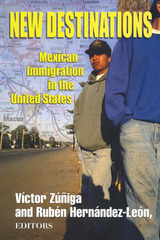 New Destinations: Mexican Immigration in the United States
Victor Zuniga
Russell Sage Foundation, 2005 Mexican immigration to the United States—the oldest and largest immigration movement to this country—is in the midst of a fundamental transformation. For decades, Mexican immigration was primarily a border phenomenon, confined to Southwestern states. But legal changes in the mid-1980s paved the way for Mexican migrants to settle in parts of America that had no previous exposure to people of Mexican heritage. In New Destinations, editors Víctor Zúñiga and Rubén Hernández-León bring together an inter-disciplinary team of scholars to examine demographic, social, cultural, and political changes in areas where the incorporation of Mexican migrants has deeply changed the preexisting ethnic landscape. New Destinations looks at several of the communities where Mexican migrants are beginning to settle, and documents how the latest arrivals are reshaping—and being reshaped by—these new areas of settlement. Contributors Jorge Durand, Douglas Massey, and Chiara Capoferro use census data to diagram the historical evolution of Mexican immigration to the United States, noting the demographic, economic, and legal factors that led recent immigrants to move to areas where few of their predecessors had settled. Looking at two towns in Southern Louisiana, contributors Katharine Donato, Melissa Stainback, and Carl Bankston III reach a surprising conclusion: that documented immigrant workers did a poorer job of integrating into the local culture than their undocumented peers. They attribute this counterintuitive finding to documentation policies, which helped intensify employer control over migrants and undercut the formation of a stable migrant community among documented workers. Brian Rich and Marta Miranda detail an ambivalent mixture of paternalism and xenophobia by local residents toward migrants in Lexington, Kentucky. The new arrivals were welcomed for their strong work ethic so long as they stayed in "invisible" spheres such as fieldwork, but were resented once they began to take part in more public activities like schools or town meetings. New Destinations also provides some hopeful examples of progress in community relations. Several chapters, including Mark Grey and Anne Woodrick's examination of a small Iowa town, point to the importance of dialogue and mediation in establishing amicable relations between ethnic groups in newly multi-cultural settings. New Destinations is the first scholarly assessment of Mexican migrants' experience in the Midwest, Northeast, and deep South—the latest settlement points for America's largest immigrant group. Enriched by perspectives from demographers, anthropologists, sociologists, folklorists, and political scientists, this volume is an essential starting point for scholarship on the new Mexican migration.
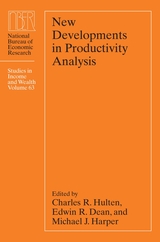 New Developments in Productivity Analysis
Edited by Charles R. Hulten, Edwin R. Dean, and Michael J. Harper
University of Chicago Press, 2001 The productivity slowdown of the 1970s and 1980s and the resumption of productivity growth in the 1990s have provoked controversy among policymakers and researchers. Economists have been forced to reexamine fundamental questions of measurement technique. Some researchers argue that econometric approaches to productivity measurement usefully address shortcomings of the dominant index number techniques while others maintain that current productivity statistics underreport damage to the environment. In this book, the contributors propose innovative approaches to these issues. The result is a state-of-the-art exposition of contemporary productivity analysis.
Charles R. Hulten is professor of economics at the University of Maryland. He has been a senior research associate at the Urban Institute and is chair of the Conference on Research in Income and Wealth of the National Bureau of Economic Research. Michael Harper is chief of the Division of Productivity Research at the Bureau of Labor Statistics. Edwin R. Dean, formerly associate commissioner for Productivity and Technology at the Bureau of Labor Statistics, is adjunct professor of economics at The George Washington University.
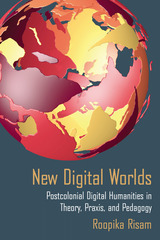 New Digital Worlds: Postcolonial Digital Humanities in Theory, Praxis, and Pedagogy
Roopika Risam
Northwestern University Press, 2019 The emergence of digital humanities has been heralded for its commitment to openness, access, and the democratizing of knowledge, but it raises a number of questions about omissions with respect to race, gender, sexuality, disability, and nation. Postcolonial digital humanities is one approach to uncovering and remedying inequalities in digital knowledge production, which is implicated in an information-age politics of knowledge.
New Digital Worlds traces the formation of postcolonial studies and digital humanities as fields, identifying how they can intervene in knowledge production in the digital age. Roopika Risam examines the role of colonial violence in the development of digital archives and the possibilities of postcolonial digital archives for resisting this violence. Offering a reading of the colonialist dimensions of global organizations for digital humanities research, she explores efforts to decenter these institutions by emphasizing the local practices that subtend global formations and pedagogical approaches that support this decentering. Last, Risam attends to human futures in new digital worlds, evaluating both how algorithms and natural language processing software used in digital humanities projects produce universalist notions of the "human" and also how to resist this phenomenon.
 New Dimensions of Political Economy
Walter W. Heller
Harvard University Press Walter W. Heller was Chairman of the Council of Economic Advisers throughout President Kennedy's Administration and during the first year of President Johnson's. Here, in a book of immediate importance and great vision, he examines the profound and rapid changes that are taking place during the 1960's in American economic policy. In this decade economics has come of age, and the Keynesian revolution has been completed.
The economic health and stability of the nation are now among the President's major concerns. The need to formulate policy in this area has thrust the political economist into a new and leading role as Presidential adviser, and Mr. Heller is in a unique position to offer an inside account of these developments.
In his first book since leaving Washington to return to the University of Minnesota, he describes the emergence of Presidents Kennedy and Johnson as practicing economists, evaluates their economic policies, and sketches the patterns that are being established for the future. He tells how the grip of economic myths and false fears has been loosened in the government, with the result that economic policy is focused on sustaining prosperity without inflation, on speeding economic growth, and on realizing the fruits of true fiscal abundance.
Finally, Mr. Heller for the first time discusses in detail his own plan for revenue sharing, a new method of enlarging the flow of Federal funds to the states. The plan offers the exciting promise of a stronger fiscal base for our federalism, not only by expanding the present system of Federal grants, but also--when the demands of Vietnam relent--by developing new forms of fiscal support for state and local government.
Parts of this book were delivered by Mr. Keller as the Godkin Lectures at Harvard University in March 1966.
New Directions In Celtic Studies
Edited by Amy Hale and Philip Payton
University of Exeter Press, 1999
The primary aim of New Directions in Celtic Studies is to focus on contemporary issues and to promote interdisciplinary approaches within the subject. Written by international scholars and practitioners in fields such as folklore, ethnomusicology, art history, religious studies, tourism and education, the book brings together in one volume a wide range of perspectives. It responds to the recent questioning of the viability of the notion of 'Celticity' and the idea of Celtic Studies as a discipline and points to a renewed vitality in the subject.
New Directions in Celtic Studies is divided into four sections: popular culture and representation; commodities and Celtic lifestyles; contemporary Celtic identity and the Celtic diaspora; Celtic praxis.
 New Directions in Development Ethics: Essays in Honor of Denis Goulet
Charles K. Wilber
University of Notre Dame Press, 2010
Development ethics is a growing discipline that deals both academically and practically with the moral assessment of the ends, means, and processes of development. The essays in this collection honor and build on the pioneering work of Denis Goulet (1931-2006), arguably the founding father of development ethics. This book offers a coherent, systematic examination of new directions in the field and features contributions from some of the leading scholars in development ethics and economic development.
The introduction provides a brief history of Goulet's life and work, as well as the genesis of development economics and development ethics. The essays in New Directions in Development Ethicsare organized in three parts: the nature of development ethics in light of philosophical and religious traditions; applications of development ethics to economic analysis and growth, technological change, violent conflict, and globalization; and the practice of development ethics.
"This book is a fitting tribute to the father of modern development ethics, Denis A. Goulet. Contrary to other festschrifts honoring scholars, each chapter carefully builds on a different aspect of Goulet's work including religion, participation, equality, technology, poverty, vulnerability, and development strategy. The result is a coherent and methodical volume written by leading scholars, admirers, and friends that brings us a step closer to the kind of 'hands on' philosophy envisaged by Goulet that simultaneously embraces the ethics and practice of development." --David A. Clark, University of Manchester
"This volume gathers an impressive range of original essays from economists, philosophers, and development experts in honor of Denis Goulet, a pioneering development ethicist. At a time when development is widely championed as a means for expanding commercial markets, averting terrorism and social unrest, or protecting the biosphere, these papers refreshingly restore focus on the moral imperative of development according to the Golden Rule. All persons have a right to just treatment, and a responsibility to ensure justice for others. Denis Goulet was an articulate champion of that foundational premise of development. This volume nicely honors his memory by projecting his voice in new scholarship." --Christopher B. Barrett, Cornell University
"Here we have a fitting and valuable tribute to Denis Goulet--an achievement that is comprehensive and foundational. It speaks to development researchers, policy specialists, and practitioners alike. The contributors help us integrate religious values into development economics and ethics, providing a giant step forward in the field of development ethics. I especially appreciate the compatibility of their contributions with the emphasis that the Catholic theological tradition puts on the poor in development." --Gasper F. LoBiondo, S.J., Woodstock Theological Center, Georgetown University
"New Directions in Development Ethicsis a distinctive and important collection for those who care about the whole person in the process of development. The book provides a much-needed perspective on the interdisciplinary and eclectic pathways through which human progress actually occurs. Reflections, applications, and practices are three ways in which Dennis Goulet is remembered in this synthetic anthology." --Jonathan B. Wight, University of Richmond
 New Directions in Israeli Media: Film, Television, and Digital Content
Edited by Yaron Peleg, Eran Kaplan, and Ido Rosen
University of Texas Press, 2025 A comprehensive analysis of the major trends and developments in contemporary Israeli media. In the twenty-first century, Israeli filmmaking has transformed from a localized industry into a globally recognized and diverse national cinema, its filmmakers gaining prominence internationally and introducing new themes, aesthetics, and voices to the scene. At the same time, Israeli television shows have emerged as a dominant force, propelled by the spread of streaming. Through the rise of online content creation and consumption, especially in the 2010s, new voices have revolutionized the creative landscape. With Israel’s position at the cutting edge of technology and virtual platforms, Israeli media has seen a boom, winning prizes at international film festivals and adapting shows like Euphoria, Homeland, and Fauda for wider audiences. In New Directions in Israeli Media, thirteen contributors detail the shifting dynamics of Israeli cinema, television, and online content in the digital age, exploring how globalization, technological advances, and changing audience preferences are reshaping creative industries. Editors Yaron Peleg, Eran Kaplan, and Ido Rosen have assembled a volume that prompts critical reflection on the intersection of art, technology, and culture in a rapidly changing media landscape.
 New Directions in Market Design
Edited by Irene Lo, Michael Ostrovsky, Parag A. Pathak
University of Chicago Press, 2026 A comprehensive survey of the evolution of market design over the past three decades. In the mid-1990s, the first Federal Communications Commission spectrum auction and the redesign of the National Residency Matching Program collectively helped to jumpstart the field of market design. Since then, extensive research has improved auction design and broken new conceptual ground in addressing multi-agent matching problems. This volume summarizes key discoveries and advances in market design over the past three decades and explores contemporary challenges—from climate policy and electricity markets to AI-mediated exchanges and hospital resource allocation. Contributors examine how to design efficient, incentive-compatible mechanisms that are robust to shifting conditions and increasing complexity. They consider a wide variety of applications that could benefit from the market design viewpoint, such as environmental markets, school choice, and organ exchange. Together, the chapters illustrate the important interactions between economic theory, computational tools, and institutional insight.
 New Directions in Medieval Manuscript Studies and Reading Practices: Essays in Honor of Derek Pearsall
Kathryn Kerby-Fulton
University of Notre Dame Press, 2014 This volume gathers the contributions of senior and junior scholars—all indebted to the pathbreaking work of Derek Pearsall—to showcase new research prompted by his rich and ongoing legacy as a literary critic, editor, and seminal founder of Middle English manuscript studies. The contributors aim both to honor Pearsall’s work in the field he established and to introduce the complexities of interdisciplinary manuscript studies to students already familiar with medieval literature. The contributors explore a range of issues, from the study of medieval literary manuscripts to the history of medieval books, libraries, literacy, censorship, and the social classes who used the books and manuscripts—nobles, children, schoolmasters, priests, merchants, and more. In addressing reading practices, essays provide a wealth of information on marginal commentaries, images and interpretive methods, international transmission, and early print and editorial methods.
" New Directions in Medieval Manuscript Studies and Reading Practices marks the heritage of the distinguished scholar Derek Pearsall while highlighting his continuing influence on medieval manuscript studies. Buoyed by fine work of senior scholars, the collection also introduces readers to stimulating work by an upcoming generation of more recent practitioners, all of whom address crucial issues in the field: the particulars of individual manuscripts, including scribal practice, marginal commentary, and audience reception. The result is a fine collection at once canonical in some respects and innovative in others." — Paul H. Strohm, Anna S. Garbedian Professor Emeritus of the Humanities, Columbia University
"The range of topics covered in this impressive collection—manuscript studies, Lydgate, Chaucer, Gower, Hoccleve, Langland, and romance—attests to the wide-ranging influence Derek Pearsall has exerted on the field of medieval studies. It is hard to think of a scholar since the inception of English studies who has had a greater effect on so many fields of Middle English literature. The lively contributions in this volume come from Derek's colleagues, admirers, students, and students of his students, demonstrating that 'Pearsallian reading practices' will live on long into the future." —Michael Johnston, Purdue University
"This volume is an impressive tribute to Derek Pearsall's legacy and an important resource for anyone interested in manuscripts, scribes, annotators, and readers. It offers resounding evidence of the many ways that manuscript studies is a necessity for understanding medieval literary texts and textual production." —Misty Schieberle, University of Kansas
 New Directions in Private Law Theory
Edited by Fabiana Bettini, Martin Fischer, Charles Mitchell, and Prince Saprai
University College London, 2023 A wide-ranging interrogation of aspects of private law doctrine and its development, ordering, and application.
New Directions in Private Law Theory brings together some of the best new work on private law theory, reflecting the breadth of this increasingly important field. The authors adopt a variety of different approaches and contribute to ongoing and important debates about the moral foundations of private law, the individuation of areas of private law, and the connections between private law and everyday moral experience. Questions addressed include: does the diversity identified among claims in unjust enrichment mean that the category is incoherent? Are claims in tort law always about compensating for wrongs? How should we understand the parties’ agreement in a contract? The contributions shed new light on these and other topics and the ways in which they intersect and open up new lines of scholarly inquiry.
This book will be of interest to researchers working in private law and legal theory, but it will also appeal to those outside of law, most notably researchers with an interest in moral and political philosophy, economics, and history.
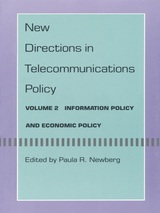 New Directions in Telecommunications: Volume 2, Information Policy and Economic Policy
Paula R. Newberg, ed.
Duke University Press, 1989 Communications policy as been a fertile area for testing theories of regulation, subsidy and incentives, free speech, political participation, and the public interest. The capacities of new communications technology have changed markedly since much of the governing legislation in the communications field was written. Such a change is likely to continue and have considerable impact on specific communications sectors and in communications policy. This two volume set of analyses undertakes a review of telecommunications policy in transition—of actions taken and not taken, of goals pursued or ignored, of the adequacy of policy vehicles and their strengths and weaknesses. The authors evaluate three categories of policy problems: those of concept, scope, and judgment in communications policy; those specific to media industries and forces affecting them; and those concerning wider public policy concerns intersecting with communication.
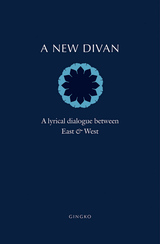 A New Divan: A Lyrical Dialogue between East and West
Edited by Barbara Schwepcke and Bill Swainson
Gingko, 2019 Now reaching its 200th anniversary, Johann Wolfgang von Goethe’s sequence of poems, the West-Eastern Divan serves as the inspiration for this new collection poems by twenty-four international poets. Goethe’s original work shows the poet looking east from his homeland of Germany to build a collection of writing inspired by the poetic traditions of Persia. In twelve books, Goethe writes on a variety of great poetic themes, including love, humor, parables, and paradise. Over the years since its original publication in 1819, the Divan has served as inspiration for a variety of literary, theoretical, and musical responses. A New Divan revisits Goethe’s work in a lively celebration of cross-cultural exchange. Works by twelve poets from the East and twelve from the West respond to the themes laid out in Goethe’s Divan and build bridges between cultures, nationalities, and languages. The poets have been paired to write in response to each of the twelve books of the Divan, and here present their multi-lingual works in eleven different languages, each with a poetic interpretation written in English. Three pairs of essays complement and shed further light on the series of poetic exchanges. These writings mirror the original notes that Goethe included in his West-Eastern Divan.
Reaching through time, language, and poetic history, A New Divan offers a lyrical conversation and opens paths of connection across cultures.
A New Documentary History of Hong Kong, 1945–1997
Edited by Florence Mok and Fung Chi Keung Charles
Hong Kong University Press, 2025 A deeply rich and new history of post-war Hong Kong from 1945 to 1997.
Through analyzing newly released archival records from the National Archives in London and the Public Records Office in Hong Kong, A New Documentary History of Hong Kong, 1945–1997 provides an updated and improved understanding of basic aspects of the city such as governance, economy, society, and culture. It also aims to investigate topics that are under-explored in previous sourcebooks, such as race and diasporas, gender and familial relations, medicine and healthcare, and environment and natural disasters. Overall, this book offers an innovative and comprehensive long-term perspective of Hong Kong’s colonial history.
New Documents Illustrating Early Christianity 11A: Texts from Ephesus
James R. Harrison
SBL Press, 2024 This volume of the New Documents Illustrating Early Christianity series introduces scholars and students to the historical, political, civic, religious, cultural, and social context of Ephesian inscriptional evidence. Each of the twenty-five entries in this volume includes one or more original inscriptions, English translation, and a commentary that sheds light on early Christianity, particularly as it relates to Ephesians, Acts, Revelation, and the Pastoral Epistles. Contributors Bradley J. Bitner, James R. Harrison, Phillip Ort, and Isaac T. Soon examine topics such as the gods and the founder of Ephesus, the political and economic relationship between Ephesus and Rome, Ephesian elites and the dynamics of honor, building activity, local sites, and graffiti.
New Documents Illustrating Early Christianity 11B: Essays on Ephesus
James R. Harrison
SBL Press, 2025 This volume of the New Documents Illustrating Early Christianity series includes essays exploring aspects of the political, religious, social, and cultural life of ancient Ephesus and surrounding villages as well as essays that address exegetical issues in Acts, Ephesians, and 1 Timothy from a documentary and historical perspective. Contributors Richard S. Ascough, Bradley J. Bitner, James R. Harrison, Michael Immendorfer, Elif Hilal Karaman, R. A. Kearsley, Stephen Llewelyn, Will Robinson, Guy MacLean Rogers, and Stephan Witetschek examine a range of topics, including the goddess Artemis, the imperial cult, civic associations, women, widows, slaves, confession inscriptions, benefaction and citizenship, and virtue.
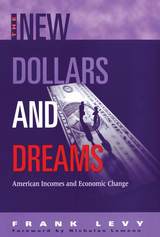 The New Dollars and Dreams: American Incomes in the Late 1990s
Frank Levy
Russell Sage Foundation, 1998 Foreword by Nicholas Lemann "A brilliant book that both clarifies and explains the seemingly contradictory trends of a booming economy, wage stagnation, and growing income inequality." —Thomas B. Edsall, author, The New Politics of Inequalityand political reporter atThe Washington Post More than a decade ago, Frank Levy's classic Dollars and Dreams offered an incisive analysis of the dramatic changes then taking place in the American standard of living. As wage stagnation and rising income inequality in the 1970s and early 80s began to undermine Americans' traditional economic optimism, Levy's book provided the first diagnosis of what he called the quiet depression. Since then, the U.S. economy has made a dramatic comeback, but economic insecurity remains widespread. New technologies, increased immigration, and global competition have opened up a new economic playing field, one with new rules and new winners and losers. The New Dollars and Dreams explores this puzzling economic landscape, in which low unemployment goes hand in hand with sluggish wage growth and high income inequality. This completely revised and expanded version of Levy's original book offers an invaluable guide to the sweeping economic, social, and political changes that have remade life in the United States over the past twenty-five years. Levy tells a fascinating and insightful story about what happened to American incomes and jobs. His plot resists the simple truths of everyday journalism, and explains the economic and political twists and turns that have shaped the current American economy—including the oil and food price inflations of the 1970s, the market deregulations and corporate downsizings of the 1980s, the emergence of women as sole breadwinners in many families, the migration of jobs to the suburbs, and the computerization of work. The New Dollars and Dreams illuminates the key sources of inequality, with chapters that examine the disparate employment progress of whites, minorities, men, and women, and it carefully investigates the claim that the concentration of very high incomes is the result of a winner-take-all economy. Although the growth of the service economy is often blamed for inequality, Levy locates a more fundamental cause in the rising educational and skill demands brought about by restructuring of work in all sectors of the economy. An important part of the story also involves the transformation of the American family from extended and two-parent households to those headed by single mothers and lone individuals. By making sense of these complex trends, The New Dollars and Dreams offers crucial insights into why, despite a thriving economy, many Americans no longer feel secure in their financial futures. A Volume in the Russell Sage Foundation Census Series
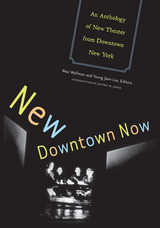 New Downtown Now: An Anthology Of New Theater From Downtown New York
Mac Wellman
University of Minnesota Press, 2006 At a time when most serious drama being written and produced for the American stage aspires only to mainstream acceptance and high-toned mediocrity, an innovative new generation of playwrights based in New York City has emerged, crafting works that challenge and undermine the conventional structure, language, and characterization of commercial theater while rejecting outdated notions of the avant-garde. New Downtown Now brings together ten new works that exemplify the playfulness, excitement, and possibilities of the theater. Characterized by fragmenting structure, hypnotic rhythms, kaleido-scopic imagery, unpredictable characters, and lyrical language, these plays resemble puzzles from which the writers are teasing revelations. Though disparate in subject matter and style, with characters ranging from a sushi chef to a soldier and settings from a taxicab to a live television broadcast, these highly original plays share a commitment to formal experimentation that places them beyond the psychological clichés of the majority and the cold condescension of postmodernism. The anthology includes Interim by Barbara Cassidy; Tragedy: a tragedy by Will Eno; Nine Come by Elana Greenfield; Shufu-Sachiko and Enoshima Island by Madelyn Kent; The Appeal by Young Jean Lee; The Vomit Talk of Ghosts by Kevin Oakes; Ajax (por nobody) by Alice Tuan; Apparition, an uneasy play of the underknown by Anne Washburn; Demon Baby by Erin Courtney.Mac Wellman is the author of numerous plays and the recipient of three Obie awards, most recently in 2003 for lifetime achievement. He is professor of playwriting at Brooklyn College. Young Jean Lee is a playwright and director, and member of the Obie award-winning company 13P. Jeffrey M. Jones is a playwright and curator of the Obie award-winning Little Theater at Tonic in New York.
New Each Day: A Spiritual Practice for Reading Psalms
Rabbi Debra J. Robbins
Central Conference of American Rabbis, 2024 Every day of the year, Jewish liturgy includes the Shir Shel Yom, a psalm recited to mark the day of the week. New Each Day by Rabbi Debra J. Robbins breathes new life into this ancient practice, inviting us to engage with psalms in a fresh, inspiring way. Daily “Reflections for Focus” offer unique insights on each psalm, with a structure for meditation and writing that encourages the reader to develop their own personal routine. Reflections for each month, based on the psalm for Rosh Chodesh, provide a full year of spiritual practice. Just as Rabbi Robbins did for the High Holy Day season in Opening Your Heart with Psalm 27, New Each Day guides us along the journey of the year with intention and meaning.
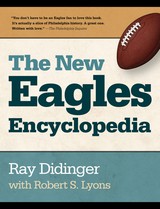 The New Eagles Encyclopedia
Ray Didinger
Temple University Press, 2014 While much has changed in the decade since the original publication of The Eagles Encyclopedia, the passion of Eagles fans has only grown stronger. That's why author Ray Didinger revised, updated, and expanded his history of the team with The New Eagles Encyclopedia.
Didinger presents a year-by-year history of the franchise from its inception in 1933 through the 2013 season. There are profiles of more than 100 players, past and present, as well as every head coach and owner along with dozens of new photographs and stats, stats, and more stats.
The New Eagles Encyclopedia includes:
* More player profiles including new entries on Nick Foles, LeSean McCoy and Michael Vick.
* The end of the Andy Reid era and the arrival of Chip Kelly.
* Expanded chapters on Eagles in the Hall of Fame and other milestone moments.
* Summaries of every post-season game.
* A new chapter on the Eagles-Cowboys rivalry.
An essential addition to every fan's bookshelf, The New Eagles Encyclopedia is the definitive information source on the Philadelphia Eagles.
This book is not sanctioned by the NFL or its teams.
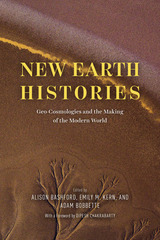 New Earth Histories: Geo-Cosmologies and the Making of the Modern World
Edited by Alison Bashford, Emily M. Kern, and Adam Bobbette
University of Chicago Press, 2023 A kaleidoscopic rethinking of how we come to know the earth.
This book brings the history of the geosciences and world cosmologies together, exploring many traditions, including Chinese, Pacific, Islamic, South and Southeast Asian conceptions of the earth’s origin and makeup. Together the chapters ask: How have different ideas about the sacred, animate, and earthly changed modern environmental sciences? How have different world traditions understood human and geological origins? How does the inclusion of multiple cosmologies change the meaning of the Anthropocene and the global climate crisis? By carefully examining these questions, New Earth Histories sets an ambitious agenda for how we think about the earth.
The chapters consider debates about the age and structure of the earth, how humans and earth systems interact, and how empire has been conceived in multiple traditions. The methods the authors deploy are diverse—from cultural history and visual and material studies to ethnography, geography, and Indigenous studies—and the effect is to highlight how earth knowledge emerged from historically specific situations. New Earth Histories provides both a framework for studying science at a global scale and fascinating examples to educate as well as inspire future work. Essential reading for students and scholars of earth science history, environmental humanities, history of science and religion, and science and empire.
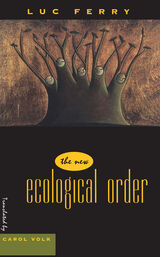 The New Ecological Order
Luc Ferry
University of Chicago Press, 1995 Is ecology in the process of becoming the object of our contemporary passions, in the same way that Fascism was in the 30s, or Communism under Stalin? In The New Ecological Order, Luc Ferry offers a penetrating critique of the ideological roots of the "Deep Ecology" movement spreading throughout Germany, France, and the United States.
Traditional ecological movements, or "democratic ecology," seek to protect the environment of human societies; they are pragmatic and reformist. But another movement has become the refuge both of nostalgic counterrevolutionaries and of leftist illusions. This is "deep ecology." Its followers go beyond practical critiques of human greed and waste: they call into question the very possibility of human coexistence with nature. The human species is no longer at the center of the world, but subject to a new god called Nature. For these purists, man can only soil the harmony of the universe. In order to secure natural equilibrium, the only solution is to grant rights to animals, to trees, and to rocks.
Ferry launches his critique by examining early European legal cases concerning the status and rights of animals, including a few notorious cases where animals were brought to trial, found guilty, and publicly hanged. He then demonstrates that German Romanticism embraced certain key ideas of the deep ecology movement concerning the protection of animals and the environment. Later adopted by the Nazis, many of these ideas point to a profoundly antihumanistic component of deep ecology that is compatible with totalitarianism.
Ferry shows how deep ecology casts aside all the gains of human autonomy since the Enlightenment. He deciphers the philosophical and political assumptions of a movement that threatens to infantalize human society by preying on the fear of the authority of a new theological-political order. Far from denying our "duty in relation to nature," The New Ecological Order offers a bracing caution—against the dangers of environmental claims and, more important, against the threat to democracy contained in the deep ecology doctrine when pushed to its extreme.
"A book of intellectual power, full of insights, invention, and not without temerity, from one of the best political philosophers today."—Le Figaro
"Few books have analyzed in depth this phenomenon of the ecological movement as the most recent book by Luc Ferry has done. . . . It is a book that absolutely must be read."—Le Point
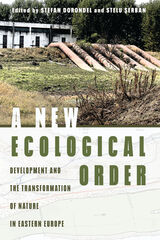 A New Ecological Order: Development and the Transformation of Nature in Eastern Europe
Stefan Dorondel and Stelu Serban
University of Pittsburgh Press, 2022 The rise of industrial capitalism in the nineteenth century forged a new ecological order in North American and Western European states, radically transforming the environment through science and technology in the name of human progress. Far less known are the dramatic environmental changes experienced by Eastern Europe, in many ways a terra incognita for environmental historians and anthropologists. A New Ecological Order explores, from a historical and ethnographic perspective, the role of state planners, bureaucrats, and experts—engineers, agricultural engineers, geographers, biologists, foresters, and architects—as agents of change in the natural world of Eastern Europe from 1870 to the early twenty-first century.
Contributors consider territories engulfed by empires, from the Habsburg to the Ottoman to tsarist Russia; territories belonging to disintegrating empires; and countries in the Balkan Peninsula, Central and Eastern Europe, and Eurasia. Together, they follow a rhetoric of “correcting nature,” a desire to exploit the natural environment and put its resources to work for the sake of developing the economies and infrastructures of modern states. They reveal an eagerness among newly established nation-states, after centuries of imperial economic and political impositions, to import scientific knowledge and new technologies from Western Europe that would aid in their economic development, and how those imports and ideas about nature ultimately shaped local projects and policies.
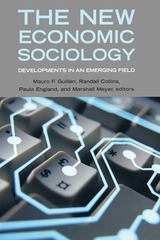 The New Economic Sociology: Developments in an Emerging Field
Maruo F. Guillen
Russell Sage Foundation, 2002 As the American economy surged in the 1990s, economic sociology made great strides as well. Economists and sociologists worked across disciplinary boundaries to study the booming market as both a product and a producer of culture, tracing the correlations they saw between economic and social phenomena. In the process, they debated the methodological issues that arose from their interdisciplinary perspectives. The New Economic Sociology provides an overview of these debates and assesses the state of the burgeoning discipline. The contributors summarize economic sociology's accomplishments to date, identifying key theoretical problems and opportunities, and formulating strategies for future research in the field. The book opens with an introduction to the main debates and conceptual approaches in economic sociology. Contributor Neil Fligstein suggests that the current resurgence of interest in economic sociology is due to the way it brings together many sociological subdisciplines including the study of markets, households, labor markets, stratification, networks, and culture. Other contributors examine the role of economic phenomena from a network perspective. Ron Burt, for example, demonstrates how social relationships affect competitive dynamics in the marketplace. A third set of chapters addresses the role of gender in economic sociology. In her chapter, Barbara Reskin rethinks conventional notions about discrimination and points out that the law only covers one type of discrimination, while in recent years social scientists have uncovered other forms of hidden discrimination, which must be addressed as well. The New Economic Sociology also addresses the problem of economic development and change from a sociological perspective. Alejandro Portes and Margarita Mooney elaborate on one of the key emerging concepts in economic sociology, arguing that social capital—as an attribute of communities and regions—can contribute to economic and social well-being by fostering collaboration and entrepreneurship. The contributors concur that economic action must be interpreted through the cultural understandings that lend it stability and meaning. By rendering these often complex debates accessible, The New Economic Sociology makes a significant contribution to this still rapidly developing field, and provides a useful guide for future avenues of research.
 New Economics and Its History, Volume 29
John B. Davis, ed.
Duke University Press The history of economic thought has traditionally focused on the work of individuals no longer living. Recently, however, historians have begun to use their tools of analysis on the work of contemporary economists. New Economics and Its Writing compiles evidence of this shift, with thirteen essays by scholars interested in catalyzing conversation between contemporary economists and historians of economics. This new focus requires new methods of analysis—historiographic strategies involving far greater archival resources, for instance, and often nontraditional resources, such as electronic records. Essays collected here address these changes and examine how this new emphasis on the work of living economists can and will entail interaction between the producer of theory and the historian, complicating the latter’s role. Chapters discuss topics such as the emergence of subdisciplines in economics, social-contextual perspectives on the writing of economics, the dynamics of idea development, and the recent incursion of noneconomic thinking—such as engineering methods and mathematical models—into economics. New Economics and Its Writing shows that attention to recent, ongoing economics from historians of economics has the potential to revitalize and transform the history of economics as an area of investigation. This volume is the 1997 Annual Supplement to the journal History of Political Economy. All 1997 subscribers will receive a copy of this book as part of their annual subscription. Contributors. Timothy L. Alborn, Marcel Boumans, Joshua Cohen, John B. Davis, Ross B. Emmett, Paul Harrison, Daniel M. Hausman, Mary L. Hirschfeld, S. Todd Lowry, Steven G. Medema, Philip Mirowski, Philippe Mongin, S. Abu Turab Rizvi, Esther-Mirjam Sent
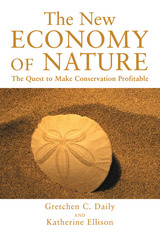 The New Economy of Nature: The Quest to Make Conservation Profitable
Gretchen C. Daily and Katherine Ellison
Island Press, 2002 Why shouldn't people who deplete our natural assets have to pay, and those who protect them reap profits? Conservation-minded entrepreneurs and others around the world are beginning to ask just that question, as the increasing scarcity of natural resources becomes a tangible threat to our own lives and our hopes for our children. The New Economy of Nature brings together Gretchen Daily, one of the world's leading ecologists, with Katherine Ellison, a Pulitzer-prize winning journalist, to offer an engaging and informative look at a new "new economy" -- a system recognizing the economic value of natural systems and the potential profits in protecting them. Through engaging stories from around the world, the authors introduce readers to a diverse group of people who are pioneering new approaches to conservation. We meet Adam Davis, an American business executive who dreams of establishing a market for buying and selling "ecosystem service units;" John Wamsley, a former math professor in Australia who has found a way to play the stock market and protect native species at the same time; and Dan Janzen, a biologist working in Costa Rica who devised a controversial plan to sell a conservation area's natural waste-disposal services to a local orange juice producer. Readers also visit the Catskill Mountains, where the City of New York purchased undeveloped land instead of building an expensive new water treatment facility; and King County, Washington, where county executive Ron Sims has dedicated himself to finding ways of "making the market move" to protect the county's remaining open space. Daily and Ellison describe the dynamic interplay of science, economics, business, and politics that is involved in establishing these new approaches and examine what will be needed to create successful models and lasting institutions for conservation. The New Economy of Nature presents a fundamentally new way of thinking about the environment and about the economy, and with its fascinating portraits of charismatic pioneers, it is as entertaining as it is informative.
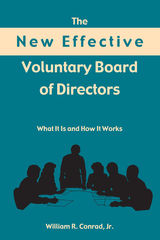 The New Effective Voluntary Board of Directors: What It Is and How It Works
William R. Conrad Jr.
Ohio University Press, 2003 More than one million nonprofit or voluntary organizations have been incorporated in the United States, and there are countless others throughout the world. Although they range in size and purpose from small social clubs to large and complex organizations such as universities and hospitals, they all have one thing in common: a board of directors of some type. What these boards do varies as much as the organizations themselves. The New Effective Voluntary Board of Directors provides clear answers, illustrated with graphics, to previously ambiguous and bewildering questions, such as definitions of policy, the function of boards, the role of board members, and many other issues. Dealing with the delicate balance in nonprofit organizations, the legal implications of serving on a board, the nonprofit leadership and management model, and other matters of concern, William Conrad applies his lifelong experience to providing a comprehensive, practical, and concise tool for those involved in the unique challenges associated with the leadership and management of nonprofit and voluntary groups. With nearly 30,000 copies of earlier editions of this work in print, Swallow Press is pleased to publish the new, updated, and revised edition of this classic in its field.
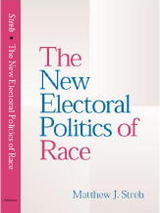 The New Electoral Politics of Race
Matthew Justin Streb
University of Alabama Press, 2002 Examines the disappearance of extreme prejudice and racial rhetoric in modern political campaigns and the alternate ways that race continues to be an abiding issue in the electoral process
Historically, race has always been at the heart of American politics, and southern politics more specifically. Southern elections revolved almost entirely around racial issues during the 1950s and 1960s as debates raged over integration of schools, voting rights, and busing patterns. The election of George Wallace as governor of Alabama in 1962 underscored the electoral power of ruthless racial rhetoric, not only in Alabama, but throughout the South and the entire country. Almost 40 years later, segregation is no longer legal, tensions between blacks and whites have lessened, and the influx of large numbers of African Americans into the electorate has forced politicians to court black voters.
Matthew Streb finds, however, that although extreme racial rhetoric has disappeared from the modern campaign trail, voters are still polarized along racial lines. By comparing gubernatorial campaigns in four southern and three northern states-Alabama, Georgia, Arkansas, Virginia, Ohio, Iowa, and Massachusetts-the author examines how candidates use, or fail to use, race in their campaign strategies. He demonstrates that race indeed remains a significant factor in American elections, couched in alternative issues, such as affirmative action, profiling, and social welfare.
Streb's analysis of the appeal by politicians for the elite vote and the public vote reveals that class has replaced race as a definitive issue in American politics. This book will, therefore, be important not only to academic libraries and students and scholars of political science, southern history, and civil rights, but also to pollsters, campaign strategists, and state political party officials.
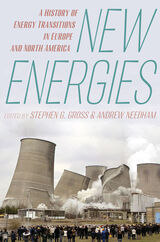 New Energies: A History of Energy Transitions in Europe and North America
Stephen Gross
University of Pittsburgh Press, 2023 Over the past 250 years, energy transitions have occurred repeatedly—the rise of coal in the nineteenth century, the explosion of oil in the twentieth century, the nuclear utopianism of the 1950s and 1960s. These transitions have been as revolutionary as any political or economic upheaval, and they required changes in infrastructure and behavior. Yet new energies never wholly replace old ones. This volume historicizes energy production and consumption while demonstrating how energy use has reshaped everything from social life and economic organization to political governance. It foregrounds the importance of energy for big historical questions about capitalism, democracy, inequality, the environment, and identity, and it argues that energy systems themselves merit attention as key agents of historical change. Given the urgency of climate change, and the central position that energy plays in causing and potentially solving global warming, this volume engages history as a discipline in the debate over what may be most monumental energy transition of all time: the shift away from fossil fuels.
New England Dissent, 1630–1833: The Baptists and the Separation of Church and State
William G. McLoughlin
Harvard University Press, 1971 William McLoughlin examines the tradition of dissent among American Baptists and other pietistic dissenters against the New England Congregational establishment. By tracing the diverse and often complex ways by which the colonies and states achieved disestablishment, he depicts the evolution and application of the unique American principle of separation of church and state.
 New England Forests Through Time: Insights from the Harvard Forest Dioramas
David R. Foster and John F. O’Keefe
Harvard University Press, 2000 Over the past three hundred years New England's landscape has been transformed. The forests were cleared; the land was farmed intensively through the mid-nineteenth century and then was allowed to reforest naturally as agriculture shifted west. Today, in many ways the region is more natural than at any time since the American Revolution. This fascinating natural history is essential background for anyone interested in New England's ecology, wildlife, or landscape.
In New England Forests through Time these historical and environmental lessons are told through the world-renowned dioramas in Harvard's Fisher Museum. These remarkable models have introduced New England's landscape to countless visitors and have appeared in many ecology, forestry, and natural history texts. This first book based on the dioramas conveys the phenomenal history of the land, the beauty of the models, and new insights into nature.
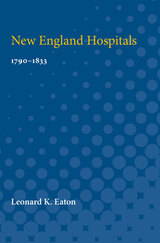 New England Hospitals: 1790-1833
Leonard K. Eaton
University of Michigan Press, 1957 New England Hospitals tells of the impact of an institution on a people. In 1790 few New Englanders had ever seen a hospital. By 1833, when the Worcester State Asylum opened, the institution had become a New England tradition. The formative years were those when such men as Horace Mann, the Reverend John Bartlett, John Adams, John Lowell, Josiah Quincy, and Dr. Eli Todd turned men's thoughts to the care of the mentally and physically ill. People like the gentle-mannered Dr. Jackson considered it their duty not merely to "throw a few pills and powders into one pan of the scales of Fate, while Death the skeleton was seated in the other, but to lean with their whole weight on the side of life, and shift the balance in its favor if it lay in human power to do it." In this early period the hospital was, as it is in our time, an institution devoted to healing the sick, a center of research and teaching, a challenge to the architect, and the ground of endless financial and administrative struggle and growth. In this book, Leonard K. Eaton places this early development of American hospitals in its cultural perspective.
New England Life in the Eighteenth Century: Representative Biographies from Sibley’s Harvard Graduates
Clifford K. Shipton
Harvard University Press, 1995 In 1859 John Langdon Sibley projected and began a series of biographical sketches of all Harvard graduates; at his death in 1885 he had published three volumes, covering the Classes from 1642 through 1689. In 1930 the work was resumed by Clifford K. Shipton, who carried the series through Volume XII and the Class of 1750. This book offers a representative selection from the nine volumes of Shipton’s biographies. In these sketches there appear royal governors, counterfeiters, college presidents, bootleggers, Indian fighters, Revolutionary leaders, Loyalists, mariners, lawyers, drunkards, and clergymen of four persuasions. Together they form a cross-section of Colonial life in which the Harvard tie is often only incidental.
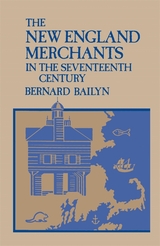 The New England Merchants in the Seventeenth Century
Bernard Bailyn
Harvard University Press By the middle of the eighteenth century the merchants were dominant figures in the northern American colonies, powerful economically, politically, and socially. But in New England this preeminence had not been present in the first years of settlement; it had been achieved in the course of three generations of social development as the merchants often Puritans themselves, rose within the Bible Commonwealths to challenge the domination of the Puritan fathers.
In lively detail Mr. Bailyn here presents the struggle of the merchants to achieve full social recognition as their successes in trade and in such industries as fishing and lumbering offered them avenues to power. Surveying the rise of merchant families, he offers a portrait in depth of the emergence of a new social group whose interests and changing social position powerfully affected the developing character of American society.
The story of this group is the story of people and of their many–sided interests. The merchants were united by the demands of their common devotion to trade, yet they did not form a socially homogeneous unit. In fact their social differences—created in the confusions and dislocations of the early days of settlement came to play an important role in their business and political activities. Moreover, their commercial ventures, successes, and failures affected their social and political situation. Internationalists by occupation, they were deeply affected by personal relations with Europeans as well as by events in the Old World.
Drawing on source material from many fields—business records, religious and political data, literary remains, and genealogical information—Mr. Bailyn has discovered much that is new about the merchants, and has brought it all together into a composite portrait of our economic founding fathers that is fascinating in itself and that will reorient our thinking about many aspects of early New England history.
 New England Metropolis: Boston and the Industrialization of New England, 1807–1850
Richard Garver
University of Massachusetts Press, 2025 At the start of the nineteenth century, Boston was at its zenith as a maritime city even as New England was in decline. Many struggling farmers abandoned the area for more promising opportunities to the west. Yet by 1850, New England had been transformed into one of the most industrialized regions in the world. Former agricultural villages had become specialized manufacturing towns producing consumer goods for sale, and Boston merchant capitalists had established textile complexes that produced fabrics in huge quantities. Although Boston had been superseded by New York as a trading center, it thrived not only as a financial market but as an exchange hub in which these hinterland manufacturers acquired raw materials, capital, sales services, and transportation. With Boston at its metropolitan center, New England was transformed into an industrial geography that was unique nationally and internationally.
New England Metropolis demonstrates that, in contrast to the course of industrialization in other regions of the country, New England’s transformation was driven by rural entrepreneurs and Boston merchant capitalists who recruited underemployed agricultural household members to produce consumer goods. These products reached markets in the West, the South, and the Caribbean, particularly in Cuba. The adaptation of commercial, financial and transportation infrastructure developed to serve Boston’s overseas trade to the needs of hinterland manufacturers made their rise possible, halted New England’s decline and, by 1850, had propelled it to prosperity.
 New England Metropolis: Boston and the Industrialization of New England, 1807–1850
Richard Garver
University of Massachusetts Press, 2025 At the start of the nineteenth century, Boston was at its zenith as a maritime city even as New England was in decline. Many struggling farmers abandoned the area for more promising opportunities to the west. Yet by 1850, New England had been transformed into one of the most industrialized regions in the world. Former agricultural villages had become specialized manufacturing towns producing consumer goods for sale, and Boston merchant capitalists had established textile complexes that produced fabrics in huge quantities. Although Boston had been superseded by New York as a trading center, it thrived not only as a financial market but as an exchange hub in which these hinterland manufacturers acquired raw materials, capital, sales services, and transportation. With Boston at its metropolitan center, New England was transformed into an industrial geography that was unique nationally and internationally.
New England Metropolis demonstrates that, in contrast to the course of industrialization in other regions of the country, New England’s transformation was driven by rural entrepreneurs and Boston merchant capitalists who recruited underemployed agricultural household members to produce consumer goods. These products reached markets in the West, the South, and the Caribbean, particularly in Cuba. The adaptation of commercial, financial and transportation infrastructure developed to serve Boston’s overseas trade to the needs of hinterland manufacturers made their rise possible, halted New England’s decline and, by 1850, had propelled it to prosperity.
The New England Mind: From Colony to Province
Perry Miller
Harvard University Press, 1953 The New England Mind: From Colony to Province is one of Perry Miller’s masterworks, exploring the intellectual history of the Puritans through a deep investigation of the thought of the Puritan divines. In this book, as well as its predecessor The New England Mind: The Seventeenth Century, Miller asserts a single intellectual history for America that could be traced to the Puritan belief system.
The New England Mind: The Seventeenth Century
Perry Miller
Harvard University Press, 1982 In The New England Mind: The Seventeenth Century, as well as successor The New England Mind: From Colony to Province, Perry Miller asserts a single intellectual history for America that could be traced to the Puritan belief system.
New England Natives: A Celebration of People and Trees
Sheila Connor
Harvard University Press, 1994 Taking us back to the birth of New England’s forests, Sheila Connor shows us these trees evolving amidst a succession of human cultures, from the archaic Indians who crafted canoes from white birch and snowshoes from ash, to the colonists who built ships of oak and pine, to the industrialists who laid railroad tracks on chestnut timber, to the tanners who used hemlock bark to treat the leather required to shoe the Union army. In this engaging narrative, cultural history affords insights into forestry, botany, horticulture, and ecology, which in turn illuminate the course of human conduct in a wooded land. Beautifully written and lavishly illustrated, this book will delight readers with a special interest in the trees of the region, as well as those who wonder what our American culture owes to nature.
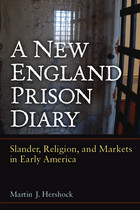 A New England Prison Diary: Slander, Religion, and Markets in Early America
Martin J. Hershock
University of Michigan Press, 2012 In 1812, New Hampshire shopkeeper Timothy M. Joy abandoned his young family, fleeing the creditors who threatened to imprison him. Within days, he found himself in a Massachusetts jailhouse, charged with defamation of a prominent politician. During the months of his incarceration, Joy kept a remarkable journal that recounts his personal, anguished path toward spiritual redemption. Martin J. Hershock situates Joy's account in the context of the pugnacious politics of the early republic, giving context to a common citizen's perspective on partisanship and the fate of an unfortunate shopkeeper swept along in the transition to market capitalism. In addition to this close-up view of an ordinary person's experience of a transformative period, Hershock reflects on his own work as a historian. In the final chapter, he discusses the value of diaries as historical sources, the choices he made in telling Joy's story, alternative interpretations of the diary, and other contexts in which he might have placed Joy's experiences. The appendix reproduces Joy's original journal so that readers can develop their own skills using a primary source.
New England Textiles in the Nineteenth Century: Profits and Investment
Paul F. McGouldrick
Harvard University Press This unique study determines, by means of rigorous quantitative analysis, how cycles in New England cotton textile profits, output, borrowing, and capacity affected investment—and therefore industrial growth—during the nineteenth century. The firms studied were transitional forms between owner-managed companies and the modern corporation. From primary sources, Paul McGouldrick has constructed standardized balance sheets and income statements for each company year by year. A painstaking comparison with a much broader sample of companies shows that trends and cycles in profit rates for companies studied were typical of the industry.
 New England Weather, New England Climate
Gregory A. Zielinski
University of New Hampshire Press, 2005 New Englanders talk as much about their weather as about all other subjects combined. Anyone who's scampered for shelter during a summer shower or shoveled a path through snow in May knows that bending to the weather's whims is a way of life in New England. But what do you actually know about New England's weather or climate?
Combining a scholarly appreciation of weather systems and events with an ability to transmit their passion to a general audience, Gregory A. Zielinski and Barry D. Keim have written a one-of-a-kind guide to New England weather and climate. Not only are weather patterns in New England more changeable and more extreme than almost anywhere in the country, New England is the ultimate destination of nearly all storm tracks nationwide. Recently, newsworthy items such as global warming, El Niño, and La Niña have significantly impacted our local weather, in both the short and long term. Luckily, the science of meteorology and climatology and their tools of observation and analysis have made great strides in the past few years.
The authors offer an in-depth explanation of the latest theoretical insights into New England's weather along with a flurry of stories and lore about the vagaries of our clime. The book is divided into the seasons as we actually experience them—ski season, mud season, beach and lake season, and foliage season. It includes photos and illustrations: some all too familiar, many hard to believe. Zielinski and Keim succeed in providing an illuminating and entertaining analysis and commentary while whole-heartedly embracing our region's atmospheric peculiarities. This book won't do anything about New England's weather or climate but it will help you understand each of them.
 New England Wildlife: Habitat, Natural History, and Distribution
Richard M. DeGraaf and Mariko Yamasaki
University Press of New England, 2000 New England Wildlife presents the natural histories and distributions of 338 inland wildlife species in New England. It also details the habitat relationships of all New England terrestrial and aquatic species, presented in sections on amphibians and reptiles, birds, and mammals. Each species account includes an illustration and range map, along with information on distribution in the region, status, habitat, special habitat requirements, details of breeding biology, home range and movements, and food habits, each fully documented from the pertinent literature. The introduction includes a brief land-use history of the region, descriptions of forest types and nonforest habitats, and wildlife responses to landscape change. A necessity for all land managers and naturalists as well as birders, walkers, nature lovers, residents, and visitors to New England, the book includes the most recent information on natural history and distribution, and matrices relating all species to standard classifications of forest cover - types and nonforest habitats.
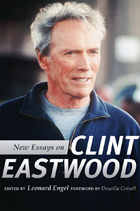 New Essays on Clint Eastwood
Leonard Engel
University of Utah Press, 2012 New Essays on Clint Eastwood is a companion to Engel’s previous book, Clint Eastwood, Actor and Director: New Perspectives. It includes discussion of some of Eastwood’s most recent films as well as his earliest work, and deepens our overall appreciation of his artistry and his growth as an ever more accomplished storyteller. The contributors to this new volume examine Eastwood’s body of work as both actor and director: his portrayal of Rowdy Yates in the television series Rawhide, his directorial debut with Play Misty for Me, his directorial and starring role in Gran Torino, and his recent directorial successes with Hereafter and J. Edgar.
A common thread throughout the volume is the respect for Eastwood’s commitment to cinematic storytelling. Indi-vidually and collectively, the essays highlight the variety and complexity of Eastwood’s themes and his accomplish-ments throughout a lifetime of endeavors. Examining his Westerns and detective films illustrates how Eastwood left his iconic stamp on those genres, while discussion of his more recent films expounds on his use of family, history, and myth to transcend generic conventions and to project a hard-won vision of a united humanity beyond the separation of ethnic, racial, and national conflicts. Cumulatively, the essays remind us of his lifelong devotion to perfecting his artistry and his powers as a storyteller.
New Essays on Fichte's Later Jena Wissenschaftslehre
Daniel Breazeale and Tom Rockmore
Northwestern University Press, 2002 The philosophical thought of J. G. Fichte, particularly his later work, is at the very center of the paradigm shift under way in the field of German idealism. Crucial to this reassessment is Fichte's Wissenschaftslehre nova methodo of 1796 to 1799, the manuscript at the heart of this essay colleciton and an articulation of the philosopher's Wissenschaftslehre, or overall system of philosophy, which he discussed in lectures at the University of Jena. Coherent, comprehensive, and edited by two of the foremost Fichte scholars in the world, the essays provide a much needed introduction to the major themes of the most important period of Fichte's philosophical thought—and thus to German idealism itself—and make a persuasive case for the originality and continuing significance of the later Jena Wissenschaftslehre.
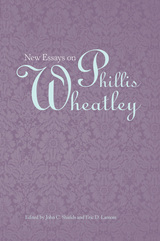 New Essays on Phillis Wheatley
John C. Shields and Eric D. Lamore
University of Tennessee Press, 2011
The first African American to publish a book on any subject, poet Phillis Wheatley (1753?–1784) has long been denigrated by literary critics who refused to believe that a black woman could produce such dense, intellectual work, let alone influence Romantic-period giants like Samuel Taylor Coleridge. Indeed, Thomas Jefferson once declared that “the compositions published under her name are below dignity of criticism.” In recent decades, however, Wheatley’s work has come under new scrutiny as the literature of the eighteenth century and the impact of African American literature have been reconceived. In these never-before-published essays, fourteen prominent Wheatley scholars consider her work from a variety of angles, affirming her rise into the first rank of American writers.
The pieces in the first section show that perhaps the most substantial measure of Wheatley’s multilayered texts resides in her deft handling of classical materials. The contributors consider Wheatley’s references to Virgil’s Aeneid and Georgics and to the feminine figure Dido as well as her subversive critique of white readers attracted to her adaptation of familiar classics. They also discuss Wheatley’s use of the Homeric Trojan horse and eighteenth-century verse to mask her ambitions for freedom and her treatment of the classics as political tools.
Engaging Wheatley’s multilayered texts with innovative approaches, the essays in the second section recontextualize her rich manuscripts and demonstrate how her late-eighteenth-century works remain both current and timeless. They ponder Wheatley’s verse within the framework of queer theory, the concepts of political theorist Hannah Arendt, rhetoric, African studies, eighteenth-century “salon culture,” and the theoretics of imagination.
Together, these essays reveal the depth of Phillis Wheatley’s literary achievement and present concrete evidence that her extant oeuvre merits still further scrutiny.
John C. Shields is Distinguished Professor of English at Illinois State University. He is the editor of The Collected Works of Phillis Wheatley and author of The American Aeneas: Classical Origins of the American Self, a Choice Outstanding Academic Book; Phillis Wheatley and the Romantics; and Phillis Wheatley’s Poetics of Liberation; and awarded honorable mention in competition for the American Comparative Literature Association’s Harry Levin Prize. As well, Shields serves as director of the Center for Classicism and American Culture and General Editor for the series of monographs on Classicism in American Culture to be published by the University of Tennessee Press.
Eric D. Lamore is an assistant professor of English at the University of Puerto Rico, Mayaguez, and a contributor to The Greenwood Encyclopedia of American Poets and Poetry.
The New Eurocrats: National Civil Servants in EU Policymaking
Karin Geuijen, Paul Hart, Sebastiaan Princen, and Kutsal Yesilkagit
Amsterdam University Press, 2008
Policies in the EU are largely made by national civil servants who prepare and implement decisions in Brussels as well as at home. Despite their important role, these national civil servants form a relatively hidden world that has received little attention from both the media and academics. This volume considers a wide variety of sources and research methods to answer such questions as: how many civil servants are actually involved in EU-related activities? What do these civil servants do when they engage with the EU? And how do they negotiate their dual roles? The New Eurocrats offers unique and invaluable insight into these civil servants and their working practices—and uncovers some secrets in the world of EU governance along the way.
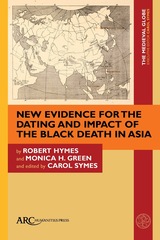 New Evidence for the Dating and Impact of the Black Death in Asia
Robert Hymes
Arc Humanities Press, 2022 Since 2014, when The Medieval Globe first presented the latest interdisciplinary scholarship on the Black Death as a global pandemic, the pace and intensity of research has intensified. This follow-up volume features two extended essays laying out evidence that the Second Plague Pandemic was already ravaging China by the second quarter of the thirteenth century—over a century before it made its appearance in the greater Mediterranean region. In a core contribution, Robert Hymes presents an extensive analysis of Chinese medical texts, showing that physicians were adapting their terminology and treatments to the emergence of a virulent new disease: plague. In an overarching essay, Monica H. Green summarizes the current state of our knowledge about the timing and expanse of the Black Death, showing how combined evidence from genetics and a reconstructed documentary record can create a coherent new narrative of one of the largest, and longest, pandemics in history.
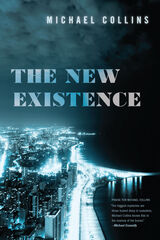 The New Existence
Michael Collins
University of Iowa Press, 2021 Chicagoan Helen Price, a dying woman, recounts her life while driving toward an oncology appointment. She attempts to take her own life, survives, then dies under tragic circumstances. In death, Helen bequeaths the family home to her only son, gay playwright Norman Price. Father to an adopted Chinese child, and recently broken up with his partner, Norman’s life is in crisis. Helen also bequeaths a series of tapes to Nate Feldman, a Vietnam draft dodger ensconced in the far reaches of Canada, and the son of Helen’s former boss, Theodore Feldman. Nate’s return to America to claim the tapes occasions confronting a history of animus between father and son, but also the nature of the relationship between Helen Price and Theodore Feldman. Told from moving cars, the journeys of Norman Price and Nate Feldman converge toward unexpected mysteries and revelations that uncover not so much lies as understandings of life that no longer hold under the scrutiny of the present
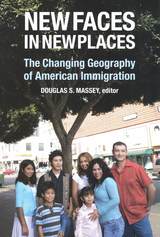 New Faces in New Places: The Changing Geography of American Immigration
Douglas S. Massey
Russell Sage Foundation, 2008 Beginning in the 1990s, immigrants to the United States increasingly bypassed traditional gateway cites such as Los Angeles and New York to settle in smaller towns and cities throughout the nation. With immigrant communities popping up in so many new places, questions about ethnic diversity and immigrant assimilation confront more and more Americans. New Faces in New Places, edited by distinguished sociologist Douglas Massey, explores today's geography of immigration and examines the ways in which native-born Americans are dealing with their new neighbors. Using the latest census data and other population surveys, New Faces in New Places examines the causes and consequences of the shift toward new immigrant destinations. Contributors Mark Leach and Frank Bean examine the growing demand for low-wage labor and lower housing costs that have attracted many immigrants to move beyond the larger cities. Katharine Donato, Charles Tolbert, Alfred Nucci, and Yukio Kawano report that the majority of Mexican immigrants are no longer single male workers but entire families, who are settling in small towns and creating a surge among some rural populations long in decline. Katherine Fennelly shows how opinions about the growing immigrant population in a small Minnesota town are divided along socioeconomic lines among the local inhabitants. The town's leadership and professional elites focus on immigrant contributions to the economic development and the diversification of the community, while working class residents fear new immigrants will bring crime and an increased tax burden to their communities. Helen Marrow reports that many African Americans in the rural south object to Hispanic immigrants benefiting from affirmative action even though they have just arrived in the United States and never experienced historical discrimination. As Douglas Massey argues in his conclusion, many of the towns profiled in this volume are not equipped with the social and economic institutions to help assimilate new immigrants that are available in the traditional immigrant gateways of New York, Los Angeles, and Chicago. And the continual replenishment of the flow of immigrants may adversely affect the nation's perception of how today's newcomers are assimilating relative to previous waves of immigrants. New Faces in New Places illustrates the many ways that communities across the nation are reacting to the arrival of immigrant newcomers, and suggests that patterns and processes of assimilation in the twenty-first century may be quite different from those of the past. Enriched by perspectives from sociology, anthropology, and geography New Faces in New Places is essential reading for scholars of immigration and all those interested in learning the facts about new faces in new places in America.
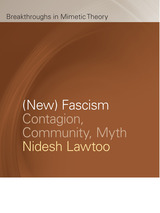 (New) Fascism: Contagion, Community, Myth
Nidesh Lawtoo
Michigan State University Press, 2019 Fascism tends to be relegated to a dark chapter of European history, but what if new forms of fascism are currently returning to the forefront of the political scene? In this book, Nidesh Lawtoo furthers his previous diagnostic of crowd behavior, identification, and mimetic contagion to account for the growing shadow cast by authoritarian leaders who rely on new media to take possession of the digital age. Donald Trump is considered here as a case study to illustrate Nietzsche’s untimely claim that, one day, “ ‘actors,’ all kinds of actors, will be the real masters.” In the process, Lawtoo joins forces with a genealogy of mimetic theorists—from Plato to Girard, through Nietzsche, Tarde, Le Bon, Freud, Bataille, Lacoue-Labarthe, and Nancy, among others—to show that (new) fascism may not be fully “new,” let alone original; yet it effectively reloads the old problematics of mimesis via new media that have the disquieting power to turn politics itself into a fiction.
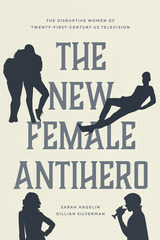 The New Female Antihero: The Disruptive Women of Twenty-First-Century US Television
Sarah Hagelin and Gillian Silverman
University of Chicago Press, 2022 The New Female Antihero examines the hard-edged spies, ruthless queens, and entitled slackers of twenty-first-century television.
The last ten years have seen a shift in television storytelling toward increasingly complex storylines and characters. In this study, Sarah Hagelin and Gillian Silverman zoom in on a key figure in this transformation: the archetype of the female antihero. Far from the sunny, sincere, plucky persona once demanded of female characters, the new female antihero is often selfish and deeply unlikeable.
In this entertaining and insightful study, Hagelin and Silverman explore the meanings of this profound change in the role of women characters. In the dramas of the new millennium, they show, the female antihero is ambitious, conniving, even murderous; in comedies, she is self-centered, self-sabotaging, and anti-aspirational. Across genres, these female protagonists eschew the part of good girl or role model. In their rejection of social responsibility, female antiheroes thus represent a more profound threat to the status quo than do their male counterparts. From the devious schemers of Game of Thrones, The Americans, Scandal, and Homeland, to the joyful failures of Girls, Broad City, Insecure, and SMILF, female antiheroes register a deep ambivalence about the promises of liberal feminism. They push back against the myth of the modern-day super-woman—she who “has it all”—and in so doing, they give us new ways of imagining women’s lives in contemporary America.
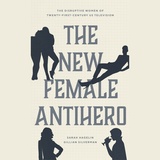 The New Female Antihero: The Disruptive Women of Twenty-First-Century US Television
Sarah Hagelin and Gillian Silverman
University of Chicago Press, 2022 This is an auto-narrated audiobook edition of this book.
The New Female Antihero examines the hard-edged spies, ruthless queens, and entitled slackers of twenty-first-century television.
The last ten years have seen a shift in television storytelling toward increasingly complex storylines and characters. In this study, Sarah Hagelin and Gillian Silverman zoom in on a key figure in this transformation: the archetype of the female antihero. Far from the sunny, sincere, plucky persona once demanded of female characters, the new female antihero is often selfish and deeply unlikeable.
In this entertaining and insightful study, Hagelin and Silverman explore the meanings of this profound change in the role of women characters. In the dramas of the new millennium, they show, the female antihero is ambitious, conniving, even murderous; in comedies, she is self-centered, self-sabotaging, and anti-aspirational. Across genres, these female protagonists eschew the part of good girl or role model. In their rejection of social responsibility, female antiheroes thus represent a more profound threat to the status quo than do their male counterparts. From the devious schemers of Game of Thrones, The Americans, Scandal, and Homeland, to the joyful failures of Girls, Broad City, Insecure, and SMILF, female antiheroes register a deep ambivalence about the promises of liberal feminism. They push back against the myth of the modern-day super-woman—she who “has it all”—and in so doing, they give us new ways of imagining women’s lives in contemporary America.
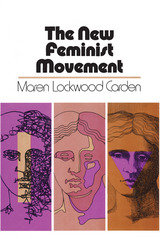 The New Feminist Movement
Marion Lockwood Carden
Russell Sage Foundation, 1974 The feminist movement has become an established force on the American political and social scene. Both the small consciousness-raising group and the large, formal organization command the attention of our legislative bodies, media, and general public. Maren Lockwood Carden's new book is the first to look beyond feminist ideas and rhetoric to give a detailed study of the movement—its structure, membership, and history of the organizations that form a major part of present-day feminism. Fair, objective, and comprehensive, her study is based on participant observation and in-depth interviews with rank and file members and local and national leaders in seven representative cities during 1969-1971. In Dr. Carden's analysis, the movement has two divisions. First, the hundreds of small, informal "Women's Liberation" consciousness-raising and action groups. Second, the large, formally structured "Women's Rights" organizations like the National Organization for Women (NOW) and the Women's Equity Action League. For both types of organizations, Dr. Carden covers members' reasons for participation; organizational structure; strategies and actions; and the relationship between ideology and structure, including the attempts by many groups to work as "participatory democracies." She also discusses the development of the movement from the mid-sixties to the present, and evaluates the long-term prospects for achieving the objectives of the various new feminist groups. Anyone interested in organizations, personality and society, and social change will welcome this detailed description and history of a complex and rapidly changing social movement. Highly readable and free of technical jargon, The New Feminist Movement tells us what's been happening to women in the last decade, what they want now, and where they may be headed in the future.
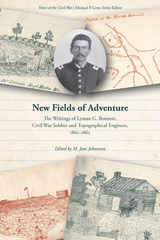 New Fields of Adventure: The Writings of Lyman G. Bennett, Civil War Soldier and Topographical Engineer, 1861–1865
M. Jane Johansson
University of Tennessee Press, 2024 Lyman Gibson Bennett (1832–1904) had a curious mind and a keen sense of humor. He had an engineer’s mentality and a poet’s grasp of language, except for spelling. As a Union soldier, Bennett saw extensive service in the Trans-Mississippi Theater. A writer of considerable energy and intelligence, Bennett’s wartime diaries recount his diverse and wide-ranging military record, stretching geographically from the prairies of Illinois to the Rocky Mountains, while a postwar account details, among other things, his labors to recruit “Mountain Feds” in the Ozarks.
This volume provides the perspective of an individual who was both a topographical engineer—with extensive experience that spanned the country from Arkansas to the Overland Trail—and a common soldier. As a member of the Thirty-Sixth Illinois Infantry, Bennett provided one of the most detailed contemporary accounts of the pivotal Battle of Pea Ridge, March 7–8, 1862. By December 1863, Bennett was promoted to first lieutenant in the newly formed Fourth Arkansas Cavalry (US) and wrote an invaluable first-person account of guerrilla fighting in the Ozark mountains. Readers will delight in Bennett’s witty descriptions of the ankles (and even higher!) of ladies as they gathered their skirts to trek through the mud; his sometimes-cutting words about his fellow hospital patients; and his wry comments on that “exclusively southern institution,” the chigger. New Fields of Adventure will prove useful to scholars of the Ozarks, landscape studies, and the Civil War in the West.
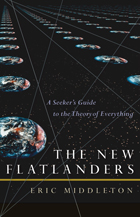 The New Flatlanders: A Seeker's Guide to the Theory of Everything
Eric Middleton
Templeton Press, 2007
In The New Flatlanders, teacher, scientist, and chaplain Eric Middleton challenges traditional ways of looking at reality by engaging readers in a "voyage of discovery starting with questions." The book engagingly begins with a discussion group embarking on an exploratory conversation about the nature of the universe and the place of human beings in it. Daunting questions emerge, such as "How can there possibly be a tear or hole in three-dimensional space? And if there is a hole, can something fall through it? Where would it fall to?" In short order, students and teacher are on a quest to develop a "working theory of everything" that takes them from stone circles to quarks, superstrings, quantum theory, the anthropic principle, evolution, consciousness, miracles, chaos, and the spiritual universe.
The key to exploring these questions is finding a language with which to talk about the awe and wonder of today's science alongside the joy of experiencing the spiritual. This is done by interweaving into the discussions the philosophy of "Flatland," a nonreligious entry point to Jesus posited by nineteenth-century clergyman and educator Edwin A. Abbott in his classic parable Flatland: A Romance of Many Dimensions.
New Flows in Global TV
Albert Moran
Intellect Books, 2009 New Flows in Global TV provides a pioneering investigation into television distribution worldwide and the global trade in television program formats. Topics include explorations of how shows like Who Wants to Be a Millionaire? and Big Brother are reformatted for audiences in diverse markets such as Argentina, South Africa, the Middle East, and China; the international circulation of Dallas in the 1980s; and Australian and United Kingdom programming exports in the last decade. Moran argues that distribution is the crucial link in a chain that dictates the consumption and purchase of television content. Consequently, New Flows in Global TV will be a key text for scholars of global media, providing comprehensive insight into the cultural, social and economic exchanges underlying media programming.
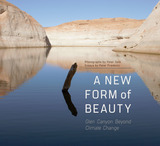 A New Form of Beauty: Glen Canyon Beyond Climate Change
Photographs by Peter Goin, Essays by Peter Friederici
University of Arizona Press, 2016 In Glen Canyon waters rose, inundating petroglyphs and creating Lake Powell. Now the Colorado River basin is experiencing the longest dry spell in modern history—one that shows alarming signs of becoming the new normal.
In A New Form of Beauty photographer Peter Goin and writer Peter Friederici tackle science from the viewpoint of art, creating a lyrical exploration in words and photographs, setting Glen Canyon and Lake Powell as the quintessential example of the challenges of perceiving place in a new era of radical change. Through evocative photography and extensive reporting, the two document their visits to the canyon country over a span of many years. By motorboat and kayak, they have ventured into remote corners of the once-huge reservoir to pursue profound questions: What is this place? How do we see it? What will it become?
Goin’s full-color photographs are organized in three galleries—Flora and Fauna, Artifacts, and Low Water—interspersed with three essays by Friederici, and an epilogue gallery on Fire. The book includes two foldout photographs, which allow readers to fully see Lake Powell at high water and low water points
Contemplating humanity’s role in the world it is creating, Goin and Friederici ask if the uncertainties inherent in Glen Canyon herald an unpredictable new future for every place. They challenge us to question how we look at the world, how we live in it, and what the future will be.
 New Formations, New Questions: Asian American Studies, Volume 5
Elaine H. Kim and Lisa Lowe, eds.
Duke University Press Viewing current Asian American racial formation in relation to international cultures and global geography, the essays in New Formations, New Questions break new ground in Asian American studies. This special issue of positions confronts questions of what it is to be Asian and how that differs from being Asian American. It exposes many challenges Asian Americans face in defining their niche in this country as it makes some acute, if not disturbing, observations of what it means to be American. In one essay, the status of Asians born in America both before and after the 1965 Immigration and Nationality Act is compared, with particular attention directed toward the exploitation of Asian immigrants as a source of cheap physical labor. In another piece, the link between America’s colonization of Asian countries and international sex tourism is explored. As these essays make clear, the United States easily exploits Asians and Asian Americans as it simultaneously enforces distinctions that render Asians linguistically, culturally, and racially “foreign.” Also included is an essay based on a series of interviews with Filipino store owners and workers in Southern California; analysis of the Christian Ecumenical perspectives on the Asian sex tour industry and the activities of ECPAT, a group established to end child prostitution in Asian tourism; and an account of a South Asian woman’s attempt to unionize taxicab drivers in New York City. Contributors. Anuradha G. Advani, Enrique Bonus, Oscar V. Campomanes, Y. David Chung, Allan DeSouza, Gayatri Gopinath, Helen Heran Jun, Laura Hyun Yi Kang, Peter Kiang, Elaine H. Kim, Min-Jung Kim, Lisa Lowe, Eithne Liubheid, Long Nguyen, Viet Thanh Nguyen, Eliza Noh
 New Foundations of Cost-Benefit Analysis
Matthew D. Adler and Eric A. Posner
Harvard University Press, 2006 Cost-benefit analysis (CBA) has been an important policy tool of government since the 1980s, when the Reagan administration ordered that all major new regulations be subjected to a rigorous test of whether their projected benefits would outweigh their costs. Not surprisingly, CBA has been criticized by many who claim that it neglects, especially on the benefit side, important values that are hard to measure.
In this book, the authors reconceptualize cost-benefit analysis, arguing that its objective should be overall well-being rather than economic efficiency. They show why the link between preferences and well-being is more complicated than economists have thought. Satisfying a person's preference for some outcome is welfare-enhancing only if he or she is self-interested and well-informed. Also, cost-benefit analysis is not a super-procedure but simply a way to identify welfare-maximizing policies. A separate kind of analysis is required to weigh rights and equal treatment.
This book not only places cost-benefit analysis on a firmer theoretical foundation, but also has many practical implications for how government agencies should undertake cost-benefit studies.
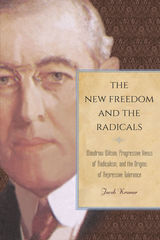 The New Freedom and the Radicals: Woodrow Wilson, Progressive Views of Radicalism, and the Origins of Repressive Tolerance
Jacob Kramer
Temple University Press, 2017 Radicals such as socialists, syndicalists, and anarchists are often thought of as marginal in American history. However, in the early decades of the twentieth century, progressives—those who sought to regulate big business, reduce class conflict, and ameliorate urban poverty—took the radicals’ ideas very seriously.
In The New Freedom and the Radicals, Jacob Kramer deftly examines how progressivism emerged at a time of critical transformation in American life. Using original archival sources, Kramer presents a study of Wilsonian-era politics to convey an understanding of the progressives’ views on radical America.
The New Freedom and the Radicals shows how the reactions of progressives to radicals accelerated the pace of reform in the United States, but how the movement was at times predisposed to repressing the radical elements to its left. In addition, Kramer asks to what extent progressives were responding to and influenced by those who opposed the state, capitalism, and the class structure altogether, as well as how progressives’ views of them changed in relation to events.
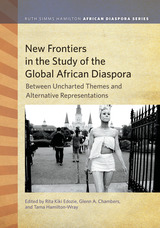 New Frontiers in the Study of the Global African Diaspora: Between Uncharted Themes and Alternative Representations
Rita Kiki Edozie
Michigan State University Press, 2018 This anthology presents a new study of the worldwide African diaspora by bringing together diverse, multidisciplinary scholarship to address the connectedness of Black subject identities, experiences, issues, themes, and topics, applying them dynamically to diverse locations of the Blackworld—Latin America, the Caribbean, Africa, and the United States. The book underscores three dimensions of African diaspora study. First is a global approach to the African diaspora, showing how globalism underscores the distinctive role that Africa plays in contributing to world history. Second is the extension of African diaspora study in a geographical scope to more robust inclusions of not only the African continent but also to uncharted paths and discoveries of lesser-known diaspora experiences and identities in Latin America and the Caribbean. Third is the illustration of universal unwritten cultural representations of humanities in the African diasporas that show the distinctive humanities’ disciplinary representations of Black diaspora imaginaries and subjectivities. The contributing authors inductively apply these themes to focus the reader’s attention on contemporary localized issues and historical arenas of the African diaspora. They engage their findings to critically analyze the broader norms and dimensions that characterize a given set of interrelated criteria that have come to establish parameters that increasingly standardize African diaspora studies.
The New Fundraisers: Who Organises Charitable Giving in Contemporary Society?
Beth Breeze
Bristol University Press, 2017 Charitable fundraising has become ever more urgent in a time of extensive public spending cuts. However, while the identity and motivation of those who donate comes under increasingly close scrutiny, little is known about the motivation and characteristics of the ‘askers’, despite almost every donation being solicited or prompted in some way.
This is the first empirically-grounded and theorised account of the identity, characteristics and motivation of fundraisers in the UK. Based on original data collected during a 3-year study of over 1,200 fundraisers, the book argues that it is not possible to understand charitable giving without accounting for the role of fundraising.
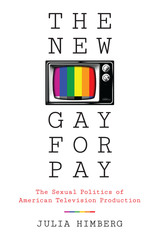 The New Gay for Pay: The Sexual Politics of American Television Production
By Julia Himberg
University of Texas Press, 2017 Television conveys powerful messages about sexual identities, and popular shows such as Will & Grace, Ellen, Glee, Modern Family, and The Fosters are often credited with building support for gay rights, including marriage equality. At the same time, however, many dismiss TV’s portrayal of LGBT characters and issues as “gay for pay”—that is, apolitical and exploitative programming created simply for profit. In The New Gay for Pay, Julia Himberg moves beyond both of these positions to investigate the complex and multifaceted ways that television production participates in constructing sexuality, sexual identities and communities, and sexual politics. Himberg examines the production stories behind explicitly LGBT narratives and characters, studying how industry workers themselves negotiate processes of TV development, production, marketing, and distribution. She interviews workers whose views are rarely heard, including market researchers, public relations experts, media advocacy workers, political campaigners designing strategies for TV messaging, and corporate social responsibility department officers, as well as network executives and producers. Thoroughly analyzing their comments in the light of four key issues—visibility, advocacy, diversity, and equality—Himberg reveals how the practices and belief systems of industry workers generate the conceptions of LGBT sexuality and political change that are portrayed on television. This original approach complicates and broadens our notions about who makes media; how those practitioners operate within media conglomerates; and, perhaps most important, how they contribute to commonsense ideas about sexuality.
 The New Gay Teenager
Ritch C. Savin-Williams
Harvard University Press, 2005 Gay, straight, bisexual: how much does sexual orientation matter to a teenager’s mental health or sense of identity? In this down-to-earth book, filled with the voices of young people speaking for themselves, Ritch Savin-Williams argues that the standard image of gay youth presented by mental health researchers—as depressed, isolated, drug-dependent, even suicidal—may have been exaggerated even twenty years ago, and is far from accurate today.
The New Gay Teenager gives us a refreshing and frequently controversial introduction to confident, competent, upbeat teenagers with same-sex desires, who worry more about the chemistry test or their curfew than they do about their sexuality. What does “gay” mean, when some adolescents who have had sexual encounters with those of their own sex don’t consider themselves gay, when some who consider themselves gay have had sex with the opposite sex, and when many have never had sex at all? What counts as “having sex,” anyway? Teenagers (unlike social science researchers) are not especially interested in neatly categorizing their sexual orientation.
In fact, Savin-Williams learns, teenagers may think a lot about sex, but they don’t think that sexuality is the most important thing about them. And adults, he advises, shouldn’t think so either.
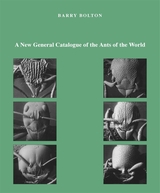 A New General Catalogue of the Ants of the World
Barry Bolton
Harvard University Press, 1995 “A name is forever, or at least as long as taxonomy continues,” Barry Bolton writes, and here are all the names, antique and modern, of all the ants that are or ever were—from the arctic to the tropical, the fossilized to the living, the mislabeled to the newly christened members of the family Formicidae. For every name that has ever been applied to ants, the book supplies a history and an account of current usage, together with a fully documented indication of the present-day classification. Its comprehensive bibliography provides references to original description, synonymy, homonymy, changes in rank, status, and availability, and alterations in generic status.
Organized by family group, genus group, and species group, this meticulously detailed but easily used volume is the ultimate resource for myrmecology. Along with Bolton’s Identification Guide to the Ant Genera of the World, it will be the essential reference for anyone, expert or amateur, with an interest in ants.
New Geographies, 12: Commons
Mojdeh Mahdavi and Liang Wang
Harvard University Press This issue of New Geographies aims to foreground the significance of political thinking in the process of space production. It proposes the concept of commons as a mode of thinking that challenges assumptions in the design disciplines such as public and private spaces, local and regional geographies, and capital and state interventions.
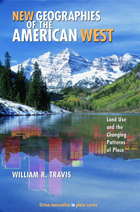 New Geographies of the American West: Land Use and the Changing Patterns of Place
William R. Travis
Island Press, 2006 Reconciling explosive growth with often majestic landscape defines New Geographies of the American West. Geographer William Travis examines contemporary land use changes and development patterns from the Mississippi to the Pacific, and assesses the ecological and social outcomes of Western development. Unlike previous "boom" periods dependent on oil or gold, the modern population explosion in the West reflects a sustained passion for living in this specific landscape. But the encroaching exurbs, ranchettes, and ski resorts are slicing away at the very environment that Westerners cherish. Efforts to manage growth in the West are usually stymied at the state and local levels. Is it possible to improve development patterns within the West's traditional anti-planning, pro-growth milieu, or is a new model needed? Can the region develop sustainably, protecting and managing its defining wildness, while benefiting from it, too? Travis takes up the challenge , suggesting that functional and attractive settlement can be embedded in preserved lands, working landscapes, and healthy ecologies.
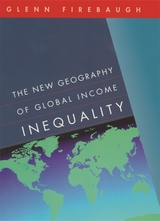 The New Geography of Global Income Inequality
Glenn Firebaugh
Harvard University Press, 2006 The surprising finding of this book is that, contrary to conventional wisdom, global income inequality is decreasing. Critics of globalization and others maintain that the spread of consumer capitalism is dramatically polarizing the worldwide distribution of income. But as the demographer Glenn Firebaugh carefully shows, income inequality for the world peaked in the late twentieth century and is now heading downward because of declining income inequality across nations. Furthermore, as income inequality declines across nations, it is rising within nations (though not as rapidly as it is declining across nations). Firebaugh claims that this historic transition represents a new geography of global income inequality in the twenty-first century.
This book documents the new geography, describes its causes, and explains why other analysts have missed one of the defining features of our era—a transition in inequality that is reducing the importance of where a person is born in determining his or her future well-being.
A New Geography of Poets
Edward Field
University of Arkansas Press, 1993 Sparked by Archibald MacLeish's assertion that "there always was a relationship between poet and place," Field and his co-editors offer an updated look at the contemporary poetry scene in A New Geography of Poets.
 The New Geopolitics of Natural Gas
Agnia Grigas
Harvard University Press, 2017 We are in the midst of an energy revolution, led by the United States. As the world’s greatest producer of natural gas moves aggressively to expand its exports of liquefied natural gas (LNG), America stands poised to become an energy superpower—an unanticipated development with far-reaching implications for the international order. Agnia Grigas drills deep into today’s gas markets to uncover the forces and trends transforming the geopolitics of gas.
The boom in shale gas production in the United States, the growth of global LNG trade, and the buildup of gas transport infrastructure worldwide have so transformed the traditional markets that natural gas appears to be on the verge of becoming a true global commodity. Traditional suppliers like Russia, whose energy-poor neighbors were dependent upon its gas exports and pipelines, are feeling the foundations of the old order shifting beneath their feet. Grigas examines how this new reality is rewriting the conventional rules of intercontinental gas trade and realigning strategic relations among the United States, the European Union, Russia, China, and beyond.
In the near term, Moscow’s political influence will erode as the Russian gas giant Gazprom loses share in its traditional markets while its efforts to pivot eastward to meet China’s voracious energy needs will largely depend on Beijing’s terms. In this new geopolitics of gas, the United States will enjoy opportunities but also face challenges in leveraging its newfound energy clout to reshape relations with both European states and rising Asian powers.
New German Dance Studies
Edited by Susan Manning and Lucia Ruprecht
University of Illinois Press, 2012 New German Dance Studies offers fresh histories and theoretical inquiries that resonate across fields of the humanities. Sixteen essays range from eighteenth-century theater dance to popular contemporary dances in global circulation. In an exquisite trans-Atlantic dialogue that demonstrates the complexity and multilayered history of German dance, American and European scholars and artists elaborate on definitive performers and choreography, focusing on three major thematic areas: Weimar culture and its afterlife, the German Democratic Republic, and recent conceptual trends in theater dance. Contributors are Maaike Bleeker, Franz Anton Cramer, Kate Elswit, Susanne Franco, Susan Funkenstein, Jens Richard Giersdorf, Yvonne Hardt, Sabine Huschka, Claudia Jeschke, Marion Kant, Gabriele Klein, Karen Mozingo, Tresa Randall, Gerald Siegmund, and Christina Thurner.
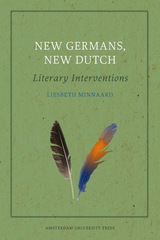 New Germans, New Dutch: Literary Interventions
Liesbeth Minnaard
Amsterdam University Press, 2009 In the globalised world of today, traditional definitions of national Self and national Other no longer hold. The unmistakable transformation of German and Dutch societies demands a thorough rethinking of national boundaries on several levels. This book examines how literature of migration intervenes in public discourses on multiculturality in Germany and the Netherlands, epitomised in the strikingly parallel debates on the ‘German Leitkultur’ and the Dutch ‘multicultural drama’ in the year 2000. By juxtaposing detailed analyses of literary work by the Turkish-German writers Emine Sevgi Özdamar and Feridun Zaimoglu and the Moroccan-Dutch writers Abdelkader Benali and Hafid Bouazza, New Germans, New Dutch offers crucial insights into the specific ways in which this literature negotiates its national context of writing. This book demonstrates how German literature of migration seeks alternative forms of community outside the national parameters, whereas the Dutch literature negotiates difference and re-imagines Dutchness within the national framework.
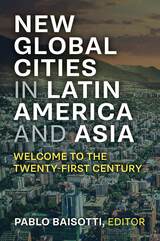 New Global Cities in Latin America and Asia: Welcome to the Twenty-First Century
Pablo Baisotti, Editor
University of Michigan Press, 2022 New Global Cities in Latin America and Asia: Welcome to the Twenty-First Century proposes new visions of global cities and regions historically considered “secondary” in the international context. The arguments are not only based on material progress made by these metropolises, but also on the growing social difficulties experienced (e.g., organized crime, drug trafficking, slums, economic inequalities). The book illustrates the growth of cities according to these problems arising from the modernity of the new century, comparing Latin American and Asian cities.
This book analyzes the complex relationships within cities through an interdisciplinary approach, complementing other research and challenging orthodox views on global cities. At the same time, the book provides new theoretical and methodological tools to understand the progress of “Third World” cities and the way of understanding “globality” in the 21st century by confronting the traditional views with which global cities were appreciated since the 1980s. Pablo Baisotti brings together researchers from various fields who provide new interpretative keys to certain cities in Latin America and Asia.
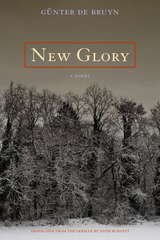 New Glory: A Novel
Günter de Bruyn
Northwestern University Press, 2009 At the time New Glory (Neue Herrlichkeit) was published in 1984, most dissident authors had fled the German Democratic Republic, then in its final years. Günter de Bruyn courageously remained to satirize the regime from behind the Iron Curtain. He is a popular writer and cultural commentator in unified Germany. New Glory tells the story of Viktor Kösling, a privileged young man from the GDR about to embark on a diplomatic career. He retreats to "New Glory," a state-run resort in rural Brandenburg run by a corrupt director, to finish his dissertation on "The Foreign Policy of the Prussian Government During the French Revolution with Particular Emphasis on the Effects of Artisan and Peasant Unrest in the Provinces." While there he falls, against his parents’ wishes, for the lisping chambermaid, Thilde. The complex drama that follows, which pays tribute to Mann’s The Magic Mountain and its ironic view of human nature, exposes the moral weakness of Viktor’s character and the farcical distance between official East German ideals and the opportunistic functionaries who enabled the system.
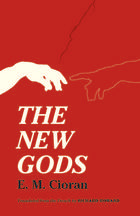 The New Gods
E. M. Cioran
University of Chicago Press, 1974 Dubbed “Nietzsche without his hammer” by literary critic James Wood, the Romanian philosopher E. M. Cioran is known as much for his profound pessimism and fatalistic approach as for the lyrical, raging prose with which he communicates them. Unlike many of his other works, such as On the Heights of Despair and Tears and Saints, The New Gods eschews his usual aphoristic approach in favor of more extensive and analytic essays. Returning to many of Cioran’s favorite themes, The New Gods explores humanity’s attachment to gods, death, fear, and infirmity, in essays that vary widely in form and approach. In “Paleontology” Cioran describes a visit to a museum, finding the relatively pedestrian destination rife with decay, death, and human weakness. In another chapter, Cioran explores suicide in shorter, impressionistic bursts, while “The Demiurge” is a shambolic exploration of man’s relationship with good, evil, and God. All the while, The New Gods reaffirms Cioran’s belief in “lucid despair,” and his own signature mixture of pessimism and skepticism in language that never fails to be a pleasure. Perhaps his prose itself is an argument against Cioran’s near-nihilism: there is beauty in his books.
The New Gods: Psyche and Symbol in Popular Art
Harold Schechter
University of Wisconsin Press, 1980 Harold Schechter looks at the impossible tales and images of popular art--the space odysseys and extraterrestrial civilizations, the caped crusaders and men of steel, and monsters from the ocean floor--and finds close connections between religious myth and popular entertainment.
A New Green Order?: The World Bank and the Politics of the Global Environment Facility
Zoe Young
Pluto Press, 2002 The Global Environment Facility (GEF) is a publicly funded, multi-billion dollar experiment in global resource management. It was set up in 1991 by the World Bank to fund international conventions on climate change and biodiversity.
Investigating the workings of this little known aid fund, Zoe Young takes a critical look at the conflicts involved, focusing on how the GEF's agenda relates to questions of globalisation, knowledge and accountability in the United States and the World Bank.
As our landscapes, fertility, cultures and ecosystems are being destroyed every day, Zoe Young gives a disturbing account of the complex issues that must be addressed before the world's environment can be managed more democratically - and effectively.
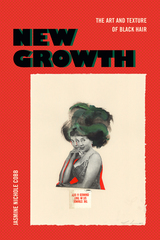 New Growth: The Art and Texture of Black Hair
Jasmine Nichole Cobb
Duke University Press, 2022 From Frederick Douglass to Angela Davis, “natural hair” has been associated with the Black freedom struggle. In New Growth Jasmine Nichole Cobb traces the history of Afro-textured coiffure, exploring it as a visual material through which to reimagine the sensual experience of Blackness. Through close readings of slave narratives, scrapbooks, travel illustrations, documentary films, and photography as well as collage, craft, and sculpture, from the nineteenth century to the present, Cobb shows how the racial distinctions ascribed to people of African descent become simultaneously visible and tactile. Whether examining Soul Train’s and Ebony’s promotion of the Afro hairstyle alongside styling products or how artists such as Alison Saar and Lorna Simpson underscore the construction of Blackness through the representation of hair, Cobb foregrounds the inseparability of Black hair’s look and feel. Demonstrating that Blackness is palpable through appearance and feeling, Cobb reveals the various ways that people of African descent forge new relationships to the body, public space, and visual culture through the embrace of Black hair.
New Hard-Boiled Writers: 1970s–1990s
LeRoy Lad Panek
University of Wisconsin Press, 2000 Beginning in the 1970s, a new generation of writers took over the hard-boiled story (created by Raymond Chandler and Dashiell Hammett) and transformed it to fit the realities of their world—a universe infected by violence, greed, racism, sexism, war, and commercialism. Their protagonists, too, are far different from Sam Spade and Philip Marlowe.
The author comments both on the way the hard-boiled story has changed over the past three decades and examines the work of ten significant contemporary hard-boiled writers. Chapters on Robert B. Parker, James Crumley, Loren Estleman, Sara Paretsky, Sue Grafton, Carl Hiaasen, Earl Emerson, Robert Crais, James Lee Burke, and Walter Mosley demonstrate how these writers have used the hard-boiled hero to make powerful statements about life in the last quarter of the twentieth century.
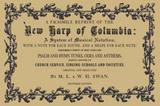 The New Harp Of Columbia, Restored Edition
Ml Swan
University of Tennessee Press, 2001 In the small towns and rural areas of early America, church-sponsored “singing schools” proliferated as a way of both improving congregational singing and drawing communities together. Congregants attending these schools were taught a form of musical notation in which the notes were assigned different shapes to indicate variations in pitch—a method that worked well with singers having little understanding of standard musical notation. These schools eventually became major social events that drew hundreds of attendees, and today countless enthusiasts carry on the shape-note tradition.
The New Harp of Columbia, originally published in Knoxville in 1867, was a shape-note tunebook used in East Tennessee singing schools. It was based on an even earlier publication, The Harp of Columbia (1848). In 1978, the University of Tennessee Press published a facsimile edition of The New Harp with an introduction by Dorothy D. Horn, Ron Petersen, and Candra Phillips that detailed the history of shape-note singing as well as the story of the tunebook itself and its original compilers, W. H. Swan and M. L. Swan. That edition went out of print in 1999. Now, for this “restored edition” of the tunebook, the Press has reprinted not only the full text of its 1978 facsimile edition but has included additional tunes that were part of the original 1848 Harp of Columbia. A few verses to some songs favored by contemporary singers have also been added, and a new foreword by Larry Olszewski and Bruce Wheeler brings the story of the tunebook and its users up to date.
Included in the book are old psalm and hymn tunes, anthems, fuguing pieces, and folk hymns—a total of more than two hundred pieces that represent a fascinating slice of Americana. As a reviewer for the Journal of Church Music noted of the 1978 facsimile: “[The book is] a worthwhile addition to any church musician’s library, especially those interested in the development of American sacred music over the past two centuries.” This publication marks a significant new step in preserving an important musical tradition.
 The New Harvard Dictionary of Music: Third Edition
Don Michael Randel
Harvard University Press, 1986 THIS EDITION HAS BEEN REPLACED BY A NEWER 2003 EDITION.
This classic reference work is simply the best one-volume music dictionary available today. Its nearly 6,000 entries, written by more than 70 top musicologists, are consistently lucid and based on recent scholarship. The New Harvard Dictionary of Music contains among its riches superb articles on music of the 20th century, including jazz, rock, and mixed media as well as twelve-tone, serial, and aleatory music; comprehensive articles on the music of Africa, Asia, Latin America, and the Near East; entries on all the styles and forms in Western art music; and descriptions of instruments enriched by historical background. Short entries for quick reference--definitions and identifications--alternate with encyclopedia-length articles written by experts in each field. More than 220 drawings and 250 musical examples enhance the text.
Combining authoritative scholarship with concise, lively prose, The New Harvard Dictionary of Music is the essential guide for musicians, students, and everyone who listens to music.
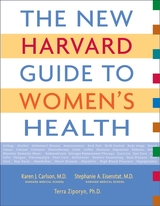 The New Harvard Guide to Women’s Health
Karen J. Carlson, M.D., Stephanie A. Eisenstat, M.D., and Terra Ziporyn, Ph.D.
Harvard University Press, 2004 With the publication in 1996 of The Harvard Guide to Women's Health, women seeking answers to questions about their health had access to the combined expertise of physicians from three of the world's most prestigious medical institutions: Harvard Medical School, Massachusetts General Hospital, and Brigham and Women's Hospital. With complete information on women's health concerns, physical and behavioral, this A to Z reference quickly became a definitive resource, praised especially for its coverage of topics not previously considered under the umbrella of women's health. The New Harvard Guide to Women's Health reunites the authors to bring a valued health reference up to date for a new generation--and for those women who have come to rely on the Harvard Guide and are now wondering what to do about their health as they enter a new stage of life, asking questions like the following: I've been on hormone replacement therapy. Should I stop? How?
Could this rash be lupus?
I've been on the Pill. What is my risk for stroke?
Fat is bad, fat is good: What should I believe? And what's left to eat?
When does ordinary worry become chronic anxiety?
What screening tests do I need now?
In addition to revised recommendations reflecting the current medical thinking on menopause and hormone replacement therapy, the New Harvard Guide includes updated recommendations about cardiac health and heart disease--the #1 killer of women in the United States
entries reflecting recent advances in the understanding and treatment of autoimmune diseases
better coverage of health concerns throughout a woman's life span, from her first period to menopause and beyond, with a new entry on perimenopause
expanded nutritional recommendations, including a unique chart of the U.S. government's Daily Reference Intakes for micronutrients, broken down for teens and women whose needs may differ because they are pregnant, breastfeeding, or postmenopausal
updated information on over-the-counter medications, prescription drugs, procedures, screenings, and diagnostic tests
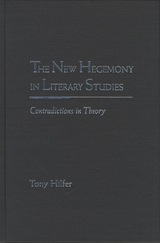 The New Hegemony in Literary Studies: Contradictions in Theory
Tony Hilfer
Northwestern University Press, 2003 In a trenchant critique of the full range of theoretical discourses that have come into favor in literary studies since the 1960s, Tony Hilfer demonstrates that none of the practitioners of these forms of criticism subject their own claims to the kind of suspicious scrutiny that they devote to their own objects of study. Assimilating the critiques that have been made of almost all of the major recent modes of criticism-Marxism, feminism, deconstruction, New Historicism, Foucaultian-Hilfer brings them acutely to bear on his central argument: that these methods systematically fail to live up to their own methodological scruples.
The problem Hilfer identifies is one of logical consistency, but also of moral and psychological implications, and it can be found operating across the whole spectrum of literary Theory. It is, however, as this book makes blindingly clear, not immune from scrutiny. With quiet erudition and consistent incisiveness, Hilfer shows how the various methods, while ostensibly at odds, actually fit together, all sharing the same peculiar structure and logic, and all wearing an identical set of ideological blinders. He offers examples of theorists-and assumptions-hard at work on particular texts, and again and again (often letting these theorists refute themselves) pinpoints the blindspots that have become endemic in the practice of Theory.
Written with great care and a deep commitment to the value and integrity of literary criticism and theory, this tonic work stands as a corrective to the misuse of theory, and a bracing reminder of how a critical approach works when it is well and judiciously applied.
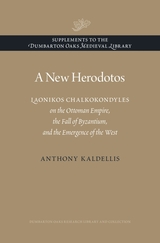 A New Herodotos: Laonikos Chalkokondyles on the Ottoman Empire, the Fall of Byzantium, and the Emergence of the West
Anthony Kaldellis
Harvard University Press This companion to the two-volume Dumbarton Oaks Medieval Library edition and translation of the Histories by Laonikos Chalkokondyles is the first book-length investigation of an author who has been poorly studied. Providing biographical and intellectual context for Laonikos, Anthony Kaldellis shows how the author synthesized his classical models to fashion his own distinctive voice and persona as a historian.
Indebted to his teacher Plethon for his global outlook, Laonikos was one of the first historians to write with a pluralist’s sympathy for non-Greek ethnic groups, including Islamic ones. His was the first secular and neutral account of Islam written in Greek. Kaldellis deeply explores the ethnic dynamics that explicitly and implicitly undergird the Histories, which recount the rise of the Ottoman empire and the decline of the Byzantine empire, all in the context of expanding western power. Writing at once in antique and contemporary modes, Laonikos transformed “barbarian” oral traditions into a classicizing historiography that was both Greek and Ottoman in outlook.
Showing that he was instrumental in shifting the self-definition of his people from Roman to the Western category of “Greek,” Kaldellis provides a stimulating account of the momentous transformations of the mid-fifteenth century.
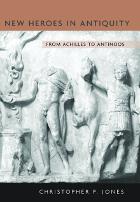 New Heroes in Antiquity: From Achilles to Antinoos
Christopher P. Jones
Harvard University Press, 2010 Heroes and heroines in antiquity inhabited a space somewhere between gods and humans. In this detailed, yet brilliantly wide-ranging analysis, Christopher Jones starts from literary heroes such as Achilles and moves to the historical record of those exceptional men and women who were worshiped after death. He asks why and how mortals were heroized, and what exactly becoming a hero entailed in terms of religious action and belief. He proves that the growing popularity of heroizing the dead—fallen warriors, family members, magnanimous citizens—represents not a decline from earlier practice but an adaptation to new contexts and modes of thought. The most famous example of this process is Hadrian’s beloved, Antinoos, who can now be located within an ancient tradition of heroizing extraordinary youths who died prematurely. This book, wholly new and beautifully written, rescues the hero from literary metaphor and vividly restores heroism to the reality of ancient life.
The New Hiking the Monadnock Region: 44 Nature Walks and Day-Hikes in the Heart of New England
Joe Adamowicz
University Press of New England, 2007 The New Hiking the Monadnock Region will lead you through forests and meadows, over small mountains and gentle hills, around ponds and sanctuaries, and along streams and abandoned roads. This detailed and informative guide, fully expanded and updated, now includes a beautifully rendered map for each hike and also provides information on flora and fauna, as well as local history and nearby sightseeing destinations. In addition, the book contains specialized information for the beginning hiker and for parents hiking with children, lists of hiking and conservation organizations, and other helpful resources. Whether you’re a seasoned hiker, a family with children, an amateur naturalist, a lifelong resident of the region, or a visitor, this is your essential guide to enjoying one of the most popular outdoor recreation spots in the northeast.
 The New History and the Old: Critical Essays and Reappraisals, First Edition
Gertrude Himmelfarb
Harvard University Press, 1987 The New History and the Old is a marvelously written, perfectly serious, yet vastly entertaining critique of current fashions in the writing of history--social history, psychoanalytic history, quantitative history, Marxist and neo-Marxist history, mentalité history.
As the "new" history is coming to dominate the profession, Gertrude Himmelfarb argues, it tends to supplant rather than supplement the "old," which centered on political, constitutional, diplomatic, and intellectual events. The effect is not only to transform the discipline of history, but also to alter profoundly our sense of the past. A mode of history that belittles politics and ideas denigrates the political institutions and intellectual traditions that have shaped our past, and severs the continuity between past and present, leaving little that is usable in their place.
This provocative analysis of the "revolution in history," as it has been called, has implications that go well beyond the discipline of history itself. It raises fundamental and far-reaching questions about the nature of our postmodern society and will undoubtedly arouse a good deal of discussion and debate along broad cultural lines.
The New History and the Old: Critical Essays and Reappraisals, Revised Edition
Gertrude Himmelfarb
Harvard University Press, 2004 For this updated edition of her acclaimed work on historians and the writing of history, Gertrude Himmelfarb adds four insightful and provocative essays dealing with changes in the discipline over the past twenty years.
In examining the effects of postmodernism, the illusions of cosmopolitanism, A. J. P. Taylor and revisionism, and Francis Fukuyama’s “end of history,” Himmelfarb enriches her illuminating exploration of the myriad ways—new and old—in which historians make sense of the past.
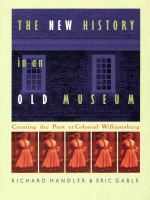 The New History in an Old Museum: Creating the Past at Colonial Williamsburg
Richard Handler and Eric Gable
Duke University Press, 1997 The New History in an Old Museum is an exploration of "historical truth" as presented at Colonial Williamsburg. More than a detailed history of a museum and tourist attraction, it examines the packaging of American history, and consumerism and the manufacturing of cultural beliefs. Through extensive fieldwork—including numerous site visits, interviews with employees and visitors, and archival research—Richard Handler and Eric Gable illustrate how corporate sensibility blends with pedagogical principle in Colonial Williamsburg to blur the lines between education and entertainment, patriotism and revisionism.
During much of its existence, the "living museum" at Williamsburg has been considered a patriotic shrine, celebrating the upscale lifestyles of Virginia’s colonial-era elite. But in recent decades a new generation of social historians has injected a more populist and critical slant to the site’s narrative of nationhood. For example, in interactions with museum visitors, employees now relate stories about the experiences of African Americans and women, stories that several years ago did not enter into descriptions of life in Colonial Williamsburg. Handler and Gable focus on the way this public history is managed, as historians and administrators define historiographical policy and middle-level managers train and direct front-line staff to deliver this "product" to the public. They explore how visitors consume or modify what they hear and see, and reveal how interpreters and craftspeople resist or acquiesce in being managed. By deploying the voices of these various actors in a richly textured narrative, The New History in an Old Museum highlights the elements of cultural consensus that emerge from this cacophony of conflict and negotiation.
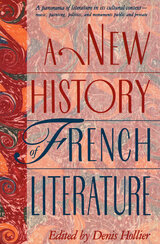 A New History of French Literature
Denis Hollier
Harvard University Press, 1994 Designed for the general reader, this splendid introduction to French literature from 842 A.D.—the date of the earliest surviving document in any Romance language—to the present decade is the most compact and imaginative single-volume guide available in English to the French literary tradition. In fact, no comparable work exists in either language. It is not the customary inventory of authors and titles but rather a collection of wide-angled views of historical and cultural phenomena. It sets before us writers, public figures, criminals, saints, and monarchs, as well as religious, cultural, and social revolutions. It gives us books, paintings, public monuments, even TV shows.
Written by 164 American and European specialists, the essays are introduced by date and arranged in chronological order, but here ends the book’s resemblance to the usual history of literature. Each date is followed by a headline evoking an event that indicates the chronological point of departure. Usually the event is literary—the publication of an original work, a journal, a translation, the first performance of a play, the death of an author—but some events are literary only in terms of their repercussions and resonances. Essays devoted to a genre exist alongside essays devoted to one book, institutions are presented side by side with literary movements, and large surveys appear next to detailed discussions of specific landmarks.
No article is limited to the “life and works” of a single author. Proust, for example, appears through various lenses: fleetingly, in 1701, apropos of Antoine Galland’s translation of The Thousand and One Nights; in 1898, in connection with the Dreyfus Affair; in 1905, on the occasion of the law on the separation of church and state; in 1911, in relation to Gide and their different treatments of homosexuality; and at his death in 1922.
Without attempting to cover every author, work, and cultural development since the Serments de Strasbourg in 842, this history succeeds in being both informative and critical about the more than 1,000 years it describes. The contributors offer us a chance to appreciate not only French culture but also the major critical positions in literary studies today. A New History of French Literature will be essential reading for all engaged in the study of French culture and for all who are interested in it. It is an authoritative, lively, and readable volume.
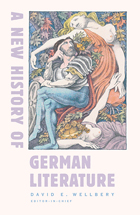 A New History of German Literature
David E. Wellbery, Editor-in-ChiefJudith Ryan, General EditorHans Ulrich Gumbrecht, Anton Kaes, Joseph Leo Koerner, Dorothea E. von Mücke, Editors
Harvard University Press, 2004 The revolutionary spirit that animates the culture of the Germans has been alive for at least twelve centuries, far longer than the dramatically fragmented and reshaped political entity known as Germany. German culture has been central to Europe, and it has contributed the transforming spirit of Lutheran religion, the technology of printing as a medium of democracy, the soulfulness of Romantic philosophy, the structure of higher education, and the tradition of liberal socialism to the essential character of modern American life.
In this book leading scholars and critics capture the spirit of this culture in some 200 original essays on events in German literary history. Rather than offering a single continuous narrative, the entries focus on a particular literary work, an event in the life of an author, a historical moment, a piece of music, a technological invention, even a theatrical or cinematic premiere. Together they give the reader a surprisingly unified sense of what it is that has allowed Meister Eckhart, Hildegard of Bingen, Luther, Kant, Goethe, Beethoven, Benjamin, Wittgenstein, Jelinek, and Sebald to provoke and enchant their readers. From the earliest magical charms and mythical sagas to the brilliance and desolation of 20th-century fiction, poetry, and film, this illuminating reference book invites readers to experience the full range of German literary culture and to investigate for themselves its disparate and unifying themes.
Contributors include: Amy M. Hollywood on medieval women mystics, Jan-Dirk Müller on Gutenberg, Marion Aptroot on the Yiddish Renaissance, Emery Snyder on the Baroque novel, J. B. Schneewind on Natural Law, Maria Tatar on the Grimm brothers, Arthur Danto on Hegel, Reinhold Brinkmann on Schubert, Anthony Grafton on Burckhardt, Stanley Corngold on Freud, Andreas Huyssen on Rilke, Greil Marcus on Dada, Eric Rentschler on Nazi cinema, Elisabeth Young-Bruehl on Hannah Arendt, Gordon A. Craig on Günter Grass, Edward Dimendberg on Holocaust memorials.
New History Of Italian South: The Mezzogiorno Revisited
Edited by Robert Lumley and Jonathan Morris
University of Exeter Press, 1998
This collection of essays brings together the work of a new generation of revisionist historians who argue that the true history of Southern Italy has been reduced to that of a 'Southern problem' viewed through a Northern prism. These scholars suggest that the South was not a 'backward' region, but a combination of regions in which different social and economic patterns had evolved in response to the prevailing conditions within the Kingdom of the Two Sicilies.
The book employs an interdisciplinary approach to examine not only the concrete history of the South, but also the discourses and images in which it has been framed. It is the first publication in English devoted to the new history of Southern Italy, and brings together many of the leading figures in the revisionist movement, as well as some of their critics.
A New History of Korea
Ki-baik Lee
Harvard University Press, 1984 The first English-language history of Korea to appear in more than a decade, this translation offers Western readers a distillation of the latest and best scholarship on Korean history and culture from the earliest times to the student revolution of 1960. The most widely read and respected general history, A New History of Korea (Han’guksa sillon) was first published in 1961 and has undergone two major revisions and updatings.
Translated twice into Japanese and currently being translated into Chinese as well, Ki-baik Lee’s work presents a new periodization of his country’s history, based on a fresh analysis of the changing composition of the leadership elite. The book is noteworthy, too, for its full and integrated discussion of major currents in Korea’s cultural history. The translation, three years in preparation, has been done by specialists in the field.
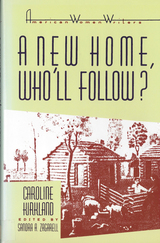 'A New Home, Who Will Follow?' by Caroline Kirkland
Zagarell, Sandra A
Rutgers University Press, 1990 Set in the frontier of Michigan int he 1830s, A New Home is the first realistic portrayal of western village life in the United States. Based on Caroline Kirkland's own experiences - and written from a woman's perspective - it narrates with a keen eye and wit the absorbing story of the establishment of the village of Montacute, Michigan.
A New Home is a vivid contribution to a new kind of narrative developed during the antebellum period, ethnographic fiction. Kirkland highlights the importance and the drama of local practices and everyday life in Montacute. She traces the way two groups of settlers slowly adjust to each other - the old hands and the newcomers from the East;. Dramatizing differences of class and culture, she also shows how the groups finally form a genuine community and a new, diverse culture. Kirkland also gives ethnographic fiction an original twist: she satirizes the provincialism and the rigidity of both groups of settlers.
After writing A New Home, Kirkland became a professional literary woman, working as an editor as well as a writer. In her introduction, Sandra Zagarell explores the implications of Kirkland's writing and professional career for our understanding of women, writing, and the world of literature in antebellum America.
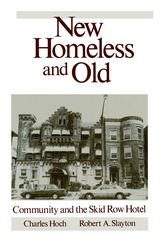 New Homeless And Old: Community and the Skid Row Hotel
Charles Hoch
Temple University Press, 1990 "This book...will undoubtedly influence the course of future homeless research and policy. It represents the most comprehensive statement today of the realities of Skid Row life and of the pitfalls of contrasting 'new' and 'old' homeless populations."
--American Journal of Sociology
Blending detailed historical perspective with contemporary survey research, Charles Hoch and Robert Slayton argue that the answers to one of the most pressing problems of our time come from the poor themselves. Their examination of the Skid Row single room occupancy hotel (SRO) reveals how communities formed by low-income single-person households have for decades offered the security, personal autonomy, and privacy for the "old" homeless that the "new" homeless lack. And they show how public urban renewal efforts, which destroyed the bulk of these hotels with the intent to rid the inner city of the Skid Row homeless, actually laid the foundation for today's urban homeless crisis.
Focusing on Chicago from 1870 to the present, but including case studies in other cities, Hoch and Slayton analyze how these SRO hotels operated in the past and claim that the term "flop house" really described a wide range of shelter types available to the poor according to their economic conditions.
Based on their research, the authors conclude that policies for solving the homeless problem should focus mainly not on the homeless people, but on the institutional actors who benefit directly and indirectly from their predicament. This means changing public policies that encourage the destruction of affordable housing, especially SRO hotels, and implementing preservation, rehabilitation, and new construction policies instead.
"The authors argue that government attitudes rooted in New Deal philosophy, and public confusion of this group's characteristics with those of a stereotypical Skid Row deviant, have resulted in inadequate planning for dealing with people who have a legitimate social problem and need enlightened attention. Recommended for professionals and academics."
--Library Journal
"Hoch and Slayton seem more savvy...about the political implications of housing and land-use policies. And they aren't shy about naming names, which makes their study more comprehensive and compelling."
--Chicago Enterprise
"New Homeless and Old breaks with the tradition of previous research in several welcome respects...the approach taken is refreshingly eclectic, weaving together historical materials, survey evidence, and intimate knowledge of the local scene. In a devastating critique of advocates' ameliorative efforts, they show bow both compassion--and entitlement--based appeals have encouraged 'shelterization,' thus threatening to institutionalize the homelessness problem."
--Science
 New Hope
Ruth Suckow
University of Iowa Press, 1998 A writer of wide experience, Ruth Suckow nevertheless remained focused on small-town life; one could even call her the Jane Austen of small-town America. Many of her characters were the “sparrows of Iowa,” ordinary folks whom she made extraordinary by writing about them. In her 1942 novel about the little community of New Hope, written during the desperate days of World War II, life is marked by unusual optimism, openness, mutual care, trust, communal spirit, democracy, and above all light. Life in New Hope recaptures a feeling of youth that would seem overly idealistic if it were not for Suckow's unflinching realism. As seen through the eyes of its Edenic main characters—Clarence Miller, son of the town's banker and chief booster, and Delight Greenwood, daughter of the Congregational minister who serves New Hope during the two years of the novel—the town itself is the protagonist. Death, crime, and heartbreak intervene, but a sense of freedom and possibility, “where all were to share equally in the boundlessness of light and hope,” always illuminates the town. This sunlit novel, with its blend of romance and reality, reintroduces a regional writer whom H. L. Mencken called “unquestionably the most remarkable woman …writing stories in the republic.”
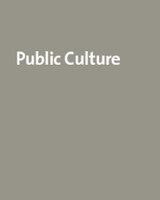 New Imaginaries, Volume 14
Dilip Parameshwar Gaonkar and Benjamin Lee, eds.
Duke University Press How do ordinary people identify themselves as part of a group? By what means do they express a largely unspoken understanding of themselves in society? This special issue on new social imaginaries examines the emergent forms of solidarity and collective identity in a global context. The essays explore how local cultural forms and global social movements contribute to the making and unmaking of imagined collective identities. Contributors to this collection include major voices in the fields of philosophy, critical literature, sociology, anthropology, and communication studies. The articles consider how people conceive of and categorize themselves as part of a cohesive group under the multiple rubrics of the public and counterpublic, nation, ethnos, civilization, genealogy, democracy, and the market. Many of the essays are situated in specific national and cultural sites such as Africa, Australia, eighteenth-century England, the European Union, India, and Turkey. Others examine the intersections of global financial markets and democratic institutions. As a whole, New Imaginaries suggests a new way of synthesizing economic, political, and cultural approaches to social life. Contributors. Arjun Appadurai, Craig Calhoun, Dilip Parameshwar Gaonkar, Nilüfer Göle, Benjamin Lee, Edward LiPuma, Achille Mbembe, Mary Poovey, Elizabeth A. Povinelli, Charles Taylor, Michael Warner
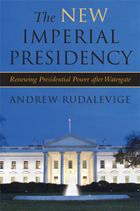 The New Imperial Presidency: Renewing Presidential Power after Watergate
Andrew Rudalevige
University of Michigan Press, 2006 Has the imperial presidency returned?
"Well written and, while indispensable for college courses, should appeal beyond academic audiences to anyone interested in how well we govern ourselves. . . . I cannot help regarding it as a grand sequel for my own The Imperial Presidency."
---Arthur Schlesinger, Jr.
Has the imperial presidency returned? This question has been on the minds of many contemporary political observers, as recent American administrations have aimed to consolidate power.
In The New Imperial Presidency, Andrew Rudalevige suggests that the congressional framework meant to advise and constrain presidential conduct since Watergate has slowly eroded. Rudalevige describes the evolution of executive power in our separated system of governance. He discusses the abuse of power that prompted what he calls the "resurgence regime" against the imperial presidency and inquires as to how and why---over the three decades that followed Watergate---presidents have regained their standing.
Chief executives have always sought to interpret constitutional powers broadly. The ambitious president can choose from an array of strategies for pushing against congressional authority; finding scant resistance, he will attempt to expand executive control. Rudalevige's important and timely work reminds us that the freedoms secured by our system of checks and balances do not proceed automatically but depend on the exertions of public servants and the citizens they serve. His story confirms the importance of the "living Constitution," a tradition of historical experiences overlaying the text of the Constitution itself.
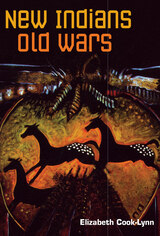 New Indians, Old Wars
Elizabeth Cook-Lynn
University of Illinois Press, 2006 Challenging received American history and forging a new path for Native American studies Addressing Native American Studies' past, present, and future, the essays in New Indians, Old Wars tackle the discipline head-on, presenting a radical revision of the popular view of the American West in the process. Instead of luxuriating in its past glories or accepting the widespread historians' view of the West as a shared place, Elizabeth Cook-Lynn argues that it should be fundamentally understood as stolen. Firmly grounded in the reality of a painful past, Cook-Lynn understands the story of the American West as teaching the political language of land theft and tyranny. She argues that to remedy this situation, Native American studies must be considered and pursued as its own discipline, rather than as a subset of history or anthropology. She makes an impassioned claim that such a shift, not merely an institutional or theoretical change, could allow Native American studies to play an important role in defending the sovereignty of indigenous nations today.
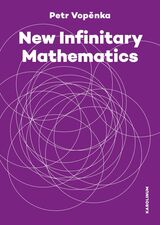 New Infinitary Mathematics
Petr Vopenka
Karolinum Press, 2023 A rethinking of Cantor and infinitary mathematics by the creator of Vopěnka's principle.
The dominant current of twentieth-century mathematics relies on Georg Cantor’s classical theory of infinite sets, which in turn relies on the assumption of the existence of the set of all natural numbers, the only justification for which—a theological justification—is usually concealed and pushed into the background.
This book surveys the theological background, emergence, and development of classical set theory, warning us about the dangers implicit in the construction of set theory, and presents an argument about the absurdity of the assumption of the existence of the set of all natural numbers. It instead proposes and develops a new infinitary mathematics driven by a cautious effort to transcend the horizon bounding the ancient geometric world and mathematics prior to set theory, while allowing mathematics to correspond more closely to the real world surrounding us. Finally, it discusses real numbers and demonstrates how, within a new infinitary mathematics, calculus can be rehabilitated in its original form employing infinitesimals.
New Inscriptions and Seals Relating to the Biblical World
Meir Lubetski
SBL Press, 2012 This volume continues the tradition of New Seals and Inscriptions, Hebrew, Idumean and Cuneiform (Sheffield Phoenix, 2007) by featuring analyses by eminent scholars of some of the archaeological treasures from Dr. Shlomo Moussaieff’s outstanding collection. These contributions signal fresh approaches to the study of ancient artifacts and underscore the role of archaeological evidence in reconstructing the legacy of antiquity, especially that of the biblical period. The contributors are Kathleen Abraham, Chaim Cohen, Robert Deutsch, Claire Gottlieb, Martin Heide, Richard S. Hess, W. G. Lambert†, André Lemaire, Meir Lubetski, Matthew Morgenstern, Alan Millard, Lawrence J. Mykytiuk, and Peter van der Veen.
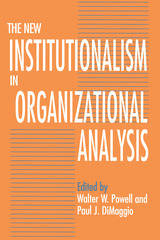 The New Institutionalism in Organizational Analysis
Edited by Walter W. Powell and Paul J. DiMaggio
University of Chicago Press, 1991 Long a fruitful area of scrutiny for students of organizations, the study of institutions is undergoing a renaissance in contemporary social science. This volume offers, for the first time, both often-cited foundation works and the latest writings of scholars associated with the "institutional" approach to organization analysis.
In their introduction, the editors discuss points of convergence and disagreement with institutionally oriented research in economics and political science, and locate the "institutional" approach in relation to major developments in contemporary sociological theory. Several chapters consolidate the theoretical advances of the past decade, identify and clarify the paradigm's key ambiguities, and push the theoretical agenda in novel ways by developing sophisticated arguments about the linkage between institutional patterns and forms of social structure. The empirical studies that follow—involving such diverse topics as mental health clinics, art museums, large corporations, civil-service systems, and national polities—illustrate the explanatory power of institutional theory in the analysis of organizational change.
Required reading for anyone interested in the sociology of organizations, the volume should appeal to scholars concerned with culture, political institutions, and social change.
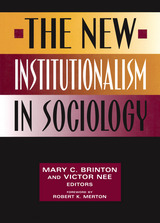 The New Institutionalism in Sociology
Mary C. Brinton
Russell Sage Foundation, 1998 Institutions play a pivotal role in the economic functioning of any society. Understanding the foundation of social norms, networks, and beliefs within institutions is crucial to explaining much of what occurs in modern economies. Recently, economic sociologists have explored how ties among individuals and groups facilitate economic activity, while "institutional economists" have focused on the formal "rules of the game" that regulate economic processes via government and law. The New Institutionalism in Sociology argues that a full understanding of economic life will depend on blending these new lines of research on institutions with traditional sociological insights into the social structures that lie at their core. The contributors to this volume explore many questions about the way institutions emerge and operate. How do grassroots mores and practices evolve to an institutional level? How do institutional norms then regulate economic activity, and what are the advantages of formal versus informal constraints? What are the sources of trust and cooperation in trading markets? What role do cultural networks play in the economic survival of immigrant communities? And how does conflict and bargaining affect the evolution of community norms? The New Institutionalism in Sociology also discusses how economic fluctuations arise from interactions between local agencies and the institutional environment. Among the topics addressed here are the influence of labor activism on the distribution of income, the association between highly competitive "winner-take-all" job markets and increased wage inequality in the United States, and the effect of property right conventions on technical innovation and productivity in pre-industrial England. A final section explores how deeply embedded cultural traditions have colored the transition from state socialism to market economies in Eastern Europe. The New Institutionalism in Sociology establishes a valuable template for a sociological conception of economic organization. Its interdisciplinary paradigm signals an important advance in understanding how institutions shape social and economic life.
|
|



